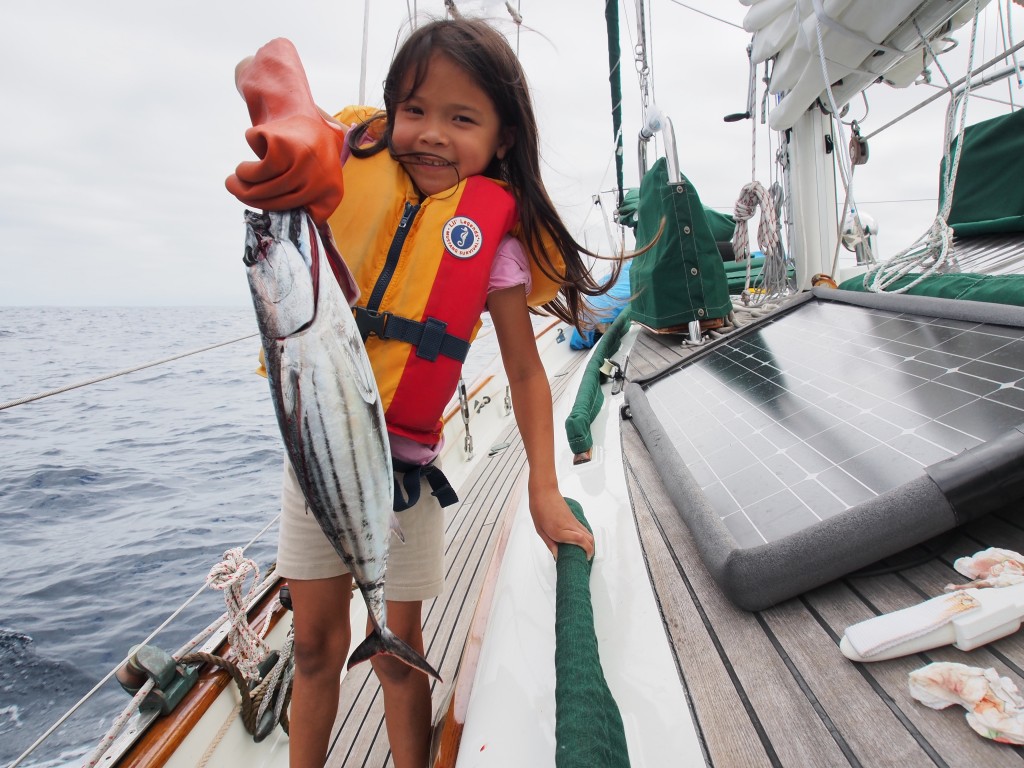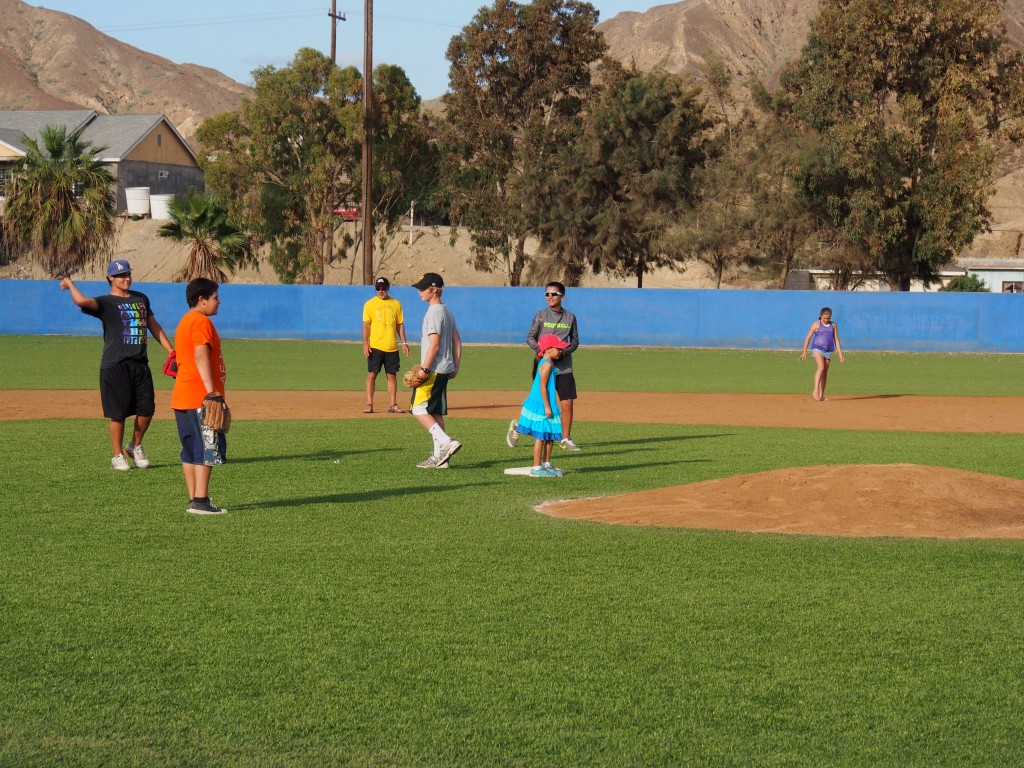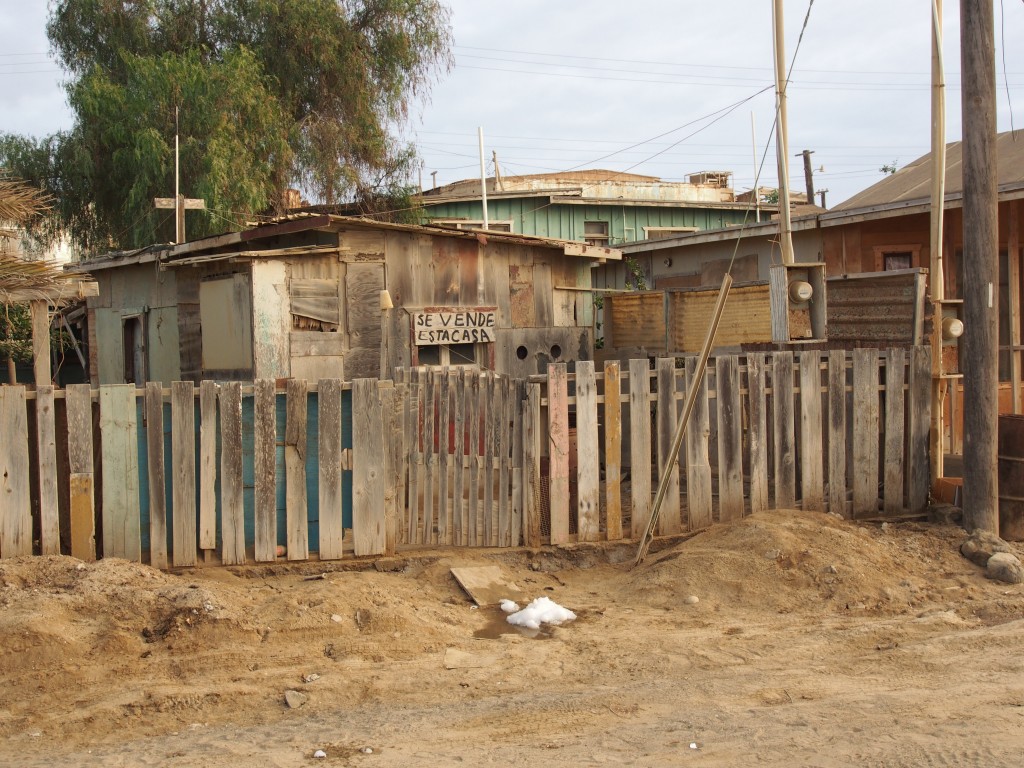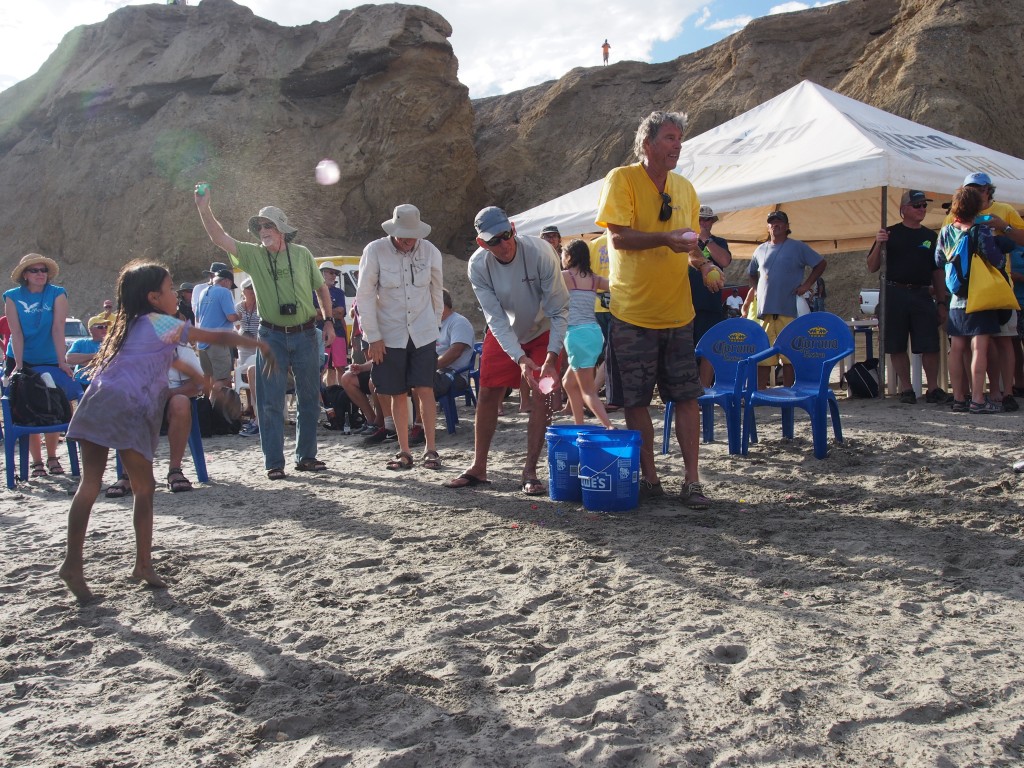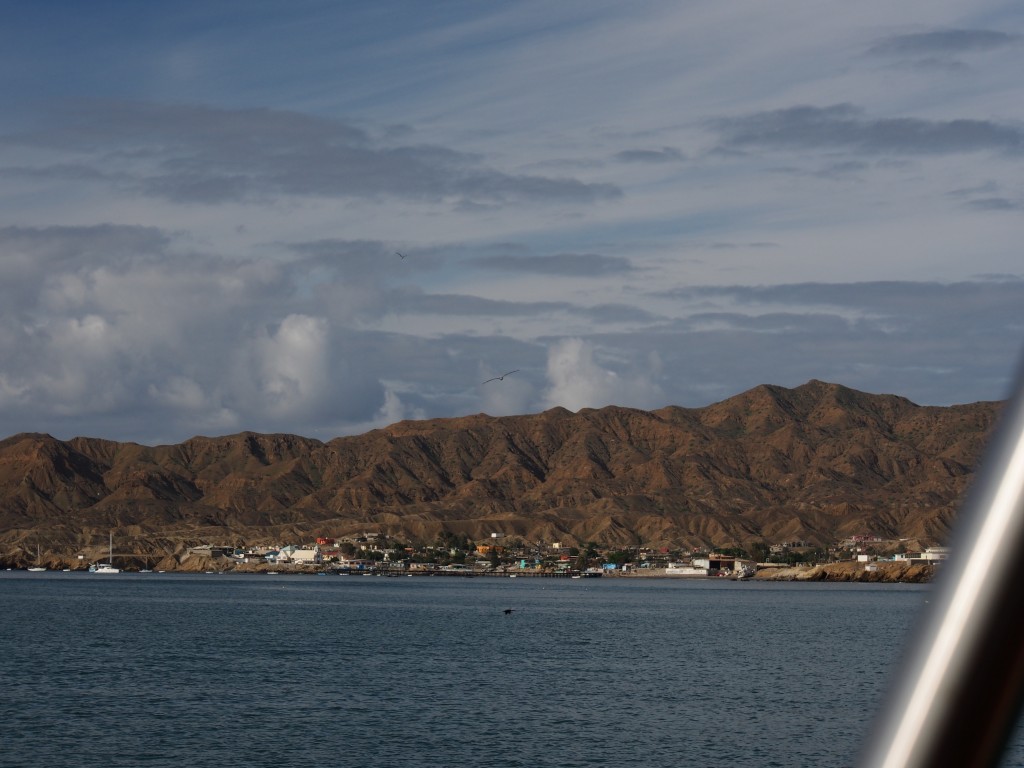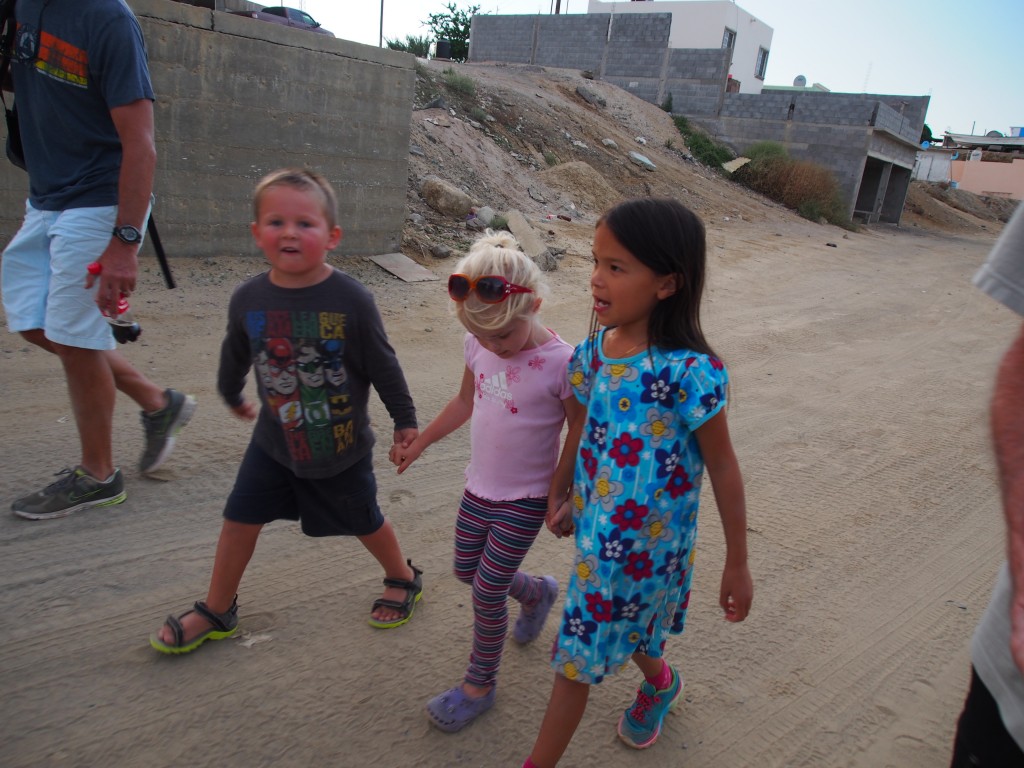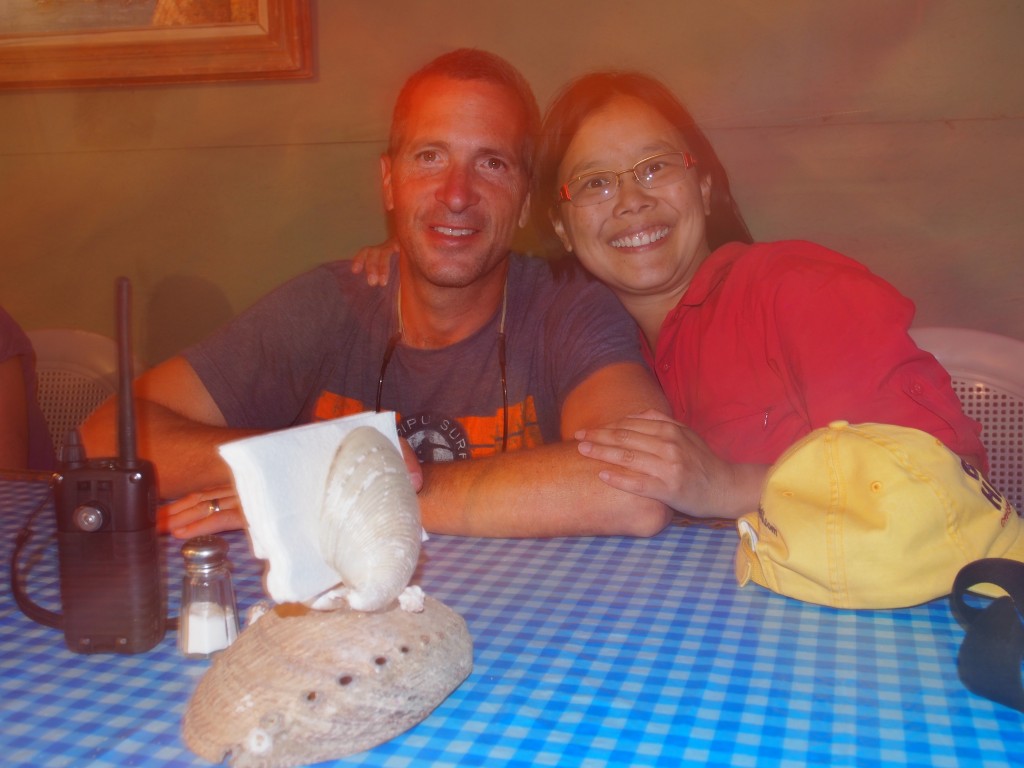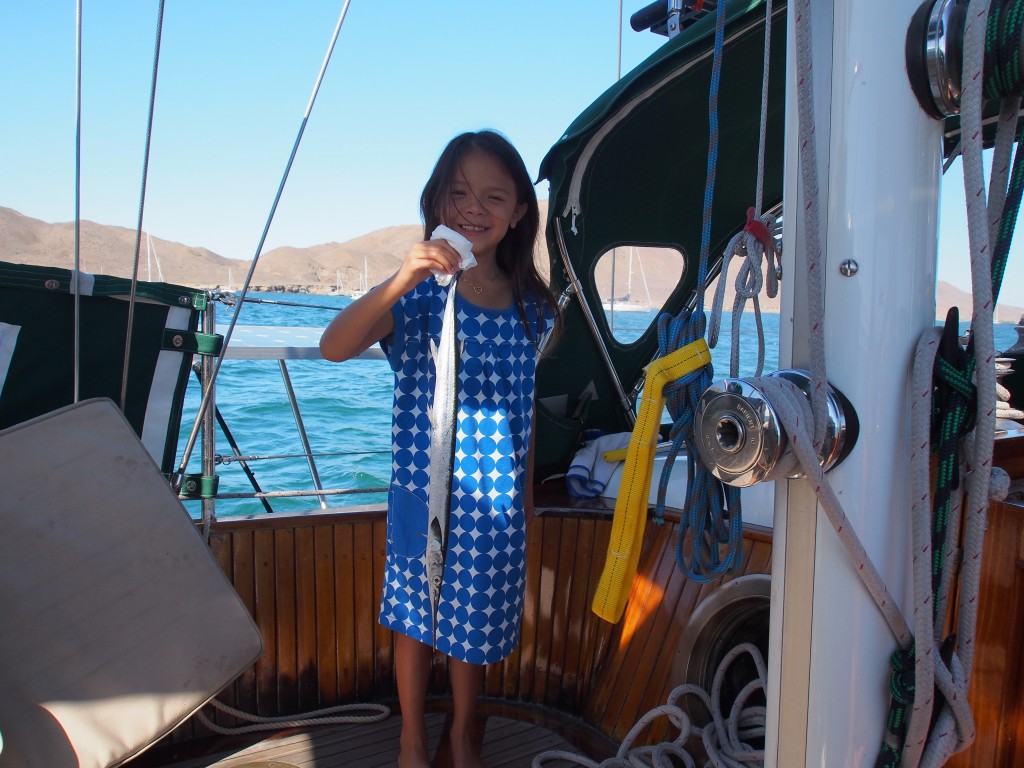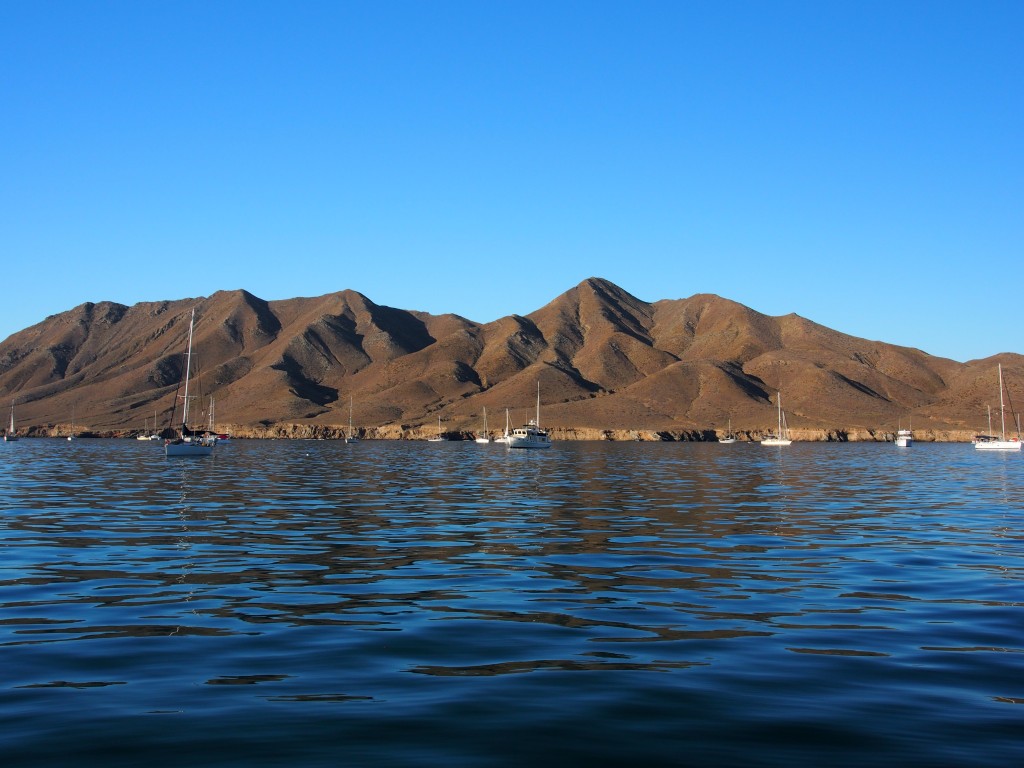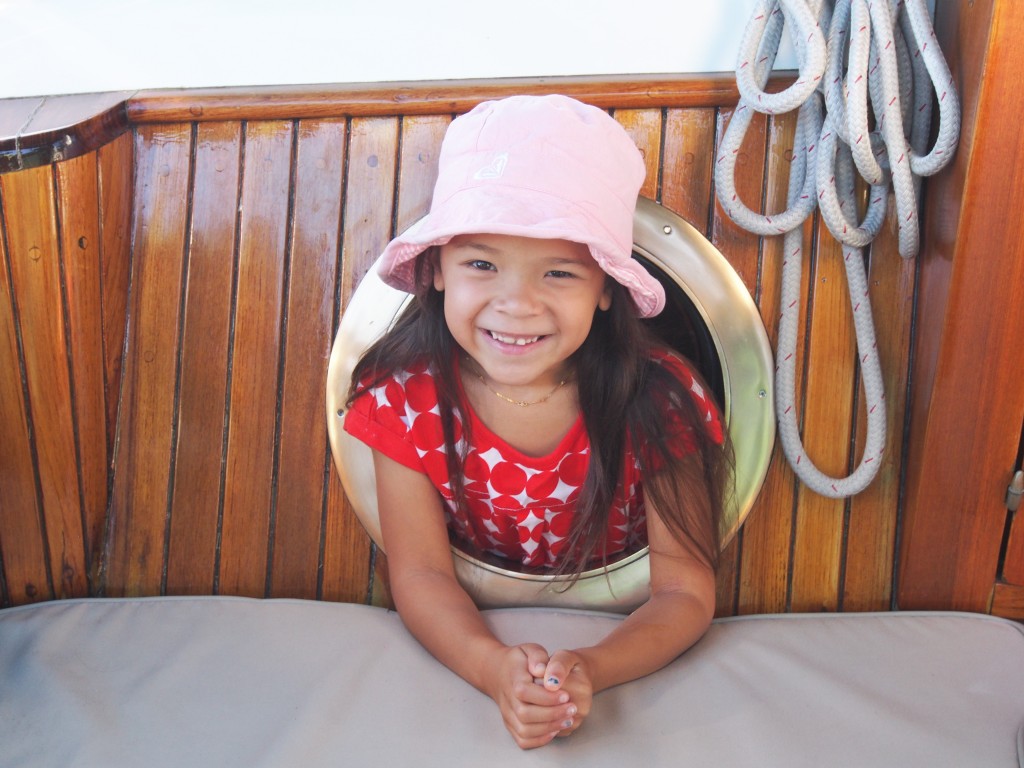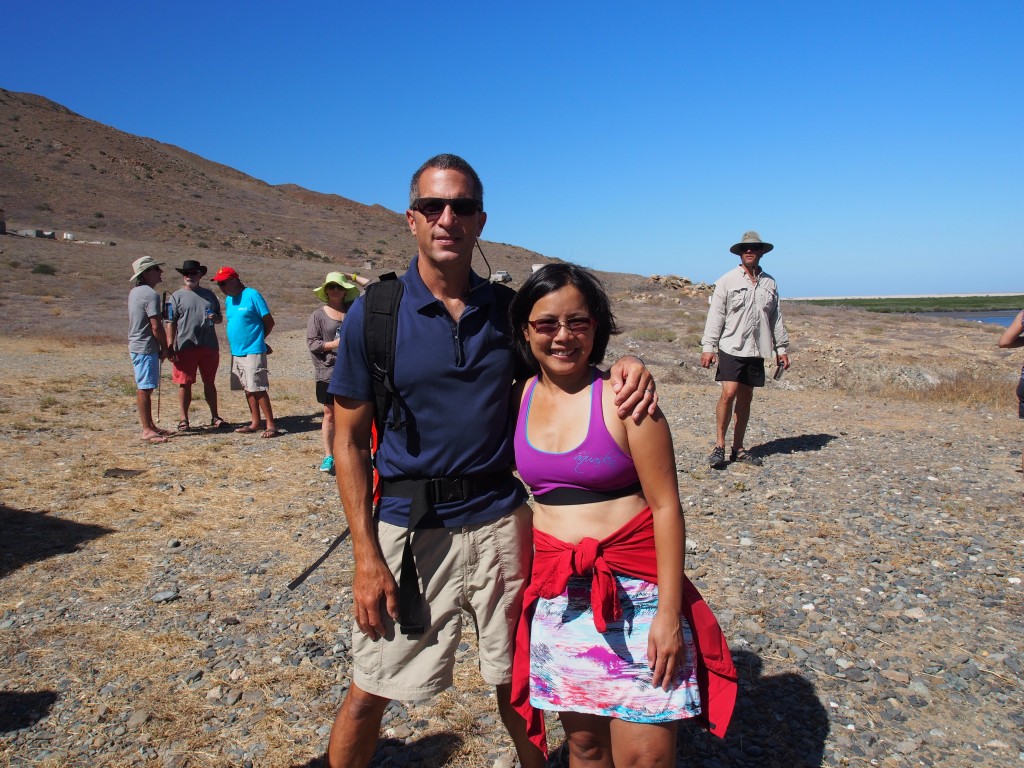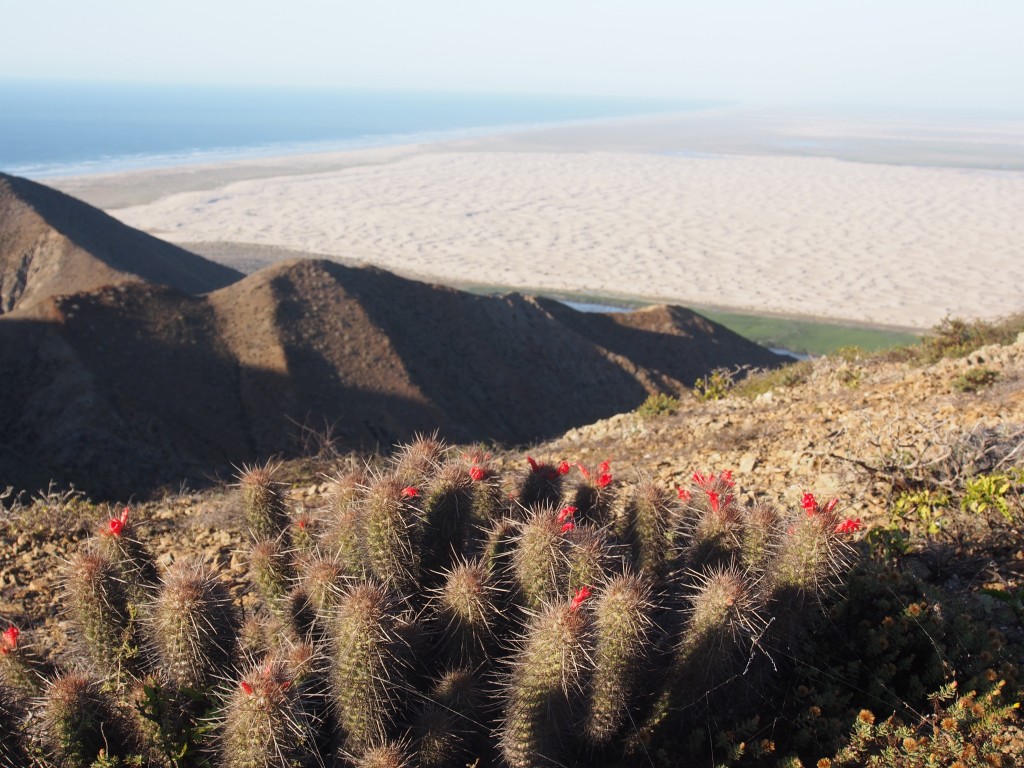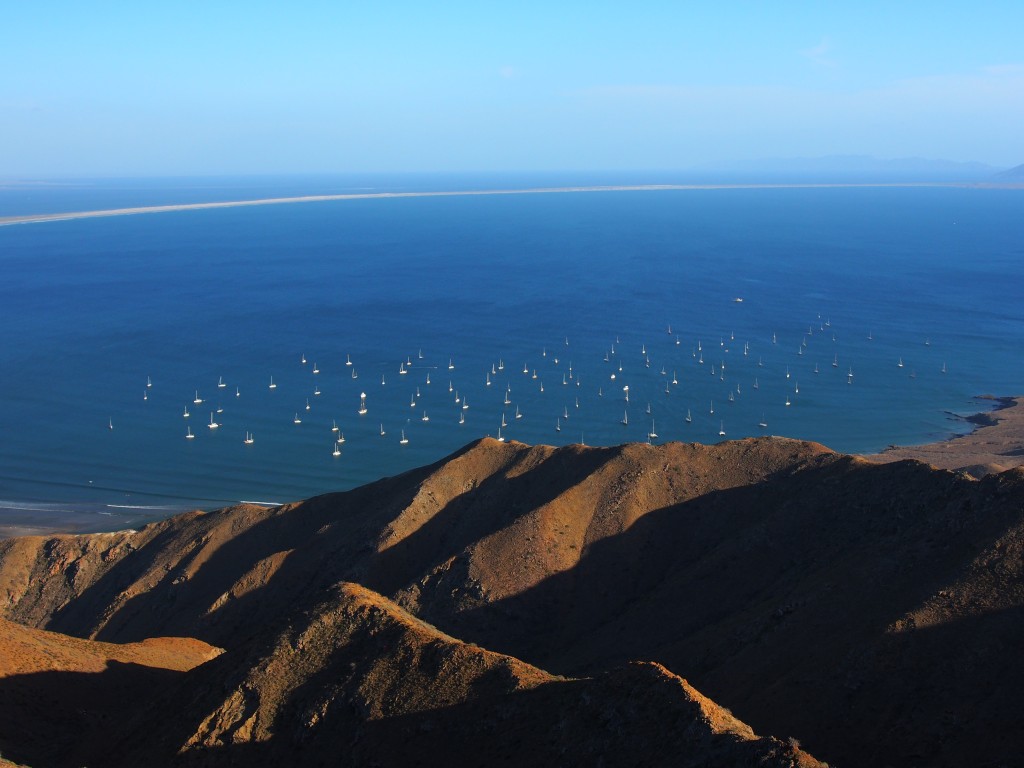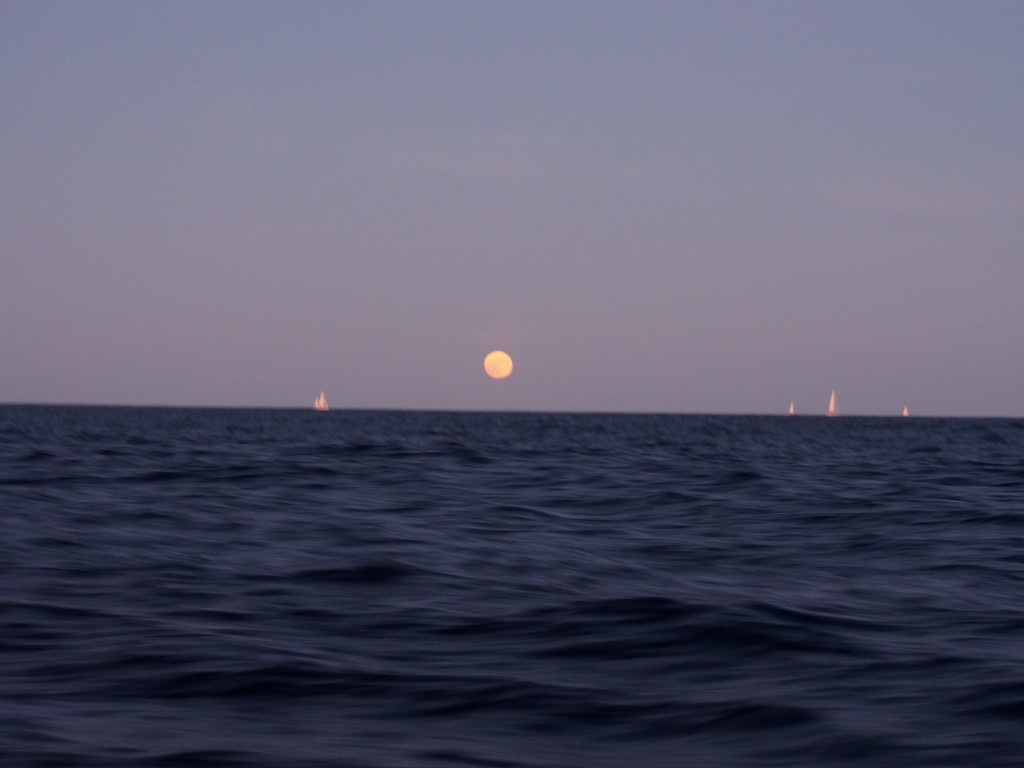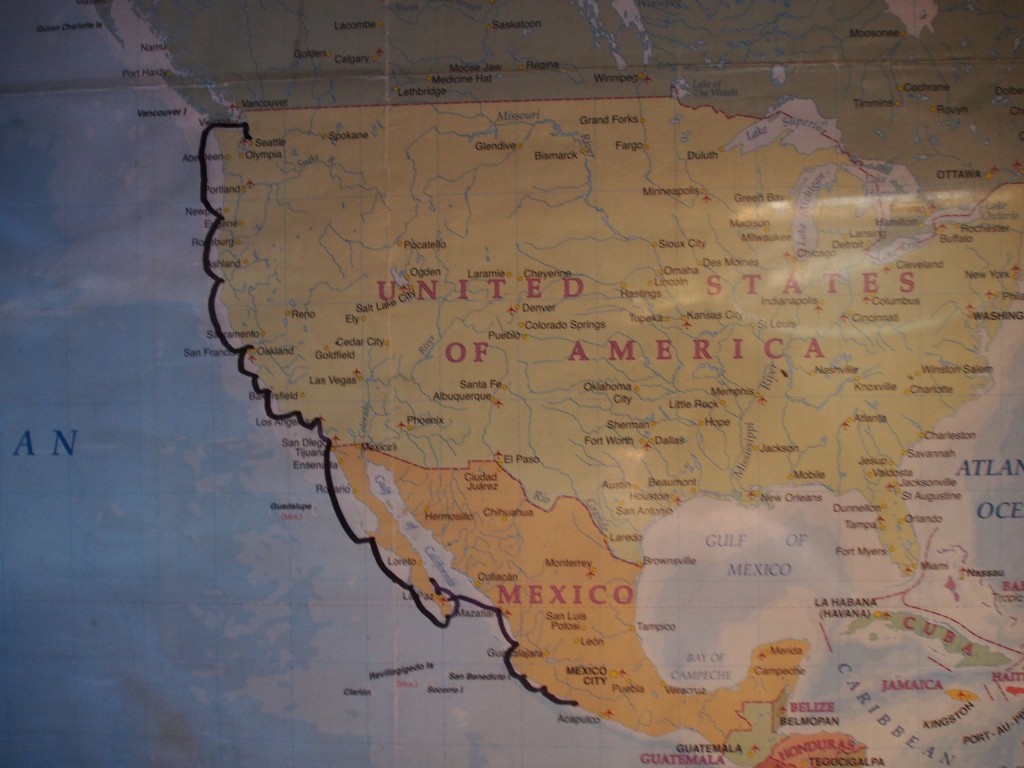[pin 4320] We’ve had such a pleasant stay in Mexico that it was sad to have the immigration and customs officials come to our boat to check us out of the country. We got our official “zarpe” which is the official document. Without this we’ve heard that it can tie your boat up with red tape at the next port of call in the next country. We’ve made many friends and had to say goodbye to some of them as our paths separate. We hope to meet up with them someday, at sea or on land. Flying Squirrel’s Dave & Amy and their kids Matthew & Morgan, who played minecraft with Jacintha are heading back up north doing the “Baja Bash” (sailing north up the Baja coast). We’ve had a few meals with Tom & Kelly and Sofie from Stochastic at the Vallarta yacht club (think cheese stuffed chicken wrapped with bacon) and for steaks at Sonora el Sur. They are also heading north. Yolo had Presley & Colton aboard and they had a few playdates with Jacintha. They are heading up the Sea of Cortez for the summer. Hannah on Ohanna is adventuring further south with her family towards Panama. Pelagic with Anna, Xander and Porter are currently in Panama awaiting their turn to transit the canal. We miss Billy and Gracie from Seahorse V and Bucket from Velvet Sky, they are south in El Salvador. We’re excited that Family Circus are also doing the Pacific Puddle Jump since Jacintha has so much fun playing with Amaia and Alina. They’re leaving a day later than us but will probably pass us along the way as their boat is faster – the advantages of having 2 hulls (catamaran). Korbut Rose will be crossing in April, we wish them good winds and hope to catch up with them in French Polynesia. Other boats on the puddle jump are Lorien, Daybreak, Sarita and Aussie Rules! Day 1, Mar 21, 122 nautical miles – We took off yesterday from Paradise Village heading towards another paradise. We were all chomping at the bit to leave (Jim most of all) but we had to have our last frappacino from Starbucks, McDonalds Happy Meal and Chinese take out lunch. After a couple of hours motoring, passing the dinghies of the regatta hosted by the Vallarta yacht club, we hoisted the sails and when we were just past Punta de Mita we turned off the engine and sailed. We had good wind with light seas. Perfect sailing weather. For dinner we had mushroom soup I had cooked the night before in anticipation of being seasick but the swells were minimal so I got to enjoy the meal as well. Our friend Lance has been sending us weather reports on our SSB email which is helping to determine which direction we have to sail. We were disappointed not to be able to hear the SSB radio net to see how many boats had left with this weather window including our friends. Overnight the sail was beautiful. 10 knots of wind with little swell. The stars were out and the lights from Puerto Vallarta grew dimmer and dimmer in the horizon behind us. Champagne sailing and the icing on the cake is that we’ve managed to tweak Ian (our Fleming wind vane) so he’s steering the boat perfectly on a beam reach, which means less work for us! Day 2 Mar 22, 140nm – Everyone except Jacintha was a little tired today but after a breakfast of chorizo omelette, mango and oranges, and naps for everyone, all is well. The fact we’re not hand steering makes a lot of difference in the exhaustion scale as well as having an extra person to take watch. Thank you Ian and Nick for being troopers. We sailed all day with all 4 sails up. A pod of dolphins swam by the boat this afternoon, jumping up and down around the bow of the boat. We also passed a couple of cargo ships and spoke to SV Kookaburra who were within VHF radio range but we didn’t see them. No bites on the fishing lines. On the SSB we found out our AIS tracker was interfering with our signal so we could communicate with the net tonight. We learnt that a bunch of boats took off the over the last few days. Day 3 Mar 23, 110nm – Today we had to head a bit more south to clear Isla Socorro. This meant that we were pointing further downwind and Ian did not like this point of sail as much. As the wind was lighter 8-10kts, it meant that there was not enough wind to steer our wind vane (he works on current and wind power). We took down the staysail and poled out the genoa which took a bit of effort. We had to hand steer a lot of the day. A flying fish visited our boat. It was tiny, about 2 inches long and had flown into the cockpit near Nick’s feet. We showed him the way back to the water. Jacintha has been super about being on the boat. She has been watching a lot of movies on the computer. High School the Musical 2 and the Lorax are her current favourites. Nick cooked pancakes this morning so she was very happy. Our batteries were running low today so we ran the generator to top them up. To conserve power we’ve turned off a lot of our electronics. This evening we instituted happy hour and had some margaritas with ice from the new freezer to celebrate. We had teriyaki chicken wings for dinner tonight. During night watch, I saw the Southern Cross low on the horizon. It’s such a comfort to me to see it and the pointers up there in the sky amongst the Milky Way. The moonless night makes the stars even brighter and I’ve been playing with Starwalk app on my ipad to show me the different constellations. Now all we have to do is bone up on our celestial navigation and dig out the sextant to find our latitude and longitude the old fashioned way. Day 4 Mar 24, 119nm – Today we passed to the South of Isla Socorro and headed more west again trying to catch the trade winds that we can see on our grib files (wind report). The winds were much lighter today and eventually we ran the motor for a couple of hours. We also made some water when the motor was running to fill up our drinking jugs. We are keeping a close eye on our fuel consumption as we only have what’s in the tanks (110 gallons left) and in our 2 jerry cans (10 gallons), so we have to be conservative. Having light winds is not fun as the boat tends to get swiped more by waves and rock and rolls sideways. Everthing swings and creaks, the sails flap and the boom rattles noisily. A bird decided to catch the bait on the fishing line trailing the boat and got it’s feet hooked. We had to pull it in and unhook it. We saw it take off after sitting in the water for a few minutes. We also took a solar shower on the deck this afternoon. It’s nice having clean hair and body and fresh clothes. Jim tried hailing any boats on the VHF but there aren’t any boats close by or they’ve turned off their radios. The SSB net at night is a social highlight for us as we find out where all the other boats are and what’s happened in their day.
Category Archives: Sailing
Fish On!
We’ve been having better luck catching fish lately, but nearly all of them have been Skipjack Tuna, which are fun to catch because they put up a good fight for their size. Their meat is dark red and tastes good when prepared correctly—not something you want for sushi though.
Sailing along at 7 knots near Chamela (Karen was at the helm and I was down below having a siesta), we heard the line flying out of the fishing reel. By the time I got on deck, it had ran with more than half the line and was still running. Karen worked on slowing the boat down while I tried reeling but it takes a while for a 16 ton boat to slow and the fish was still running line off the reel so I knew it wasn’t another small skipjack. About 20 minutes later a very tired 20 lb Yellowfin Tuna (commonly called Ahi) was finally alongside the boat and we used a gaff to bring it aboard. Jacintha was very excited to see such a big fish (by our standards anyhow). I cut the gills and bled it in the water by tying a line around the tail and dragging it for 5 minutes (this supposedly improves the taste). Karen did all the prep work after we anchored and we had grilled yellowfin that evening. The collars were especially good and we also ate some sashimi-style with wasabi and soy sauce. The following day Karen chopped up some tuna, deep fried it in tempura batter, and served it with aoli and picante sauce on fresh tortillas for some amazing tasting Fish Tacos.

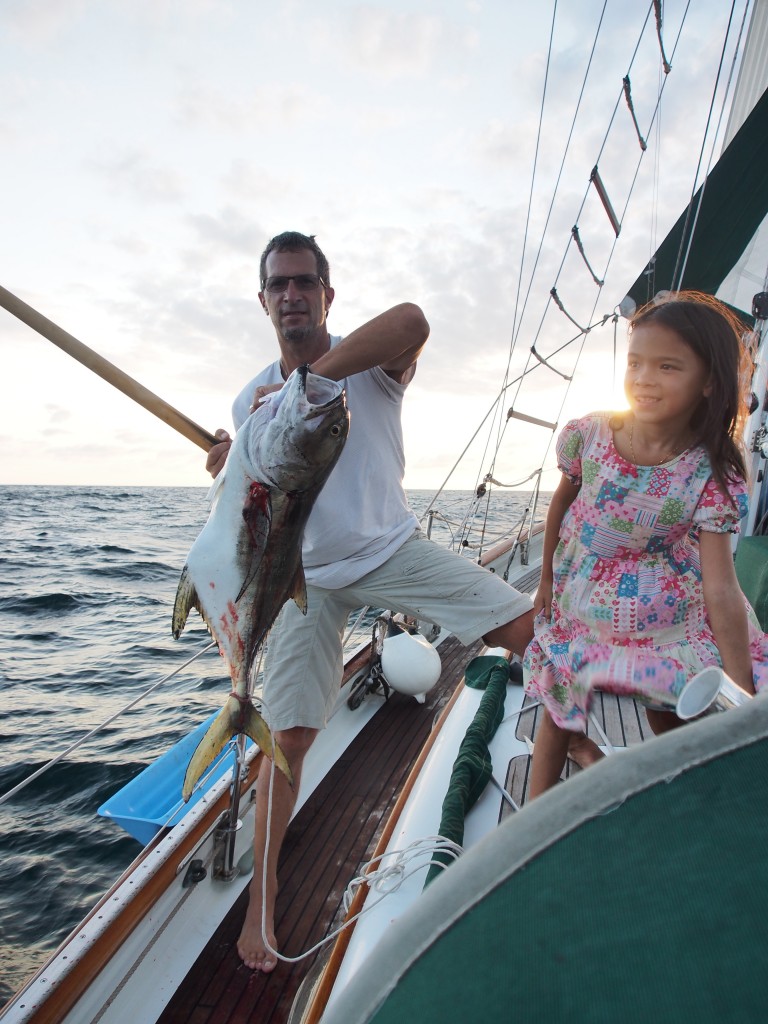

Log Stats–3450nm
At a latitude of 17 deg 35 min N, Zihuatanejo is more south than the big island of Hawaii, and is the furthest south we will go until we depart for the South Pacific in March. The air temperature was a predictable 90 deg F and the water was around 82 deg. Seattle is 47 deg N, so we were 30 deg of latitude away, and since each degree of latitude is 60 miles, it works out to 1800 miles south of Seattle. Since we also traveled a significant distance east (about half the distance from San Francisco to Philadelphia), and made a lot of side-trips, our total mileage from Seattle to Zihuatanejo is 3,450. We’ve been tracing our journey showing all of our main stops on a map:
Heading Further South
So far, we have executed our overall cruising plan just as we planned it back in Seattle–that is, sail from Seattle to San Francisco with the Coho Ho Ho rally, reach San Diego by early November, sail to Cabo San Lucas with the Baja Ha Ha rally, sail up into the Sea of Cortez to La Paz, cross the sea to Mazatlan, and head south to Banderas Bay. Between those major stops, we had numerous anchorages on islands and remote villages and saw some pretty amazing things. We are now almost 1/3 of the way through our 14 month adventure. It would have been easy to spend 3 more months in Puerto Vallarta getting ready for the Pacific Puddle Jump to the Marquesas, but we want to see as much of Mexico as possible, so we planned a 670 mile round trip journey down the coast to Zihuatanejo during the month of January. We will then spend February and half of March in Puerto Vallarta preparing for the crossing. So once again we parted ways with other boats we have become friends with, and began heading further south. Our sail plan was to break the trip to Zihuatanejo up into 4 legs and visit places like Tenacatita, Manzanillo, Santiago, Ixtapa, and others.
Tenacatita
We caught a nice wind out of Banderas Bay (La Cruz), sailing downwind at 7-8 knots for 8 hours under full main and genoa. Steady winds of 20 knots moved us along nicely and since we were ahead of schedule, we decided to go all the way to Tenacatita, 122 miles from La Cruz. Unfortunately, the wind died suddenly and we found ourselves motoring the second half, but still reached Tenacatita by 10am the following day, where we anchored in a nice bay alongside a dozen other boats. We went ashore and met 2 guys gathering coconuts. The method was to find trees that had reachable branches with coconut clusters BELOW them, and shake the branch until some coconuts fell. Not easy work but well worth the effort. Jacintha helped with reaching some branches that were too tall for us to reach! We spent another full day at Tenacatita and played Bocci Ball on the beach with fellow cruisers, then joined them at the restaurant/bar along the beach afterwards. Jacintha played on the beach with a girl her age who was vacationing with her family from Guadalajara. Towards evening we took our dinghy about a mile up an estuary that weaved its way through thick mangroves. It was like a real jungle cruise (as opposed to the one we did a few months ago at Disneyland) with lots of Pelicans, Herons, Egrets, crabs, and insects. We didn’t spot any, but crocodiles are known to make this their home. We rushed out of there at the first hint of mosquitoes. Back at the boat, Karen finished covering some port inserts with fine mesh for mosquito protection and we lit a mossy coil (our first night there we were unprepared and left the ports open until we realized we were inviting many blood-thirsty mosquitoes inside).
We started getting into the habit of raising our dinghy up to the lifelines every night using a halyard. We were advised that although most places are safe, every year there are cruisers who wake up in the morning to find their dinghy gone. We also remove the engine from the dinghy and hoist it up to the stern bracket overnight. Keeping the dinghy out of the water overnight has the added benefit of slowing down barnacle growth on the bottom.

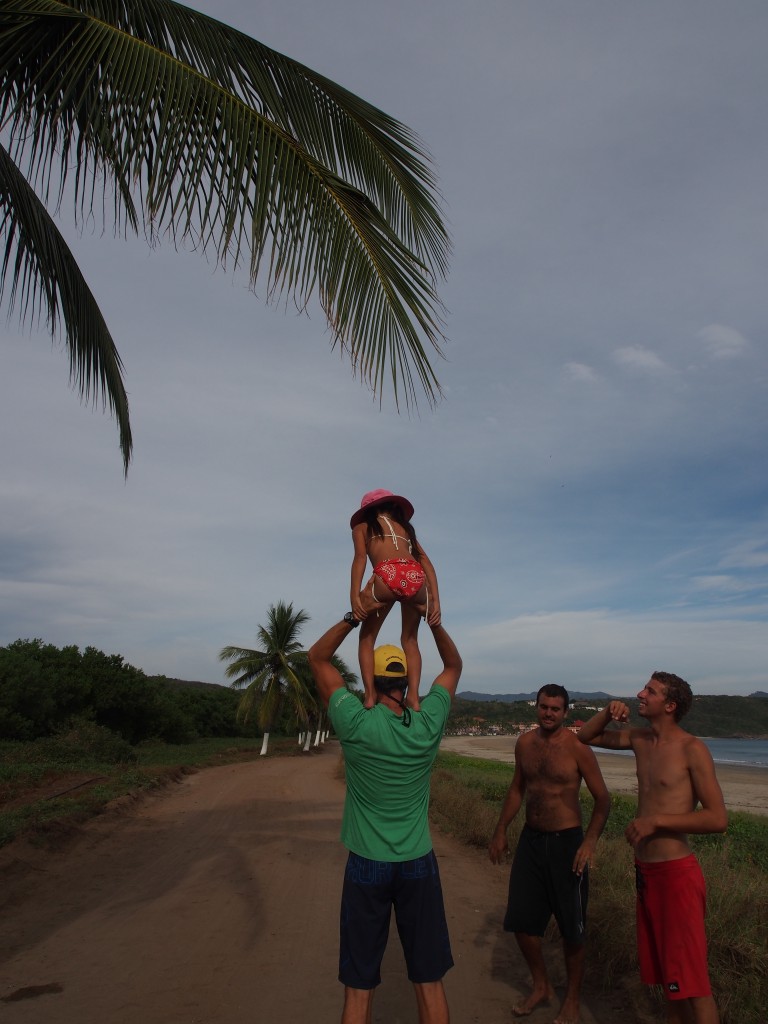
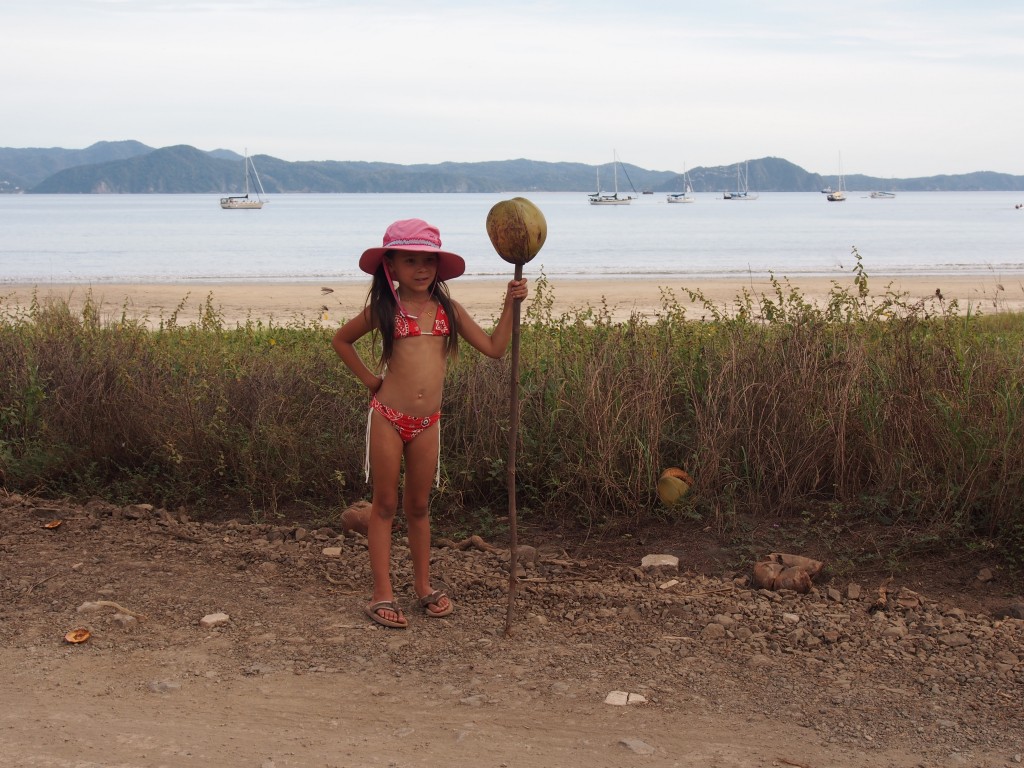
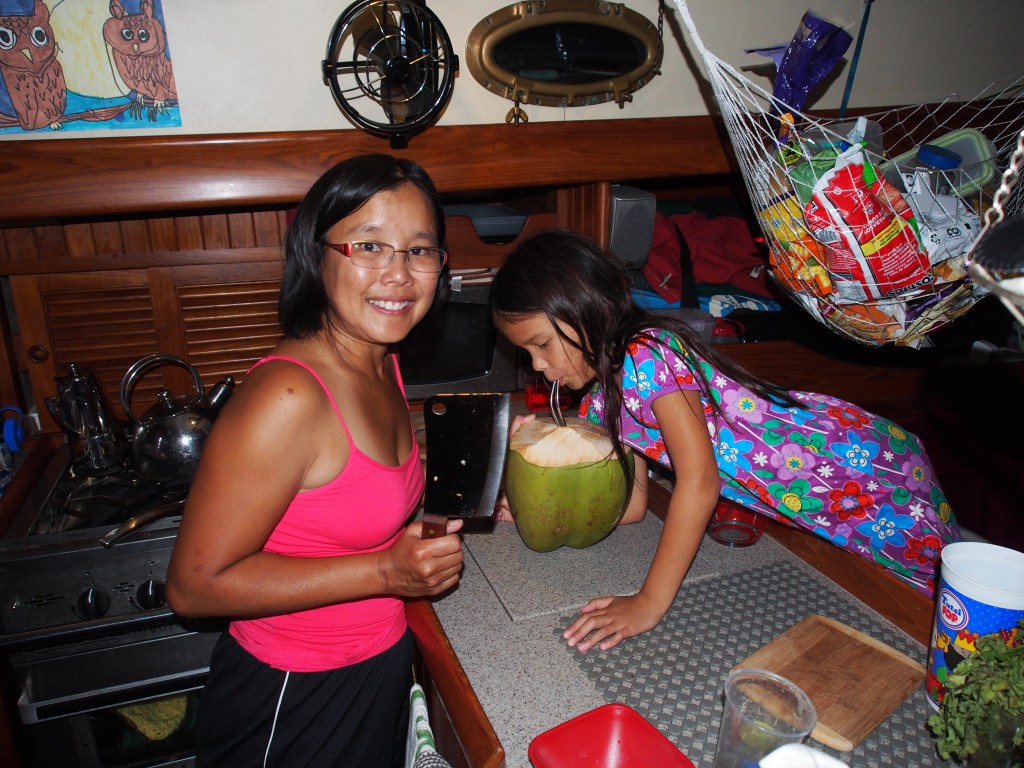
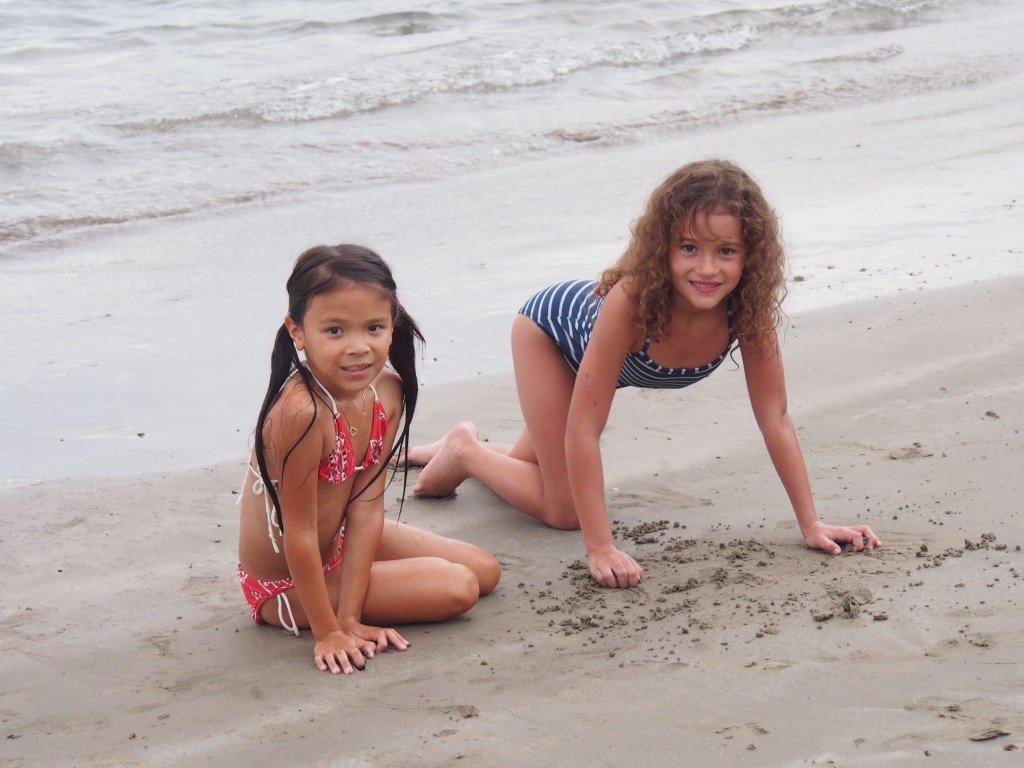
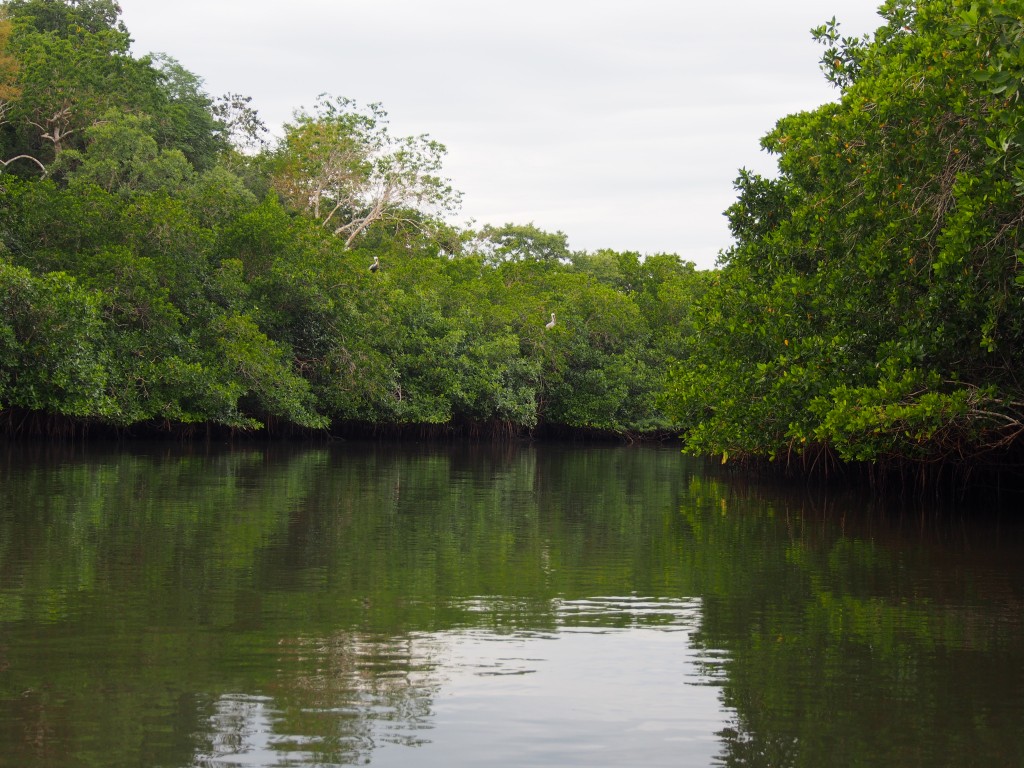
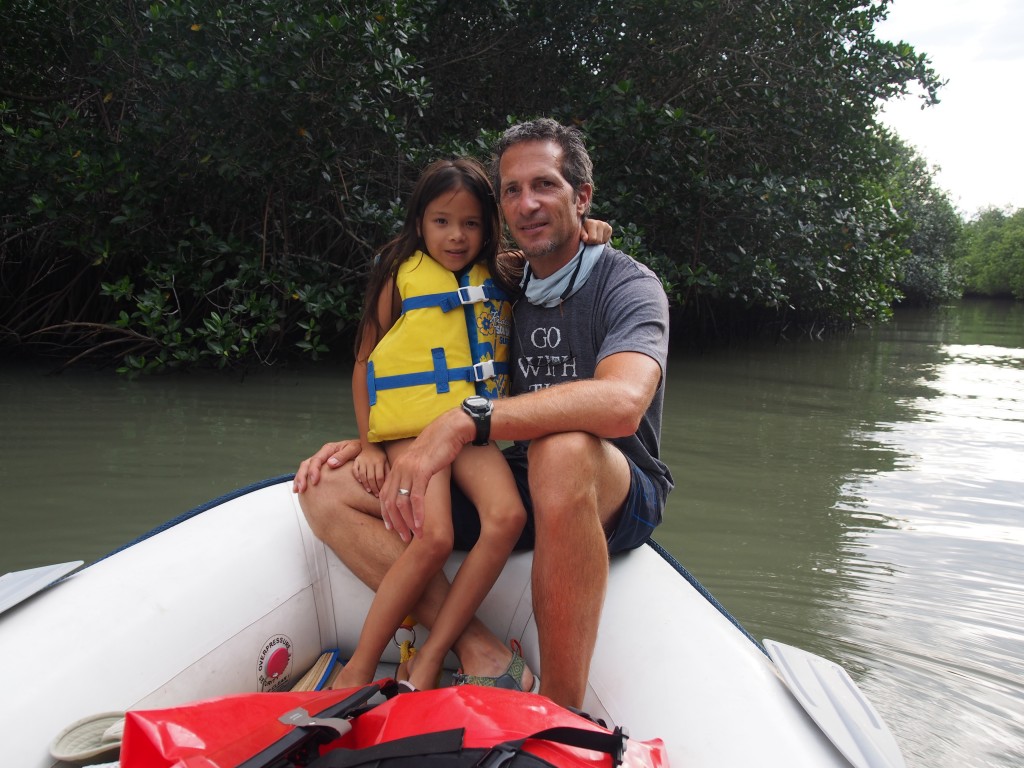

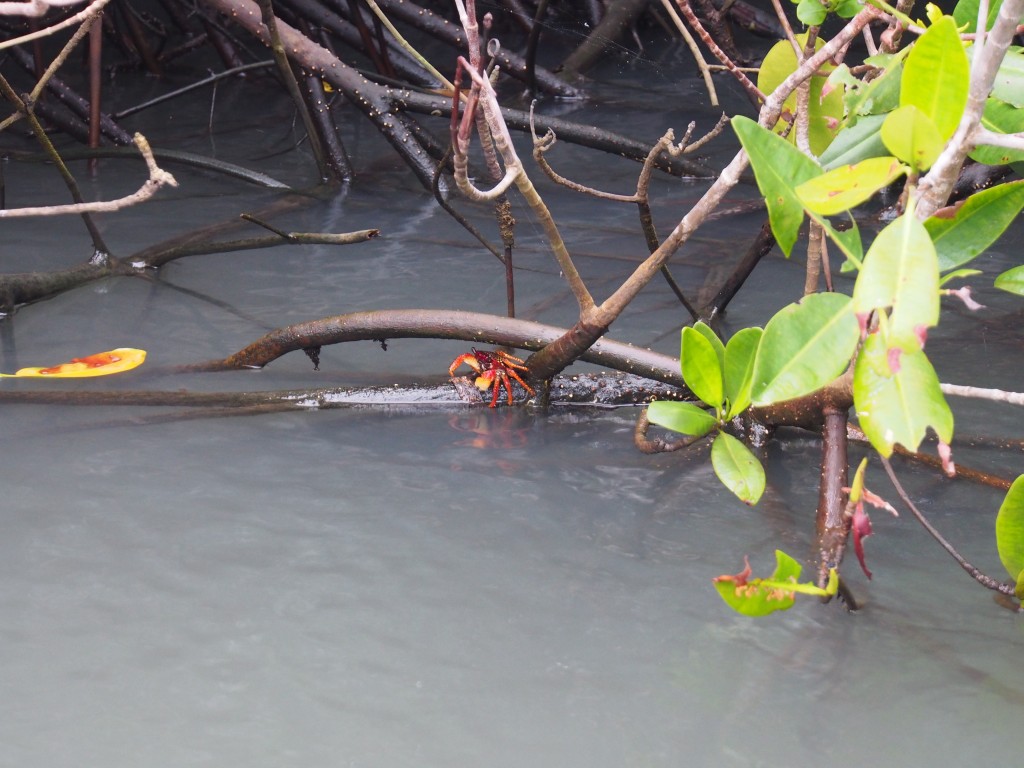
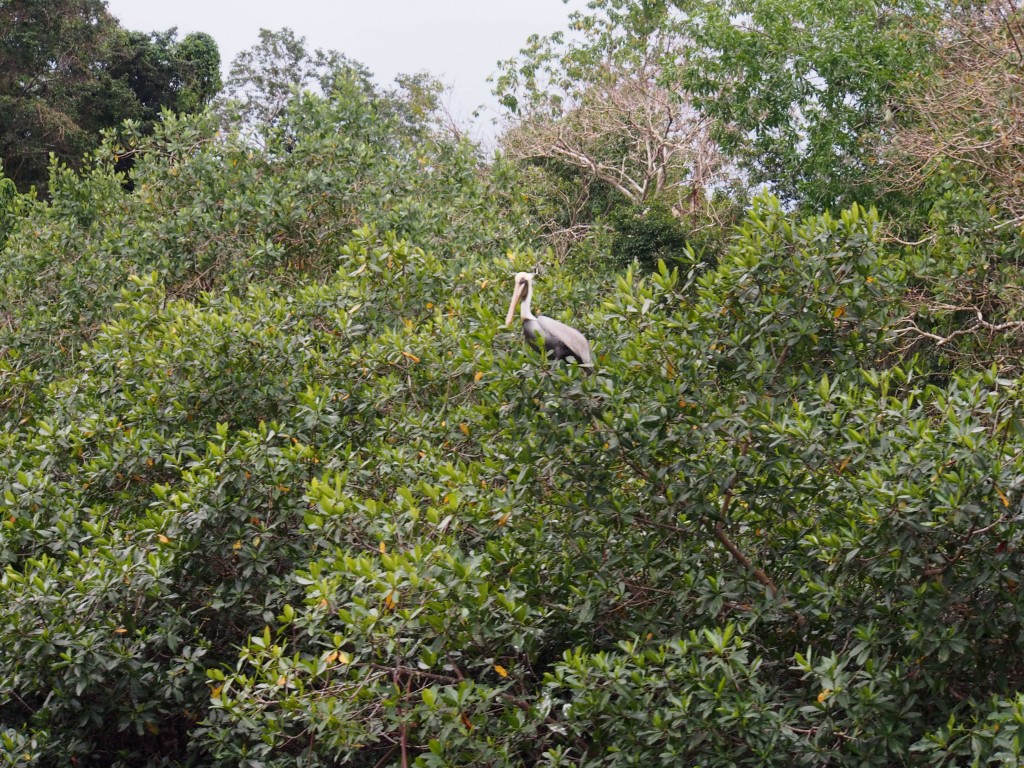

Manzanillo
A morning departure from Tenacatita put us in Manzanillo at 2pm. Winds were light so we motor-sailed the 36 miles. We anchored in front of the Las Hadas Resort, known for its unique white-stucco architecture with domes, spirals, and arches. For 200 pesos ($18), we could dock our dinghy there and use the amenities–a huge pool, showers, wifi, and restaurants. There was also a well stocked marine store and a fabulous gelato store within the resort.
We spent 3 days anchored in Manzanillo using the amenities of the Las Hadas Resort. The view at the anchorage was great, the price was right (free!), and we enjoyed the 5-star resort for less than $20 per day. It was hard to leave, but Zihuatanejo was calling….
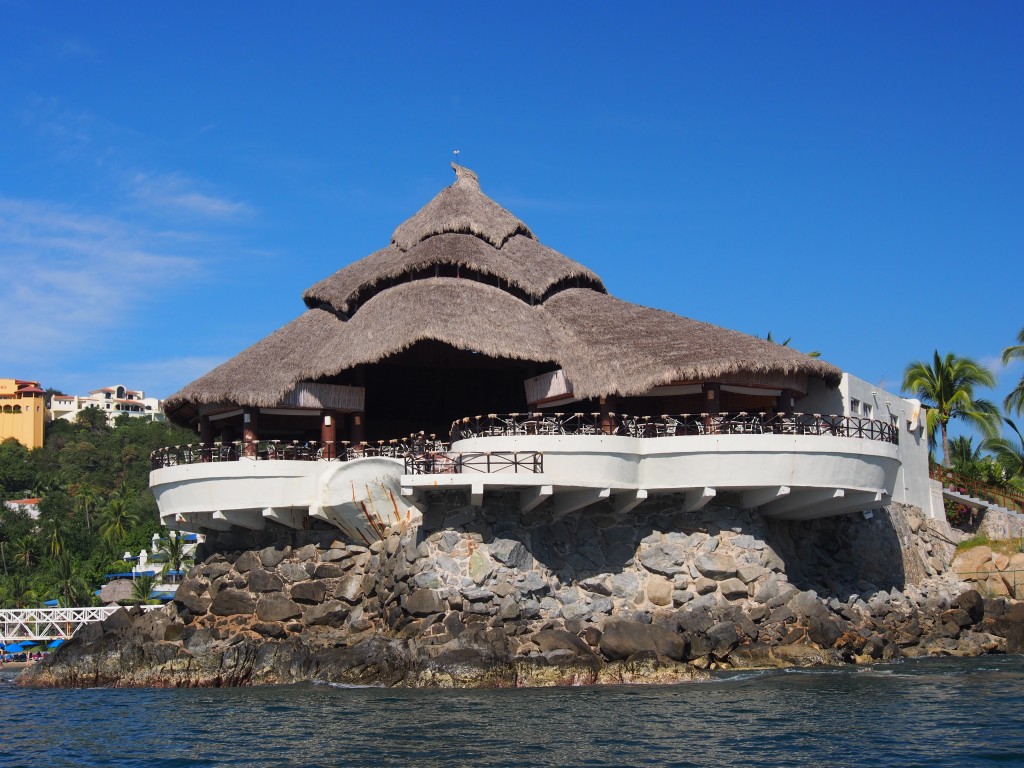

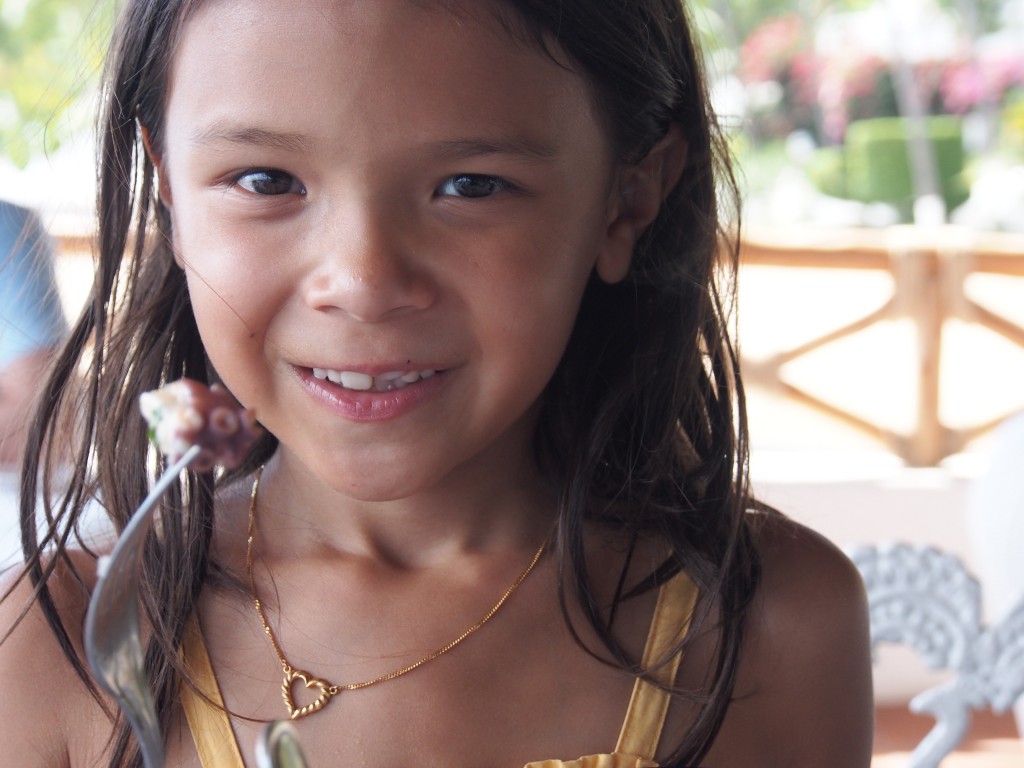
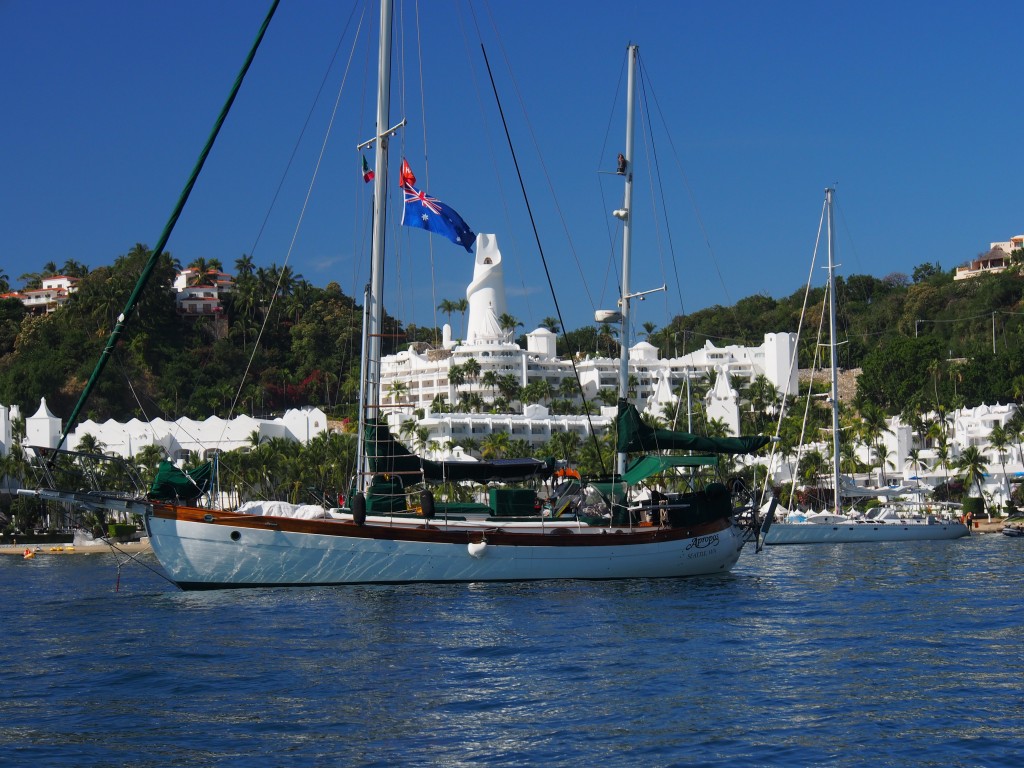

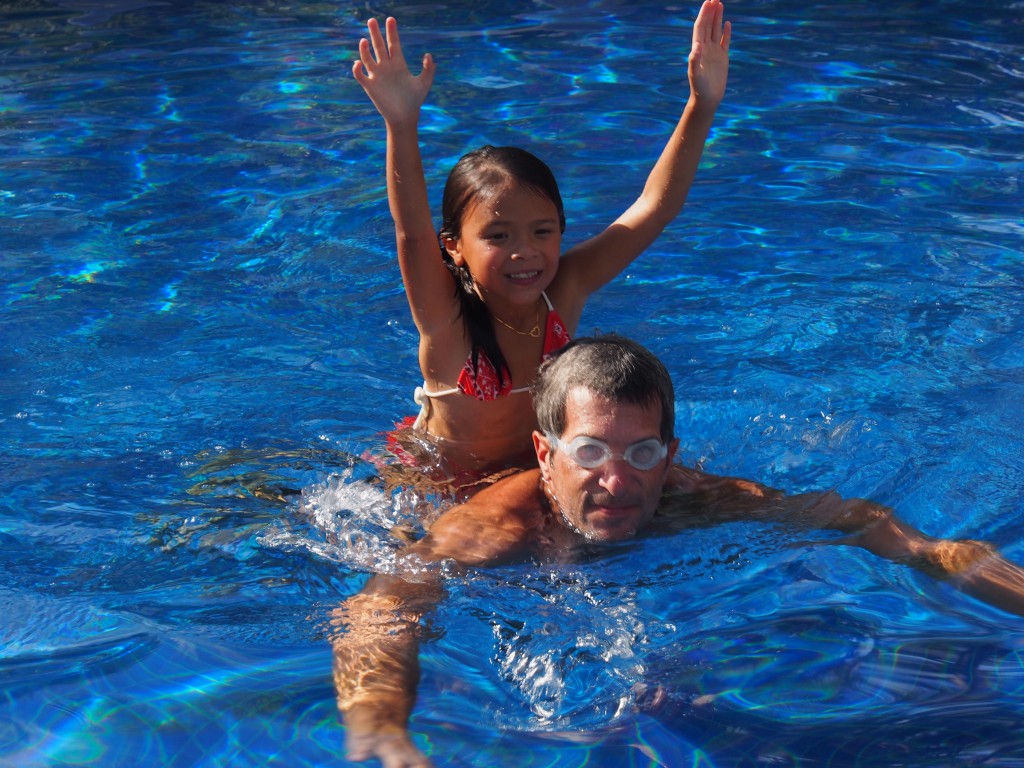
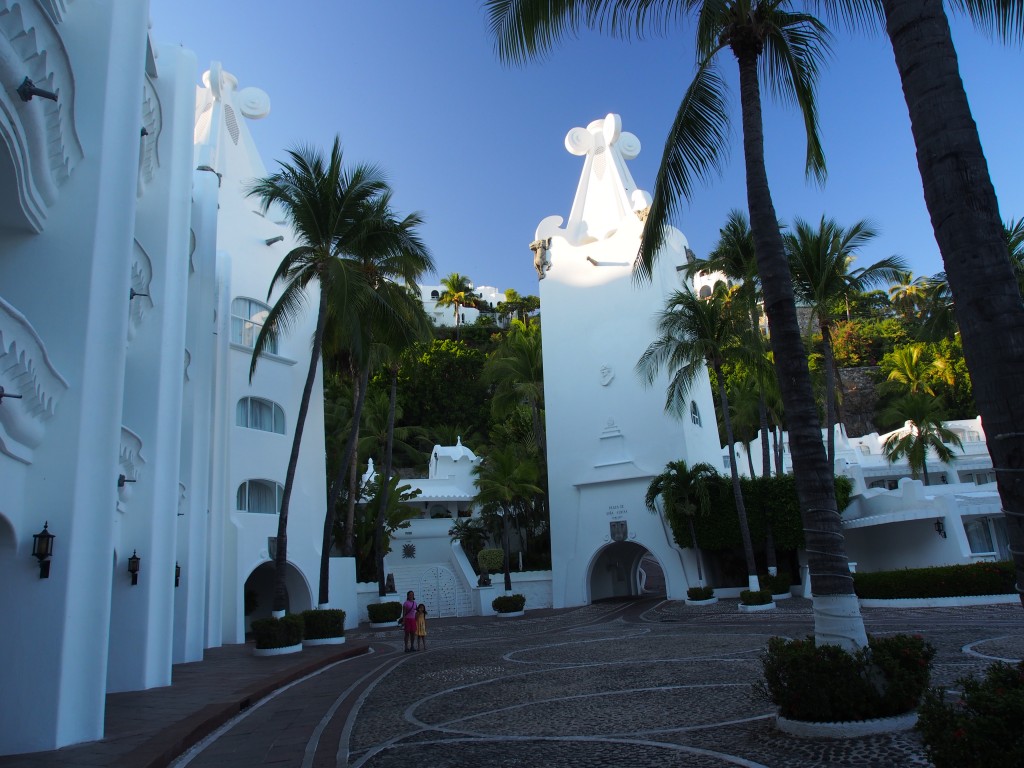
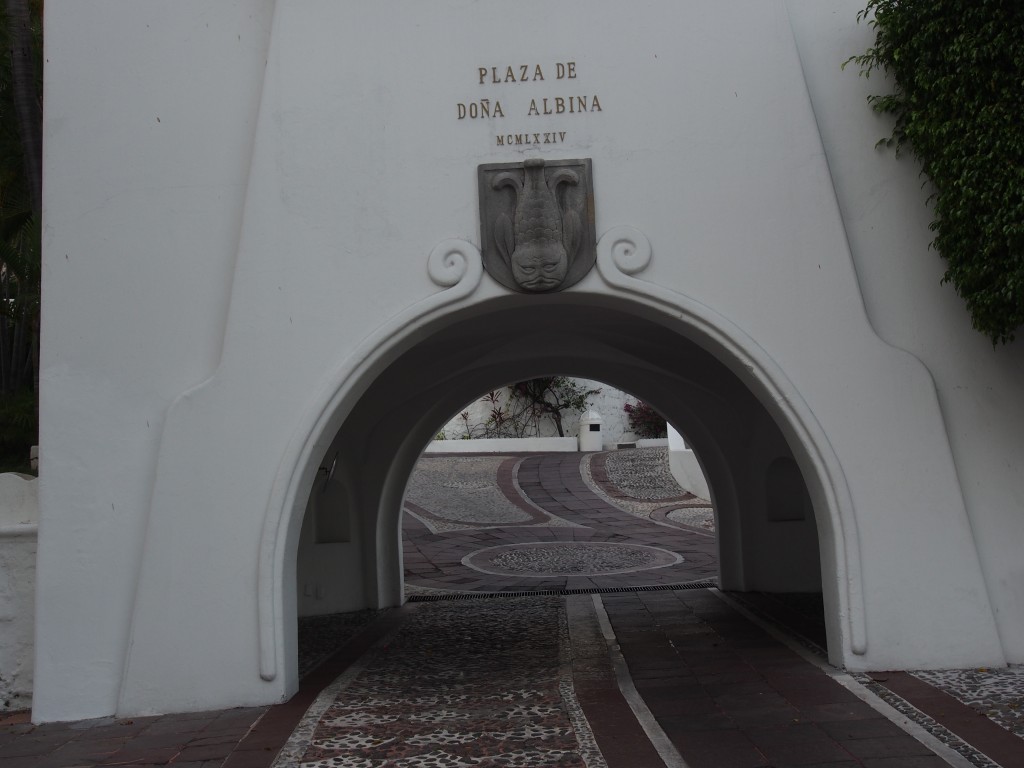
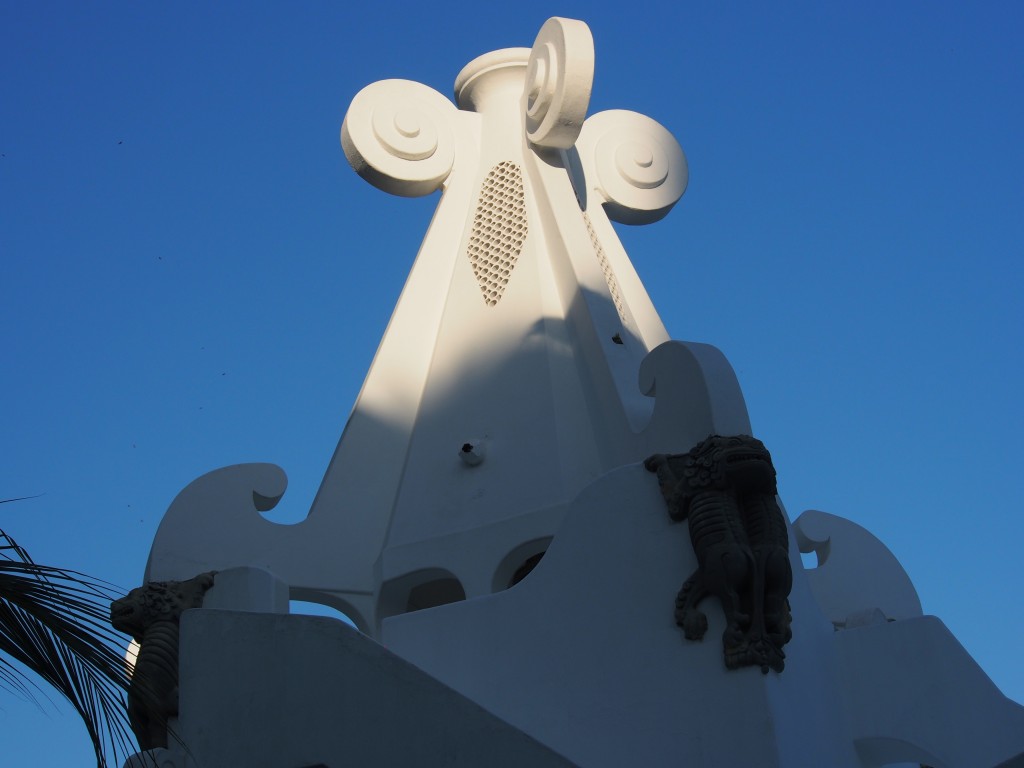
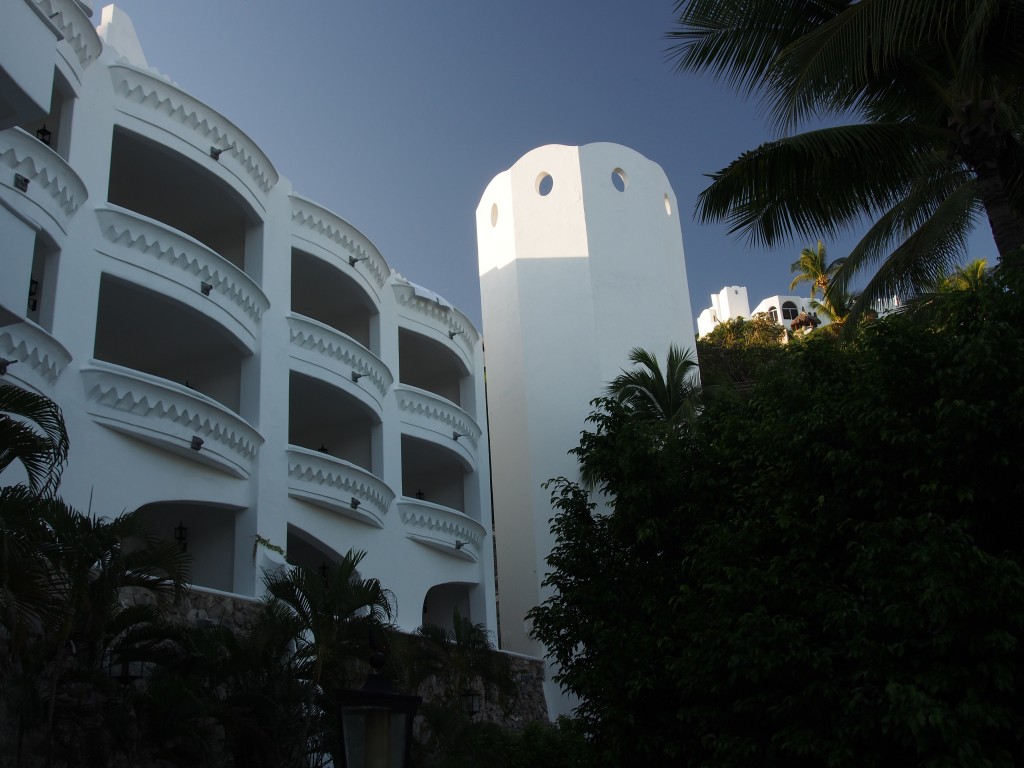
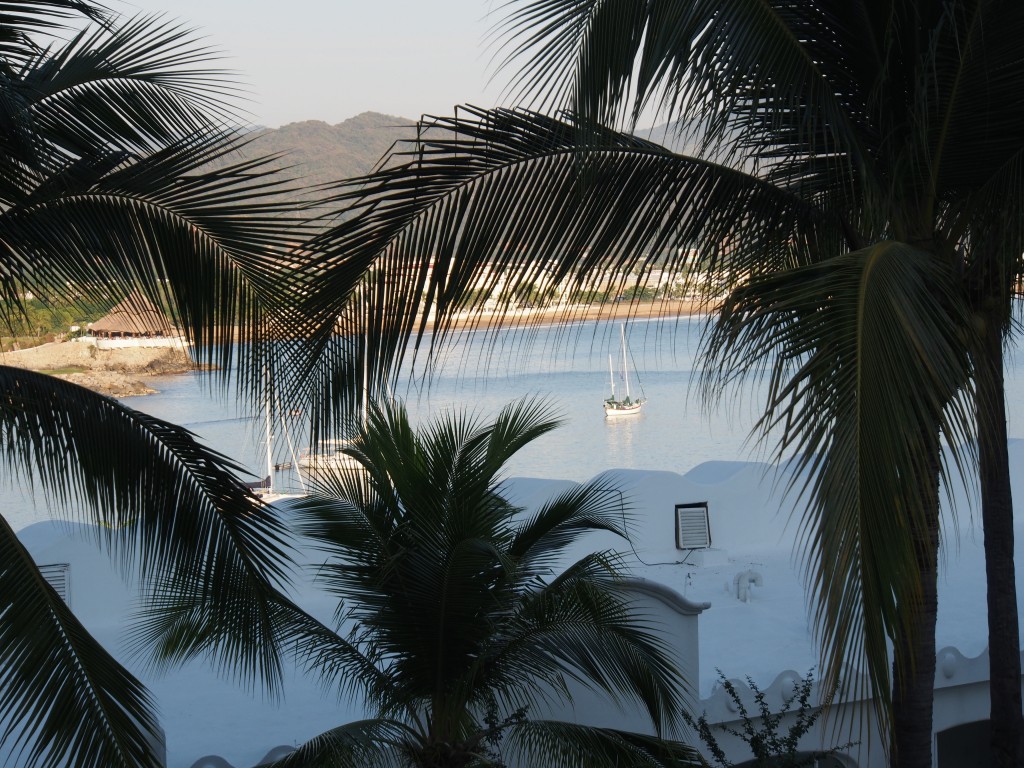
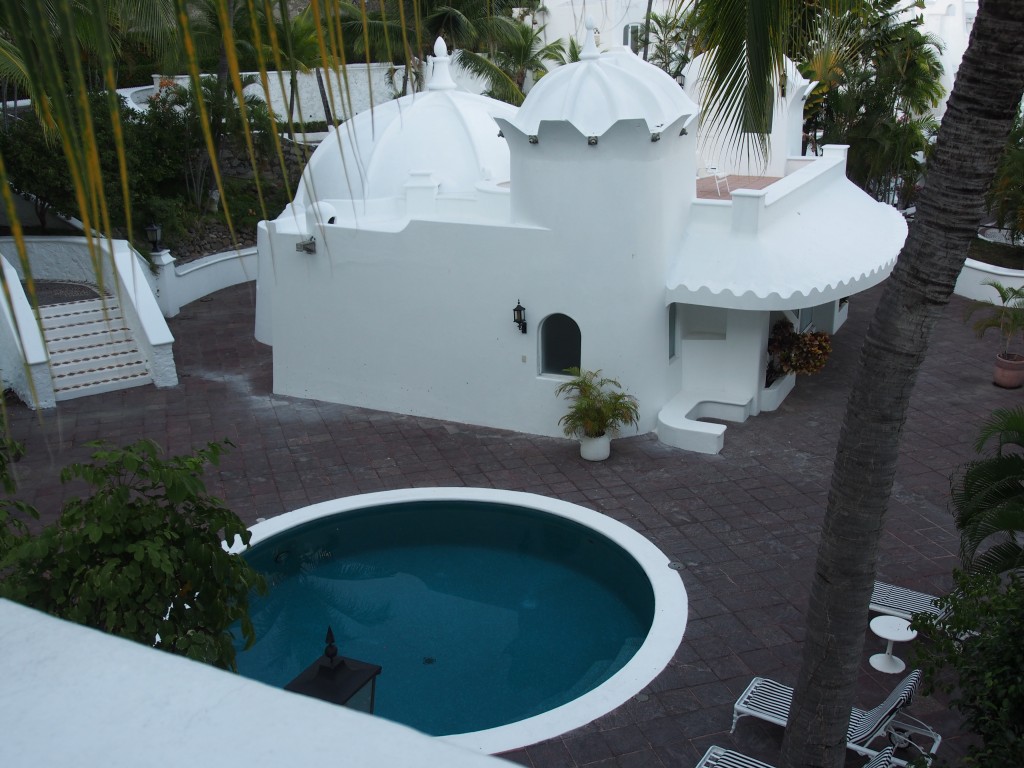

Isla Isabel
A mid-afternoon departure from Mazatlan was timed for a mid-day arrival at Isla Isabel, about 95 miles south. We left at high tide and crossing the bar was very rough with large waves escorting us out of the bay. Winds were blowing 20 knots from the north, and wind waves were steep, so the ride was uncomfortable but fast. We sailed throughout the night with a double-reefed main and partially furled genoa. The winds calmed a few hours from Isla Isabel and we motored the final leg. As we approached the small anchorage on the southern end of the island, we found it full with 6 boats. Our guidebook showed an alternative anchorage on the east side but warned about the rocky bottom and it’s reputation for swallowing anchors. The water was crystal clear so we could see the rocks on the bottom interspersed among the patches of sand. We found a sand patch to drop the anchor on in 20 feet of water and let out 60 feet of chain. We also tied a line onto the anchor crown and floated a buoy on it in case the anchor fouled around a rock. This anchorage is less protected but since the winds had calmed, Apropos did not roll much.
Isla Isabel is an isolated volcanic island 18 miles off the mainland coast and is nicknamed the “Galapagos of Mexico” because of its large number of nesting birds and resident iguanas. Like the Galapagos Islands off Ecuador, Isabel is isolated in the Pacific Ocean and relatively free of natural predators.
By the time we anchored and got the dinghy in the water, the sun was setting and there wasn’t enough time to explore the island, so I dove in the water to inspect the hull. I noticed the prop zinc was gone and small barnacles were covering most of the hull, so I spent about 2 hours scraping with a plastic putty knife. In the morning, we took the dinghy to the southern anchorage and went ashore near the small fishing camp. Along the hike to the light tower at the top of a hill, we walked under the canopy of trees full of nesting frigate birds. The male frigate proudly displays his colors to attract a mate by inflating his bright red throat pouch (gular pouch) and making a whistling sound. Since they can neither swim nor walk well on land, they like to perch in the treetops or on the ground with their wings spread wide open. Along the steep mile-long trail, we spotted iguanas and lizards. The top of the hill was covered with nesting blue footed boobies. They allowed us to approach them to within about 10 feet before flying away, except for the females who were sitting on their eggs. With no predators on the island, these birds seemed curious but unafraid of us. We spent an hour at the peak, then returned to the beach and cooled down in the tide pools along a sandy beach. Before returning to the boat, we bought 3 red snappers from the fishermen for 30 pesos (about $2). We grilled 2 of them and made ceviche with the 3rd. Served with rice, Sriracha sauce, and lime, they made a very tasty meal. We then took the dinghy to the base of a small island rock in front of us and snorkeled among the reef fish. Back at the boat we rinsed off with warm solar showers, got the dinghy back on deck, and departed at 5pm for an overnight sail to La Cruz.
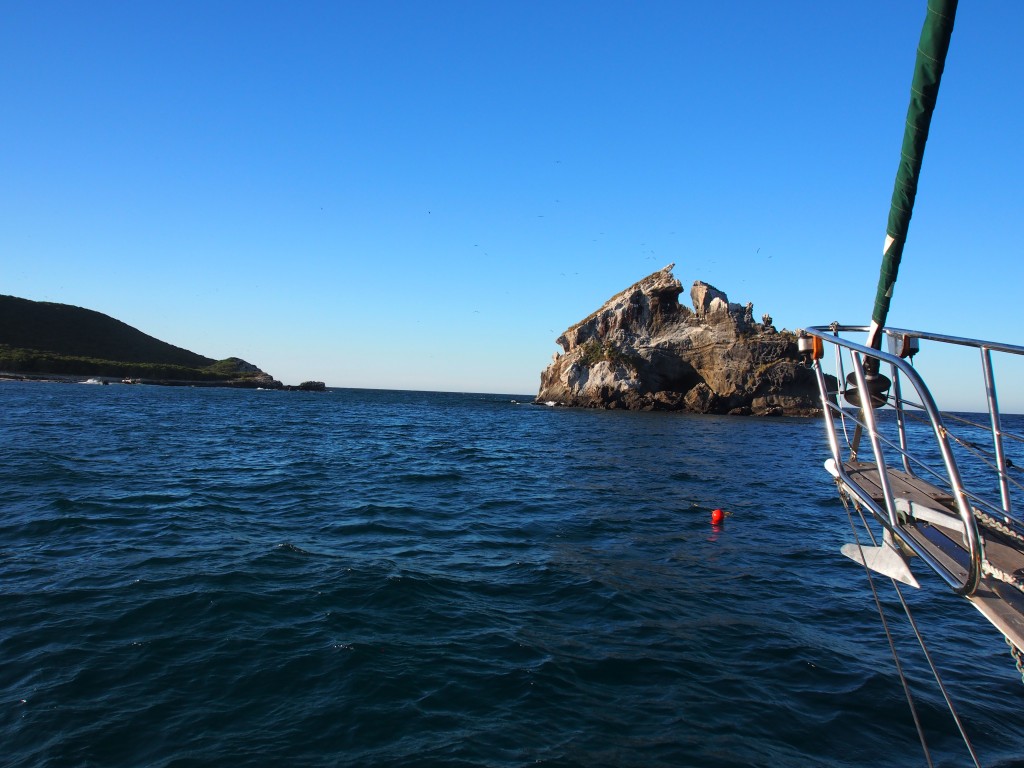
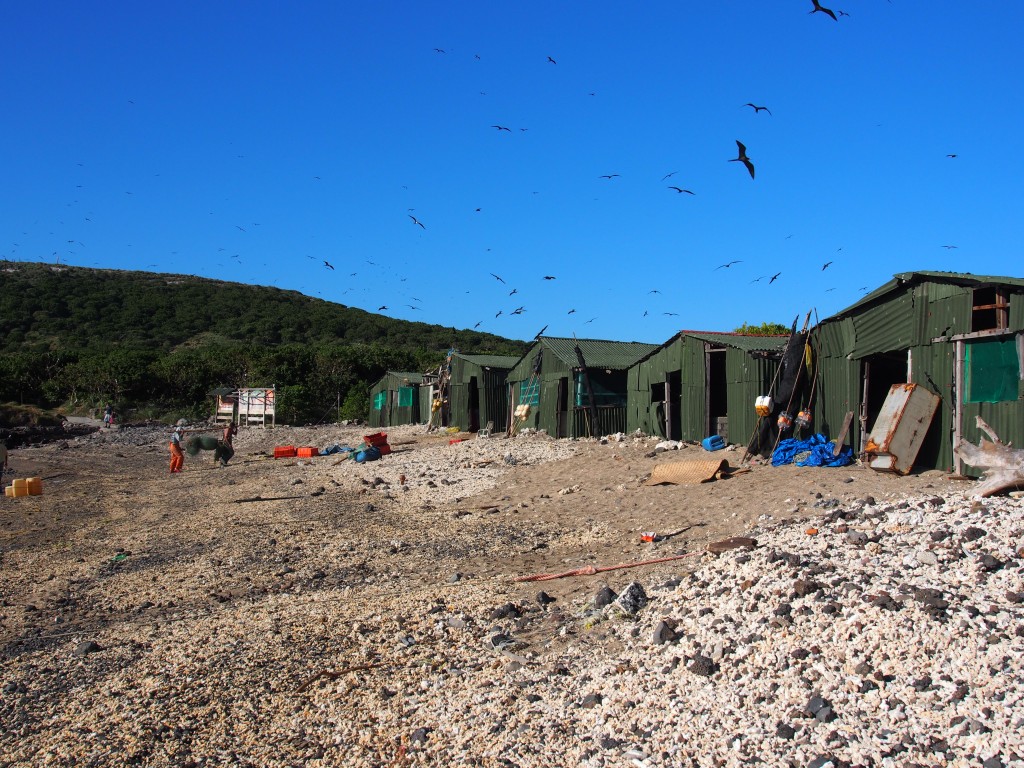


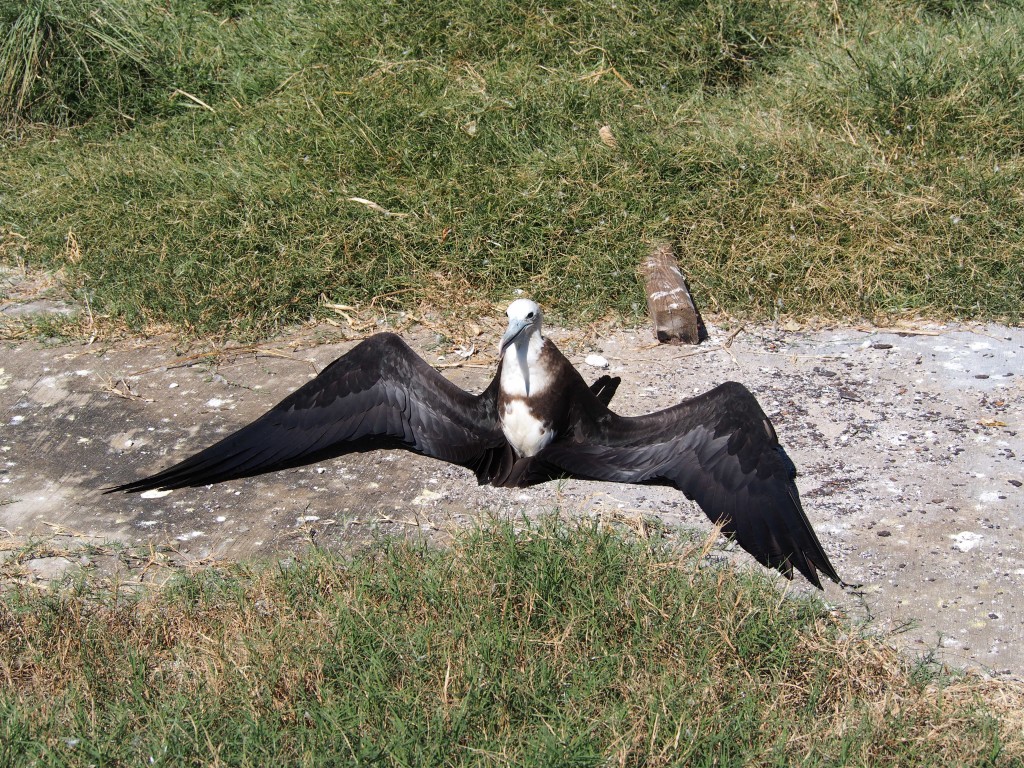
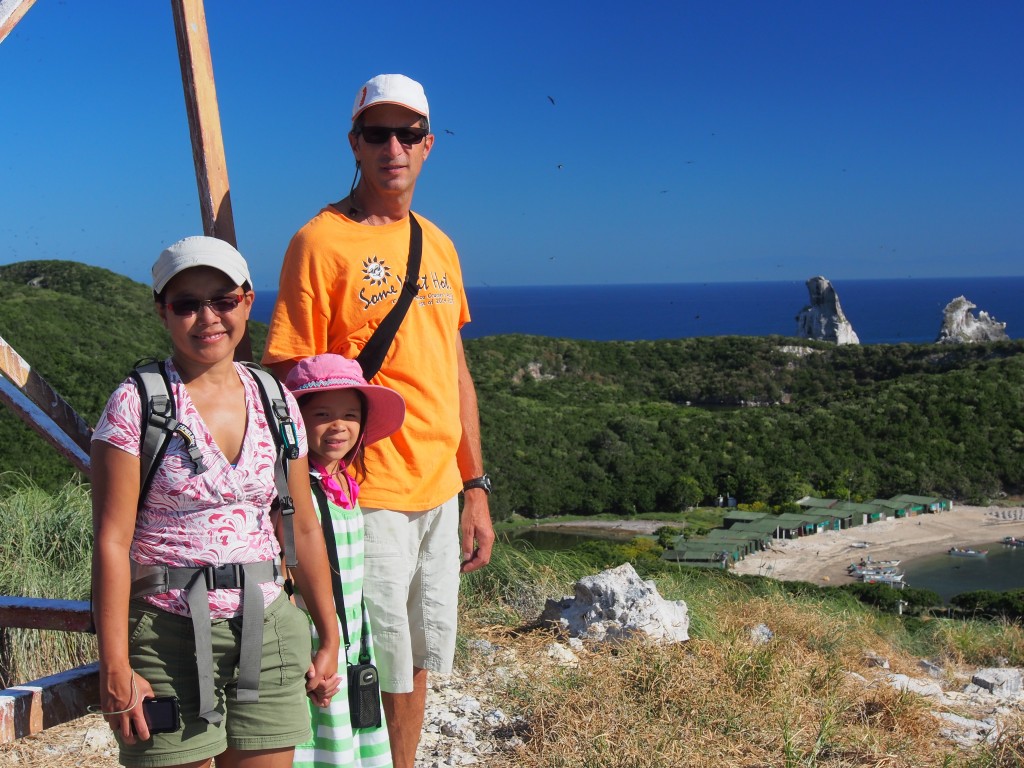

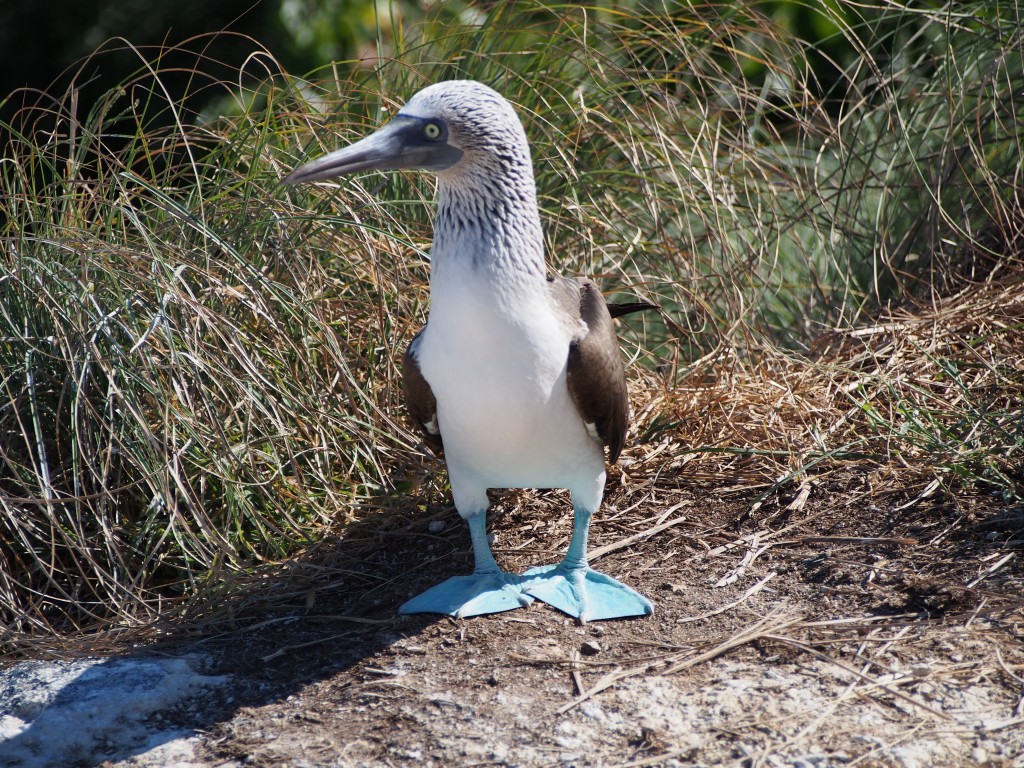
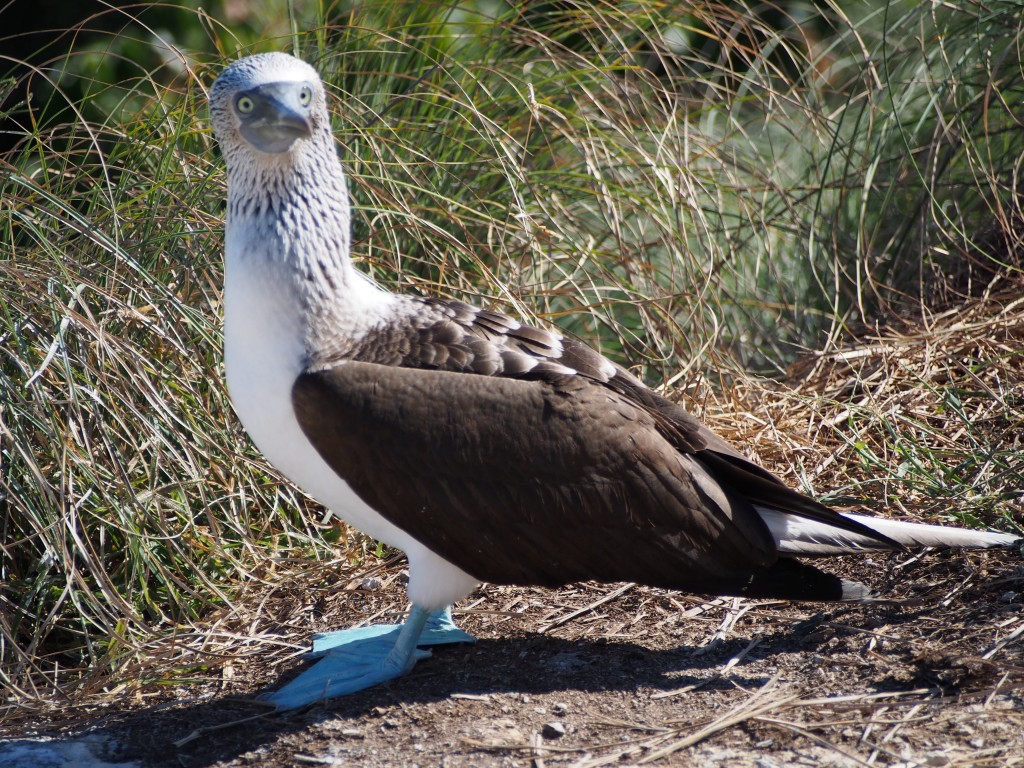
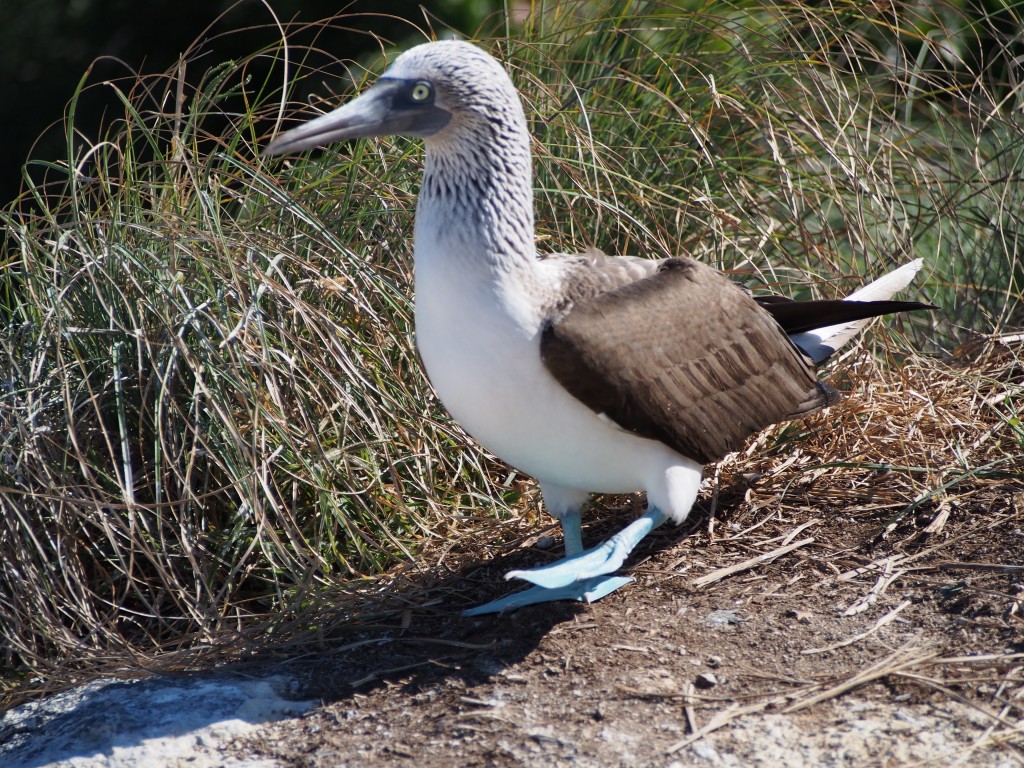
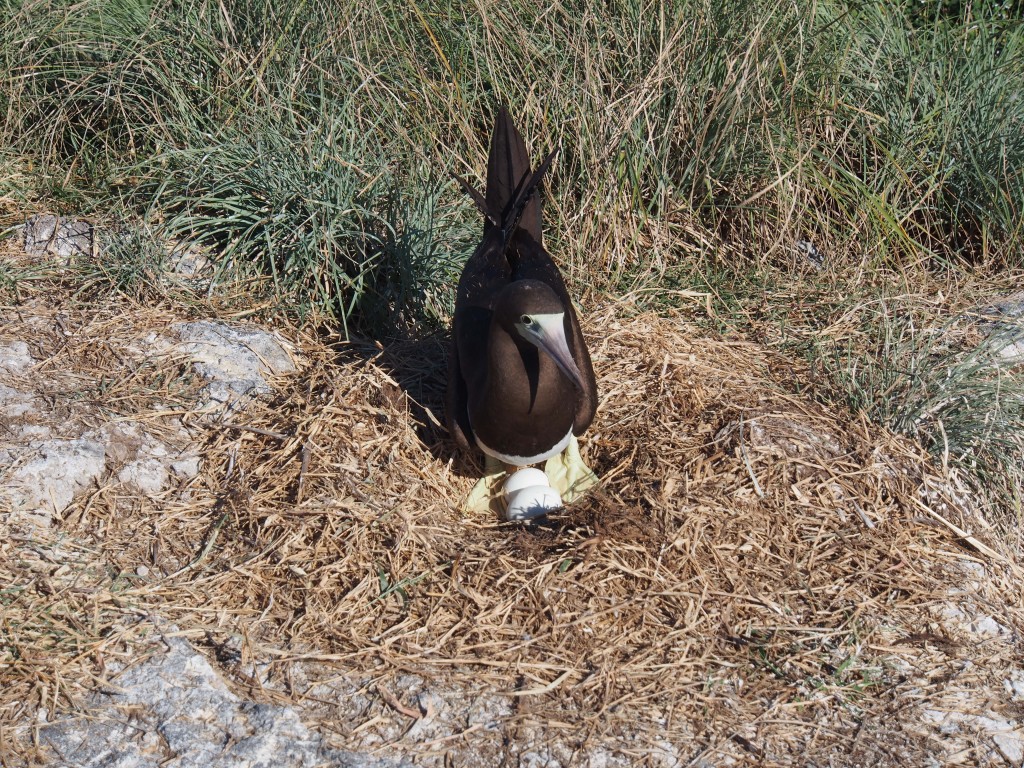
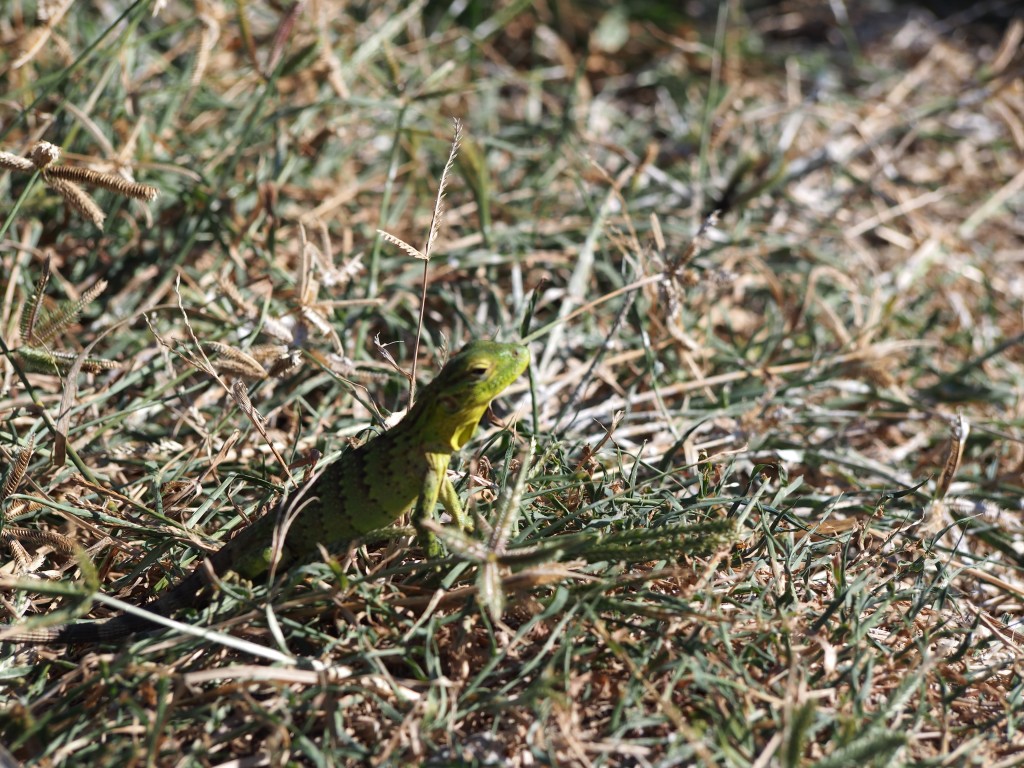
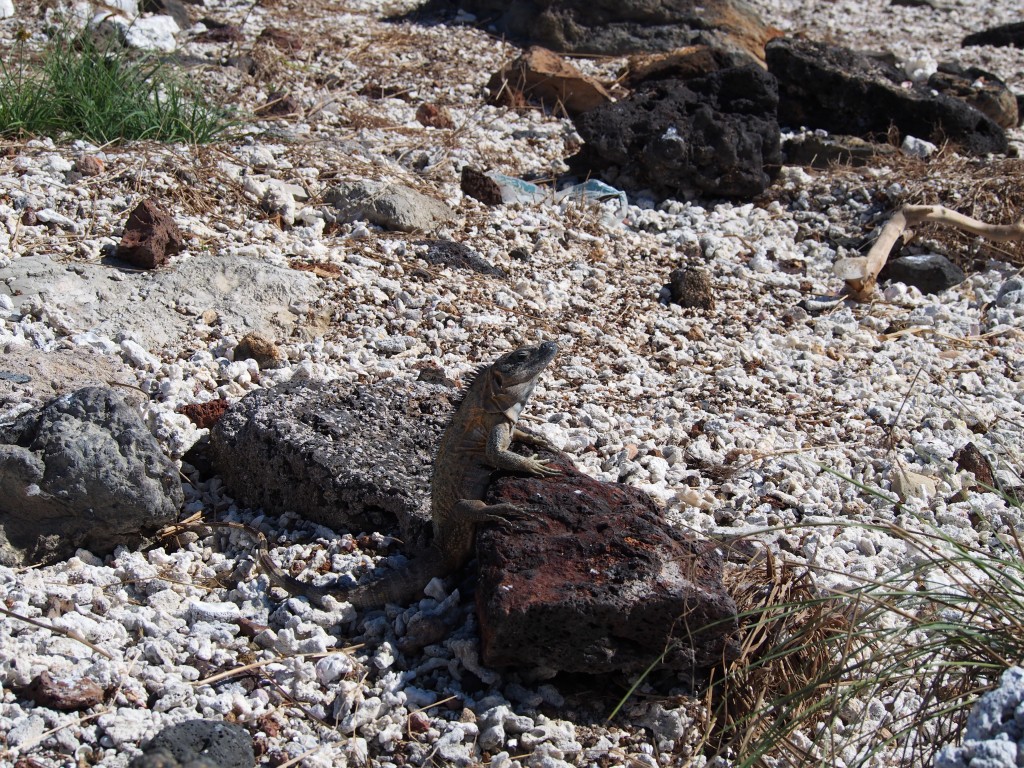
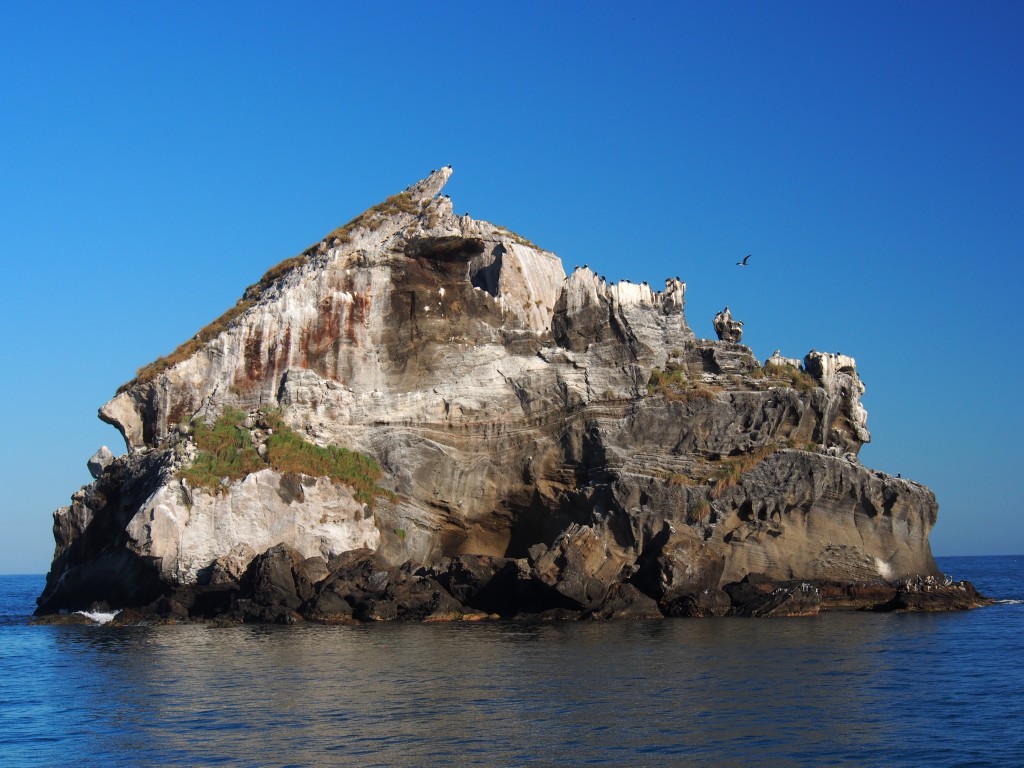
Mazatlan for 7 Days
The sail from the Baja Peninsula (Bahia De Los Muertos) to Mexico mainland (Mazatlan) is 190 miles. At the half-way point, we would be nearly 100 miles from land, another first for us. Our pre-departure planning was calculated with a moving average of 5.5 knots so we allowed about 35 hours to get there. Since we wanted to arrive during daylight hours, we decided on a 3am wakeup and a 4am departure. This would get us into Mazatlan around 4pm. The GRIB files (weather data) showed a 10-15 knot northerly for the first 24 hours, which is ideal for the crossing since it would be a broad reach point of sail.
It was pitch black when we left and the wind was already blowing 10 knots inside the bay, so we were cautious and double-reefed the main and pulled out the genoa. Outside the bay, the northerly picked up to 15-20 knots and the seas became rough (5-8 feet). I took the first 3-hour watch while Karen got some rest. Sailing in rough seas in darkness (clear skies but new moon) can be exciting since you don’t SEE the waves. The larger waves normally come in bunches of 3, and it’s the 1st one that surprises you! Every so often, a wave would hit the boat causing it to roll, then a second wave would break on board. When it broke near the bow, the gunnels filled with water and you could hear the scuppers slurping down the sea water. When it broke near the stern, you were surprised with a shower. When the wind began picking up above 20 knots, we furled in the genoa part-way to keep the helm light. So for the first 24 hours, we sailed along at between 6 and 8 knots, ticking off 150 miles. With the constant rolling motion and hand steering, we got pretty tired and began doing 2 hour shifts (although I’d sometimes trade an extra hour for a hot cup of tea, or when I was in a groove with my iTunes playlist). It wasn’t until I woke up from my 2 hour “sleep” at 7am on the 2nd day, that the wind had finally dropped to 10 knots. We shook out the mains’l reefs and pulled out the full genoa. By then we were only 40 miles from Mazatlan and continued sailing at a slower speed of 5 knots, and finally turned on the engine for the last 2 hours as the wind dropped further.
The remaining hurdle was getting around the breakwater and through the narrow channel to the marina. Although we timed our arrival for daylight (with the stronger winds, it was around 1pm), we didn’t consider the tides. We read in our guidebook the channel requires constant dredging to keep it deep enough. As we rounded the breakwater, the shallow depth alarm (set to 8′) began beeping. Soon I saw 2′ on the depth sounder, which measures the depth of water below the keel. There was also a 3-4 knot current coming out and the channel had a dog-leg. The channel was only about 20 feet wide and I found deeper water steering towards the port breakwater. We made it through and pulled up to the fuel dock at Marina El Cid. Just before entering the channel, another sailboat radioed us on VHF saying they would be following us in but they had a broken transmission and were only able to go forward. While I was at the marina office, that boat radioed the marina to report they were grounded in the channel and were asking for an emergency tow (they eventually got towed off). While waiting for the tide to turn we washed the salt off the boat then went for a swim in the resort pool which was deliciously warm. We then moored the boat and took a nap. In the evening I watched with some other Seattle fans as the Seahawks beat the Cardinals to take over 1st place in the division!!
After a much needed full night’s sleep, we took a bus to Old Mazatlan, the heart of the city away from the tourist hotels, beaches and marinas. We took in the sights of the landmark Cathedral Basilica with twin yellow spires, the Mercado Municipal 2-story public market, and ate at small street-side loncherias (lunch counters). We also bought some refreshing fruit-filled licuados, fresh coconut water, and just-made tortillas.
Back at the marina, we enjoyed the swimming pools and restaurants that belong to the El Cid resort. We also did the routine chores like re-provisioning at Mega, exchanging dollars for pesos, boat maintenance, and laundry.
Confession–today we stopped at a Starbucks and ate at McDonald’s – they had a play area for Jacintha and free wifi for her parents!
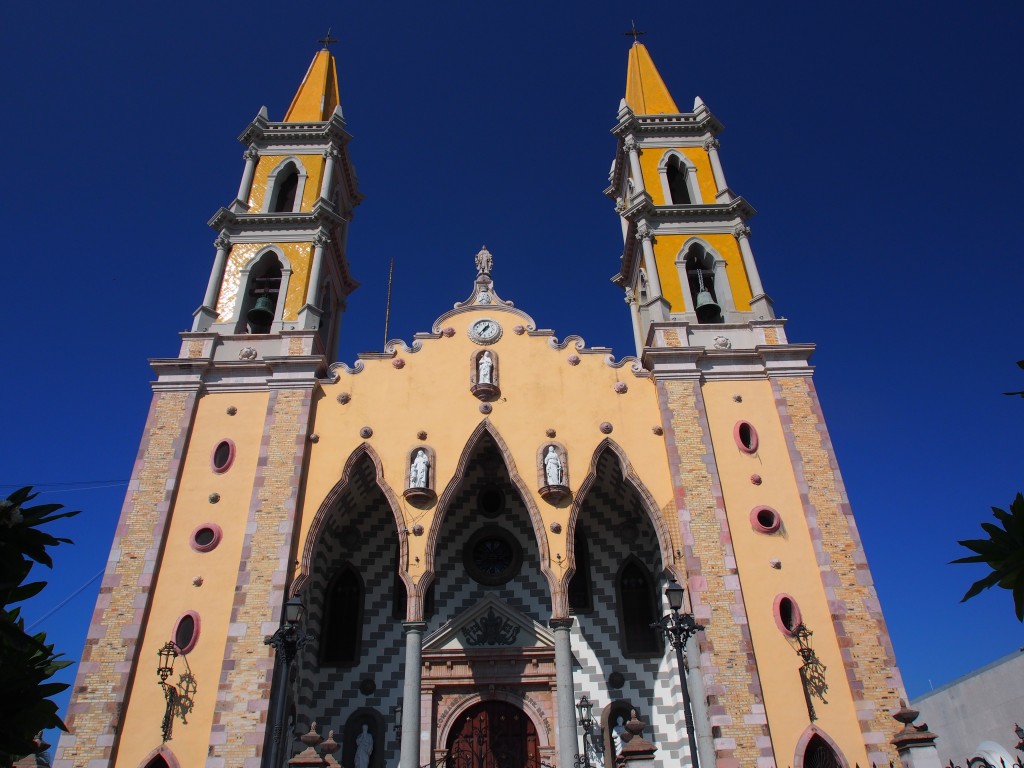

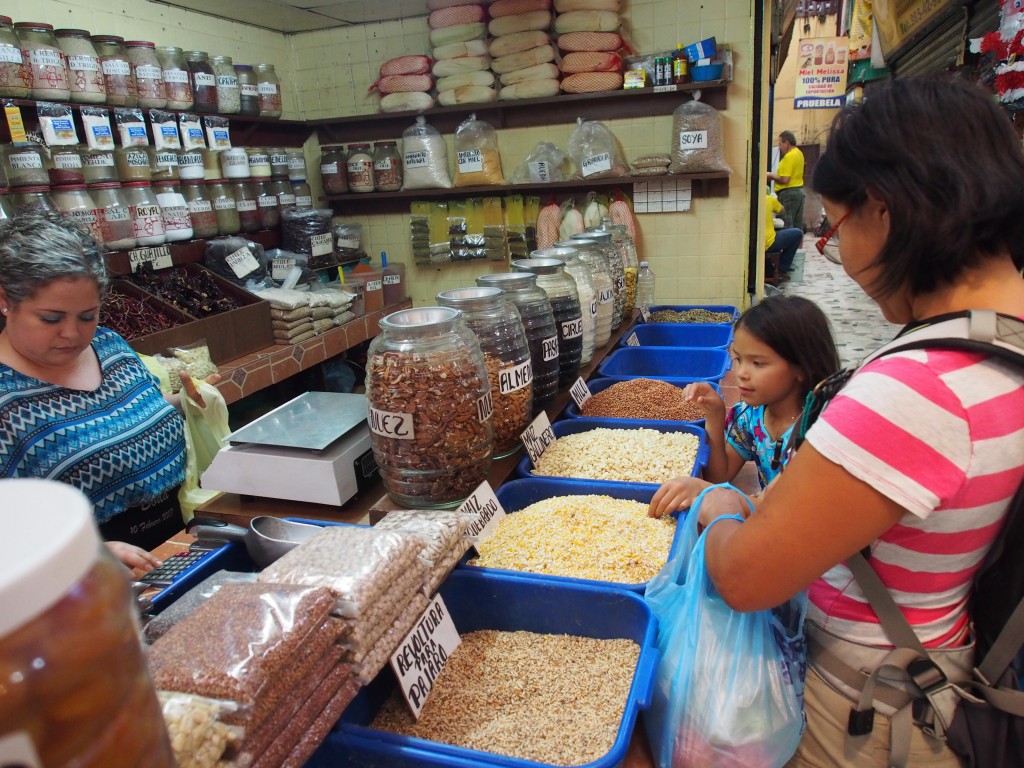


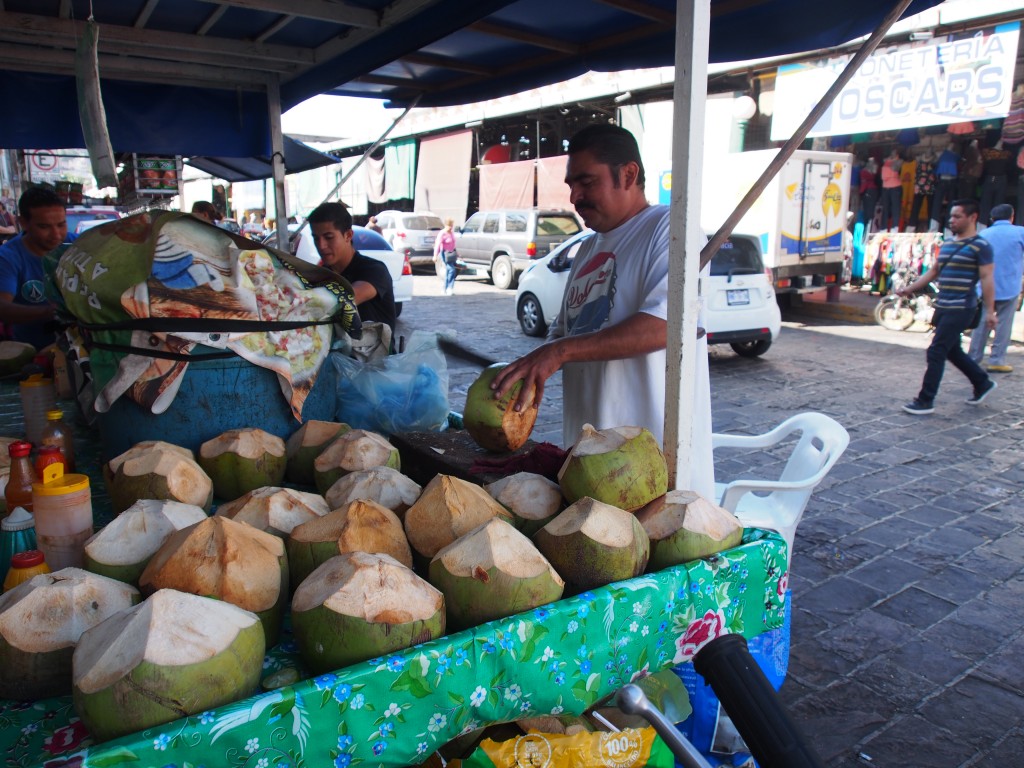
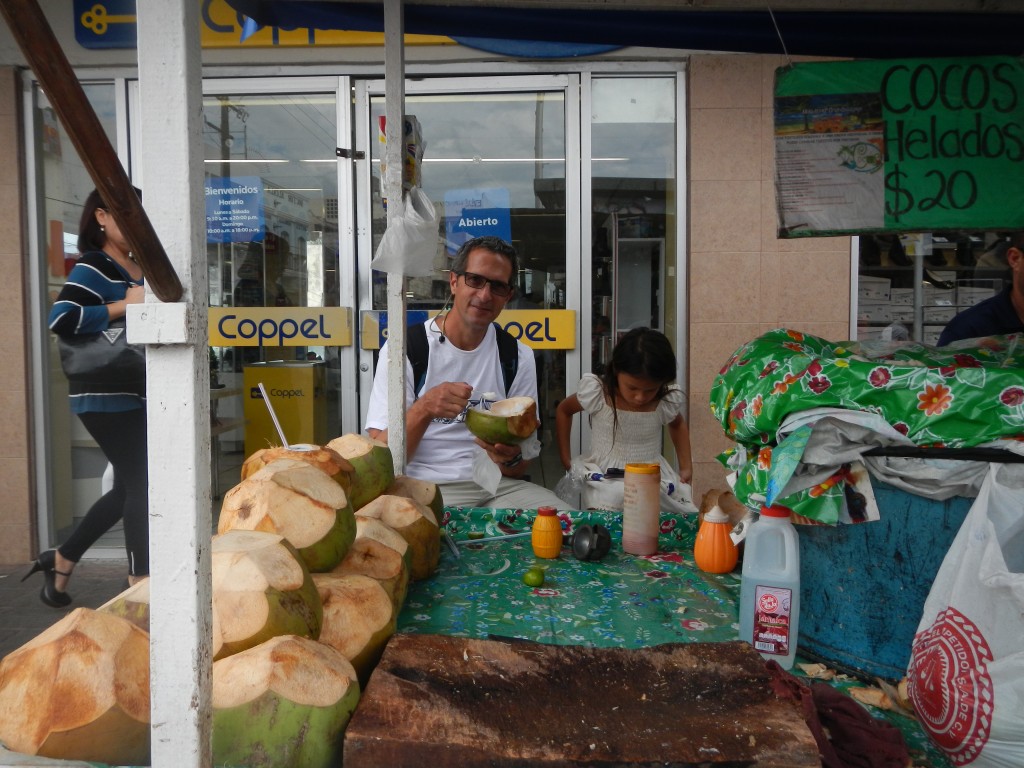
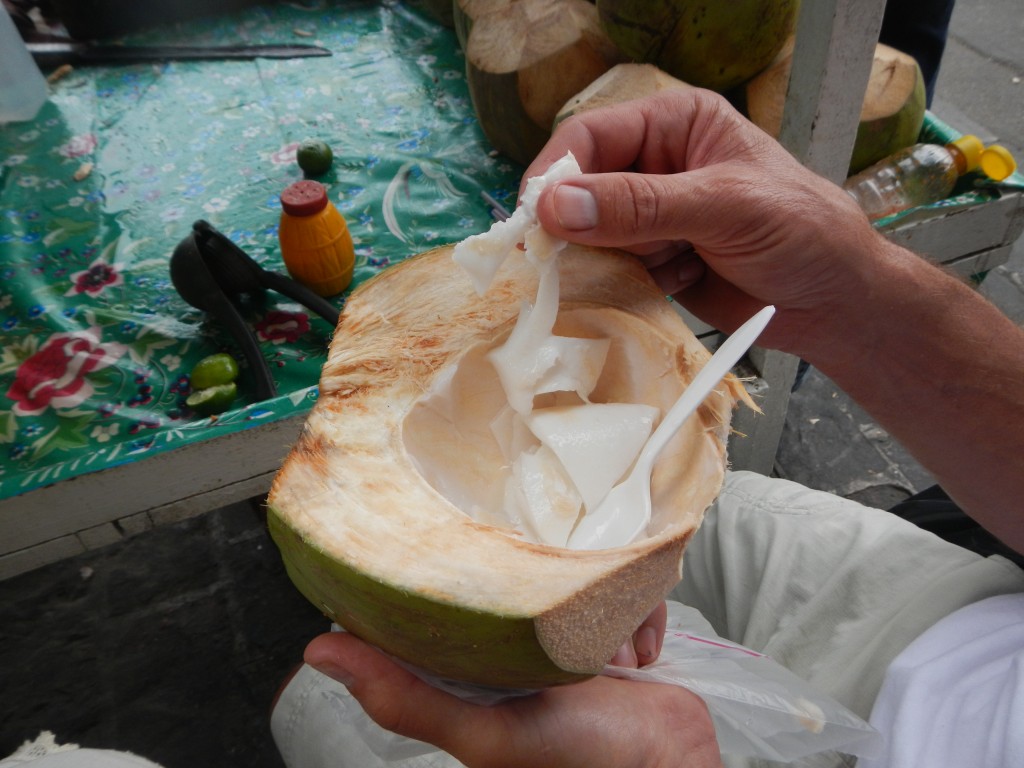
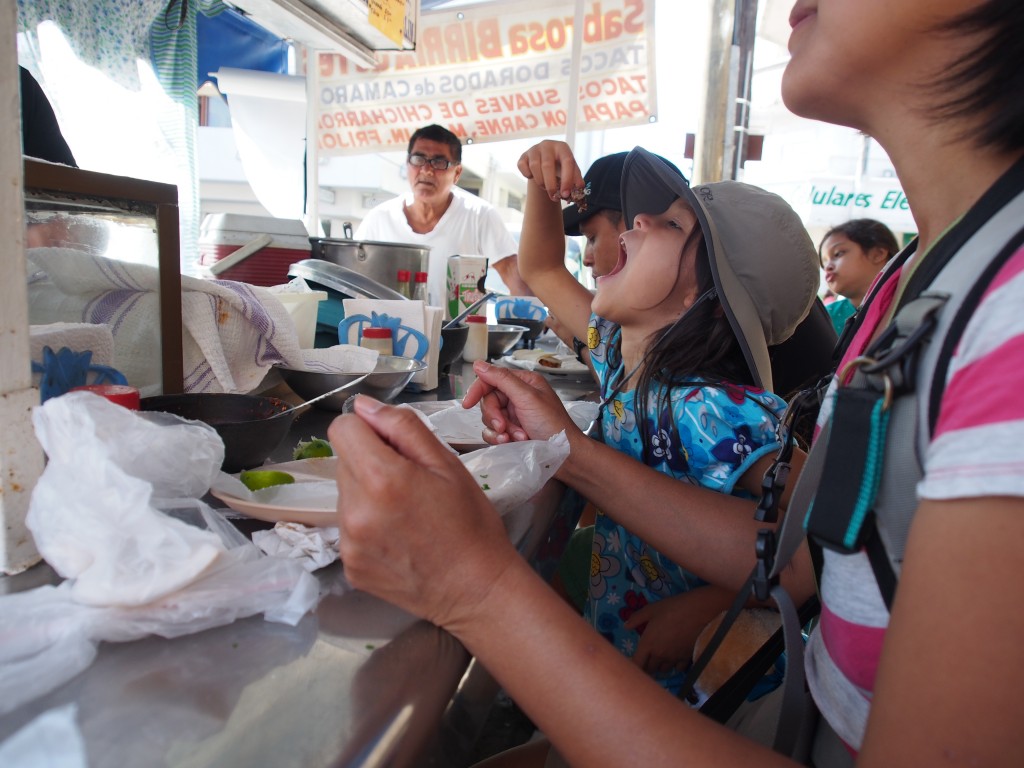
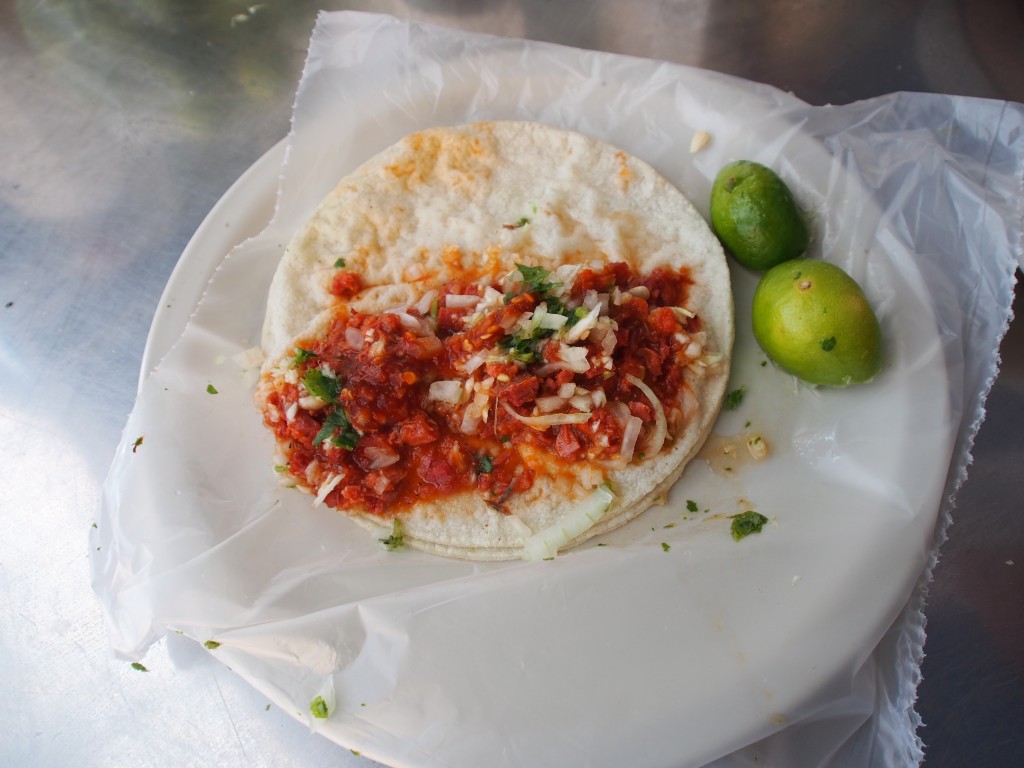
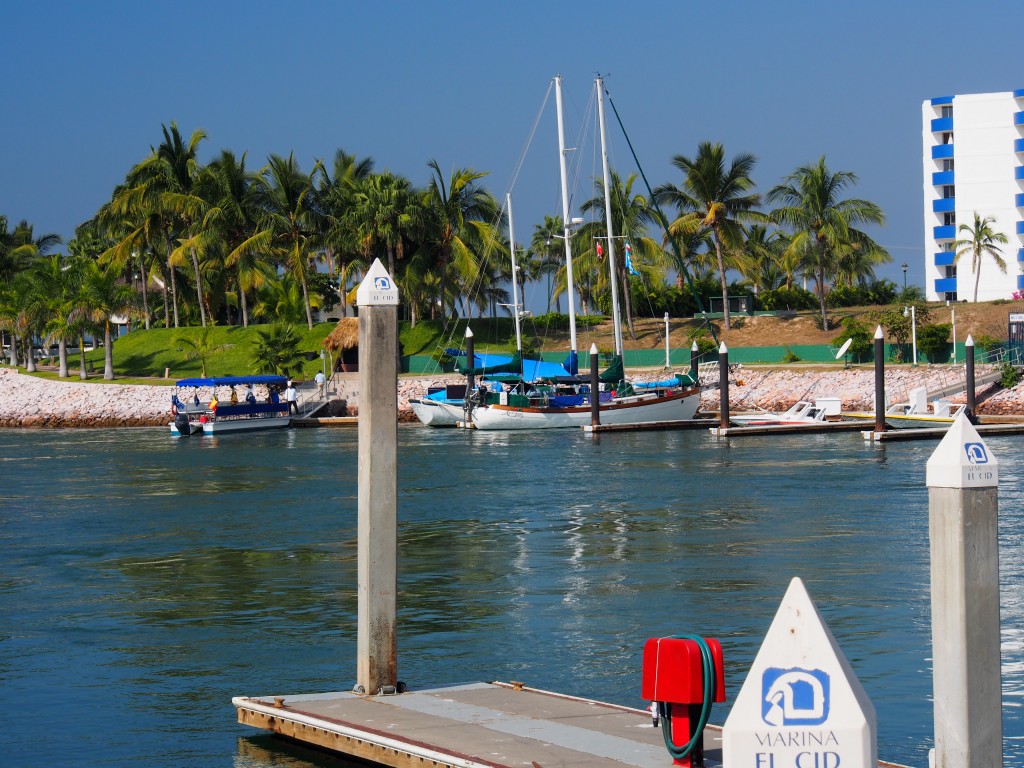
10 days North of La Paz
After 5 days in La Paz, we headed north for 10 days to explore the rugged coast. Our goal was to see as much as possible but not go too fast that we wouldn’t have time to relax and enjoy the sights. I charted a course that included short day-sails of only a few hours. Our guidebook (Sea of Cortez, A Cruiser’s Guidebook by Shawn Breeding and Heather Bansmer) was amazingly helpful in choosing where to stop and anchor. Most of the places that we visited were because they sounded interesting from the descriptions in the guidebook. We wanted to meet local people from the small villages that dot the coastline along the Sea of Cortez. We also wanted to do some hiking, snorkeling, paddle boarding, exploring, and relaxing.
Winter Northerlies—The Sea of Cortez normally has light northerlies in the summer, but can get heavy northerlies during winter. We use the SSB radio to plot GRIB files to get weather data (both current weather and predicted weather). When we left La Paz to head north for 10 days, a cell (high wind area) was moving in a southerly direction towards us down the sea. We decided to find a cove to duck into until the cell passed. Our guidebook said Ensenada de la Roza on Isla Espiritu Santo was good for northerly protection. Espiritu Santo is a national park island 20 miles north of La Paz. When we pulled in there were 2 other boats anchored in the cove, so there was plenty of room. We put out 100’ of chain in 20’ of water for a 5:1 scope since we knew we’d be here during the blow, which would begin the following evening and last for 36 hours. We swam around the boat in warm turquoise water and relaxed. The next day we took the dinghy ashore to look around and have lunch. By then the other 2 boats had left so we had the whole cove to ourselves. With the wind starting to pick up, we sailed the dinghy back to the boat by holding up a beach mat (good thing it was directly downwind)! Back at the boat we prepared for high winds by making sure everything was lashed down or stored down below. By evening the wind picked up to a steady 20 knots with higher gusts. For the next 24 hours the wind blew steadily with 30+ knot gusts, but Apropos held well to the sandy bottom. Aside for the howling wind-noise, we were comfortable since the cove was protected from wind-generated waves. Karen baked bread, Jacintha did lots of schoolwork, and I did some misc. boat work. We all read a lot on our 3 Kindles—Karen with “Game of Thrones”, Jacintha with “Judy Rudy”, and me with “Steve Jobs”.
When the wind died down the following day, we decided to leave the sheltered bay and head north. Karen was a little bit concerned by the whitecaps we saw outside the bay but I said don’t worry, we sail in this stuff all the time in Puget Sound, so lets just stick our nose out and see what it’s like. So we left the cove and as soon as we got beyond the wind shadowing small islet just outside the cove, everything changed. The wind wasn’t that bad, maybe 15 knots, but the chop was extremely steep with a period of about 2 seconds and hitting us head-on. In the 10 years that I’ve been behind the wheel on Apropos, including coming down the Washington/Oregon coast, I’ve never seen waves that square. When they began breaking around us, we decided to head back into the cove. Even turning the boat around was worrisome because that would put us abeam to the breaking waves until we turned through 180 degrees. Fifteen minutes later we were back in the relatively calm cove where we would stay for another day.

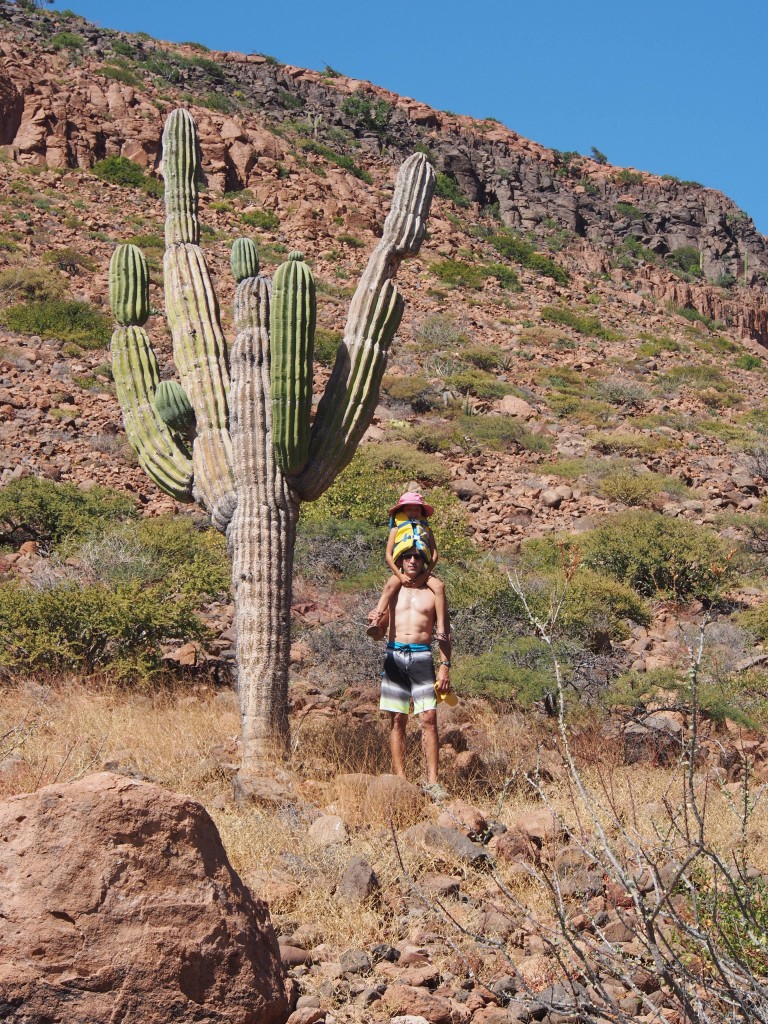
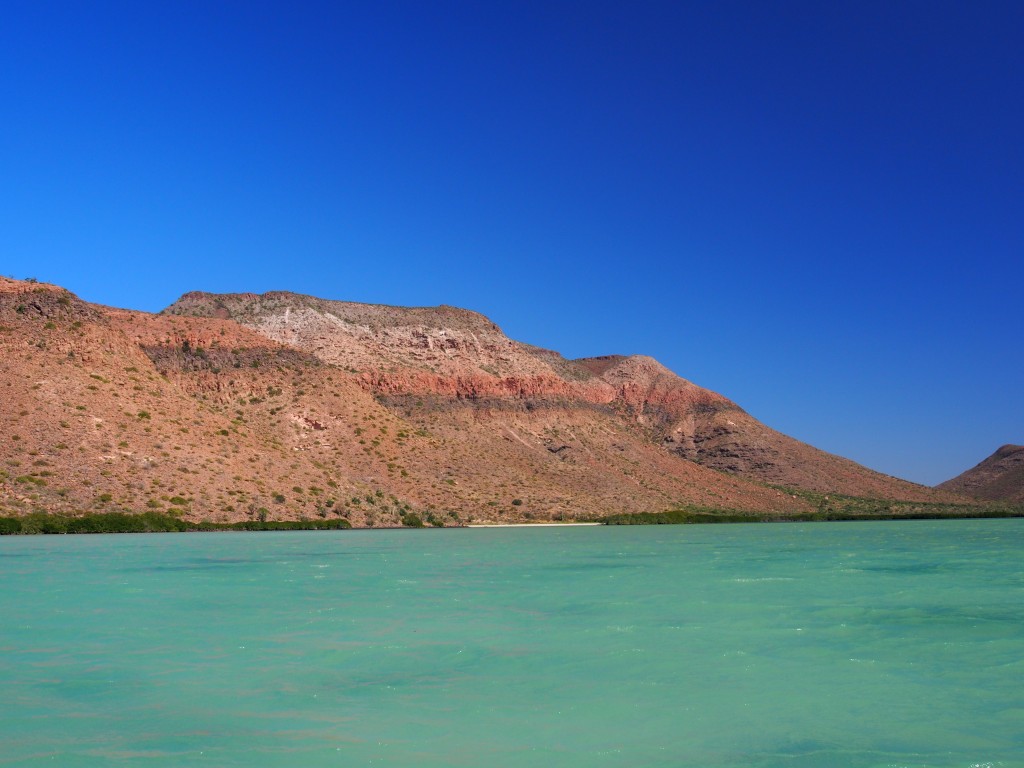

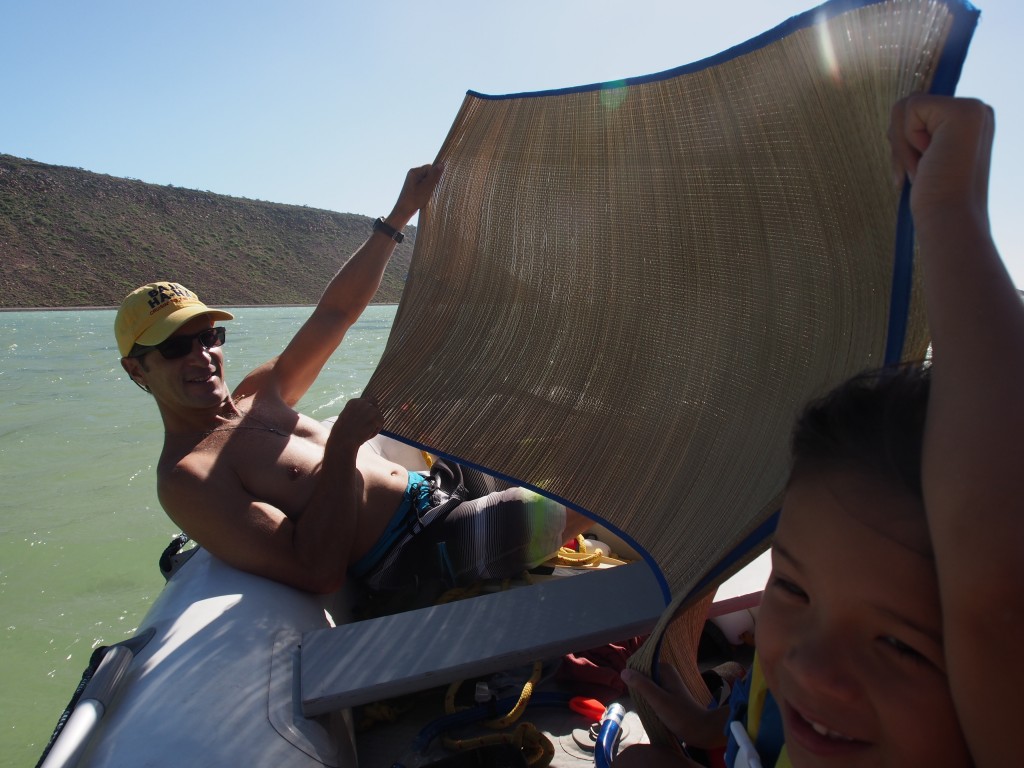
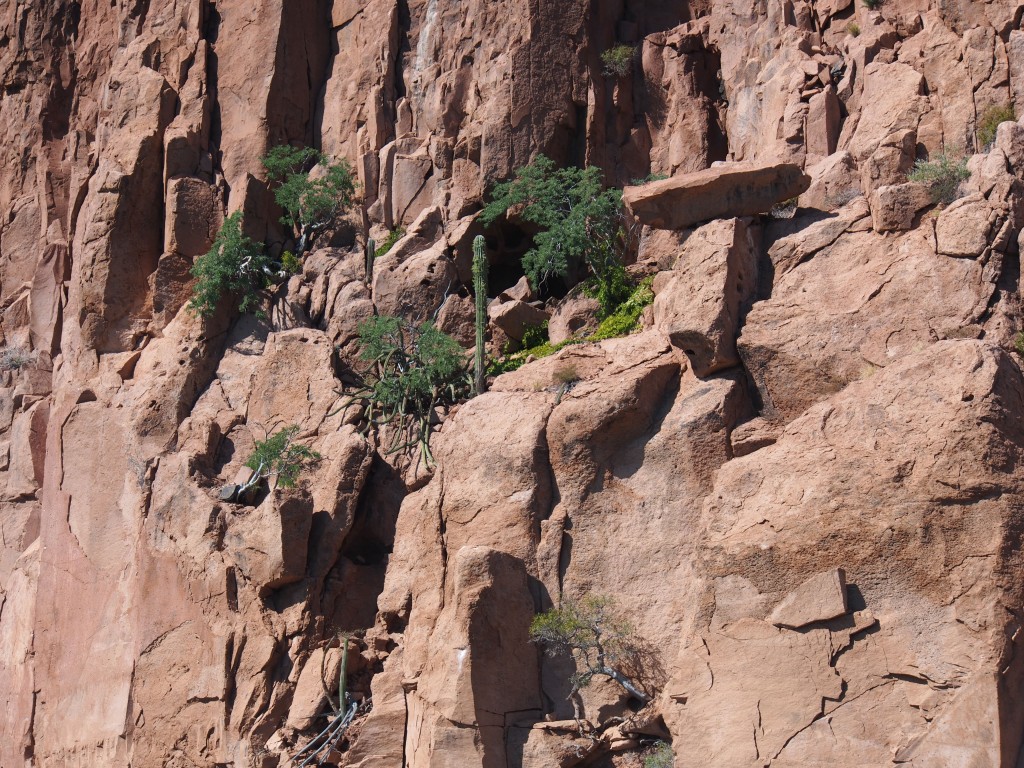
Isla San Francisco—A hard 5 hour upwind sail in medium chop was rewarded with a postcard perfect, crescent-shaped beach surrounded by warm, turquoise water. On our 2nd day there, Jacintha and I paddle-boarded to shore then hiked along a ridge overlooking the bay. Along the way we watched Turkey Vultures soar overhead. At around 1000’ we ate our snacks (skittles and peanut butter cups) and enjoyed the view. After descending back to sea level we cooled off in the water before paddle boarding back to the boat. While we were gone, Karen sewed 2 mesh bags that will be used for our diving gear.
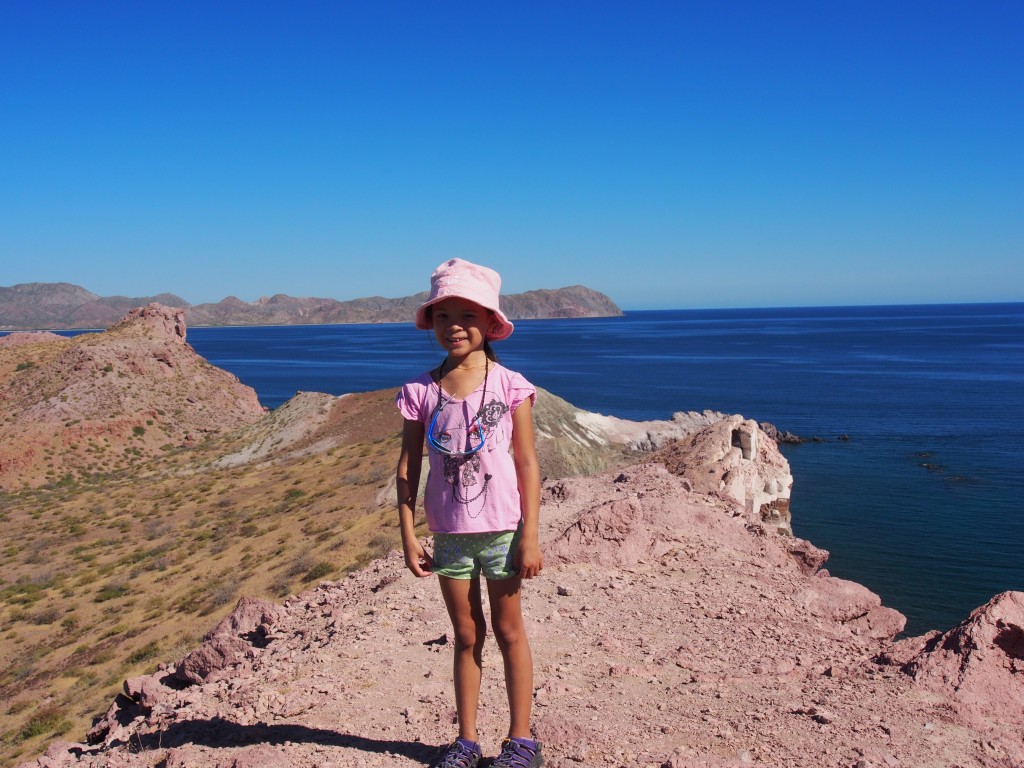

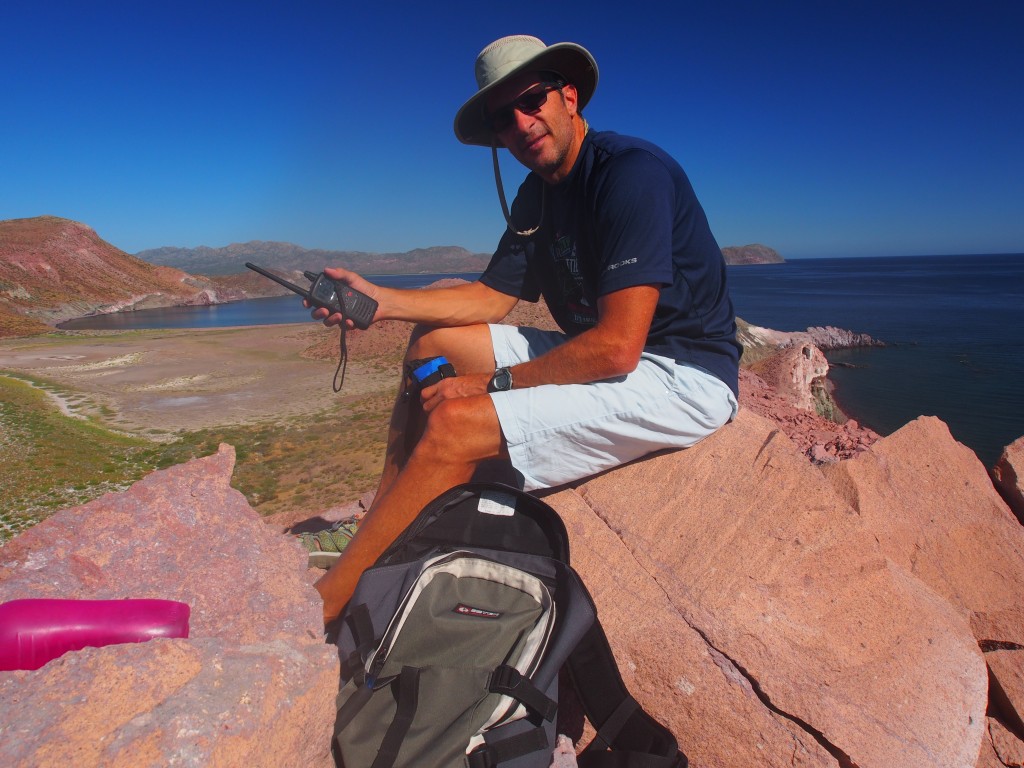
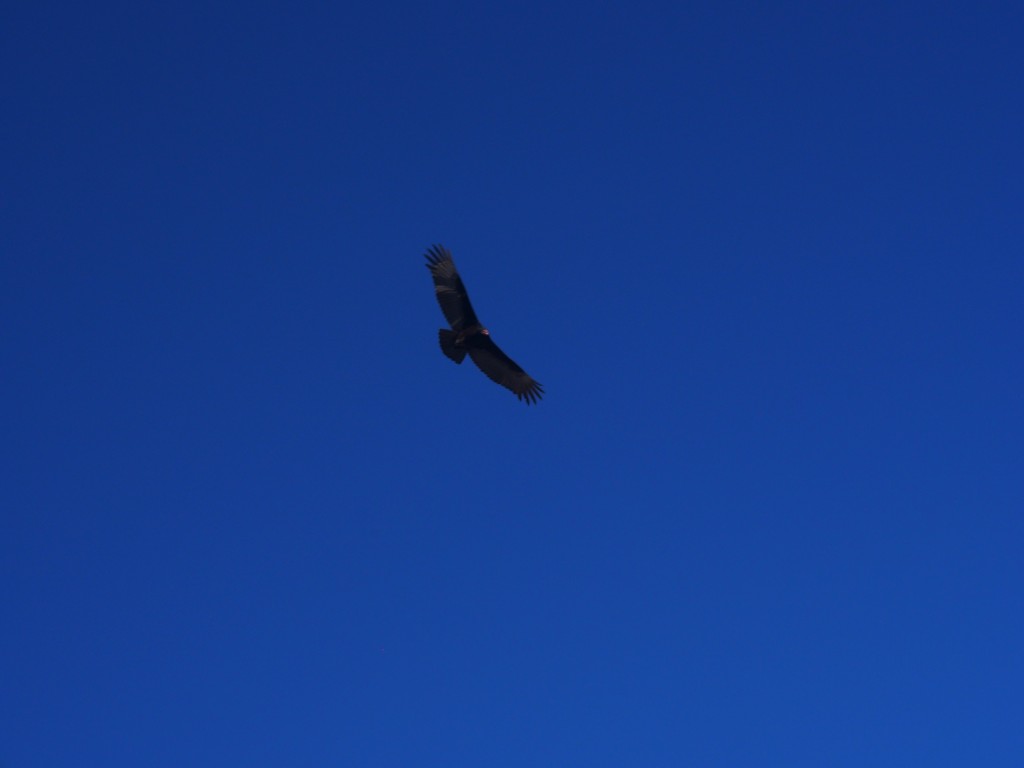
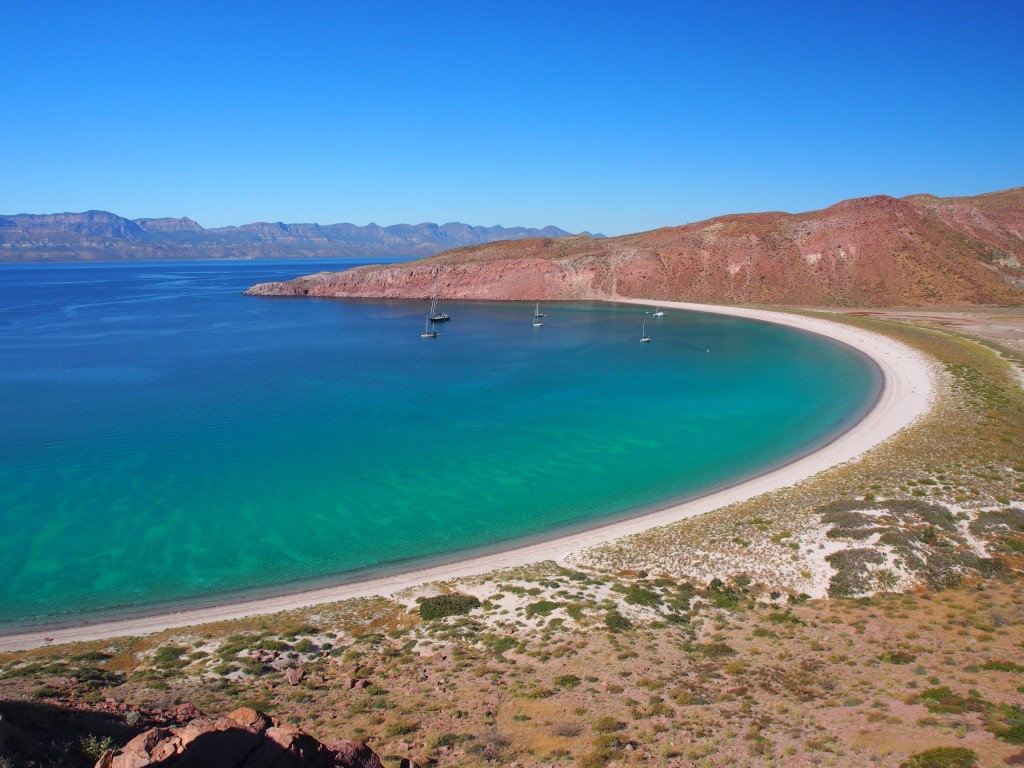
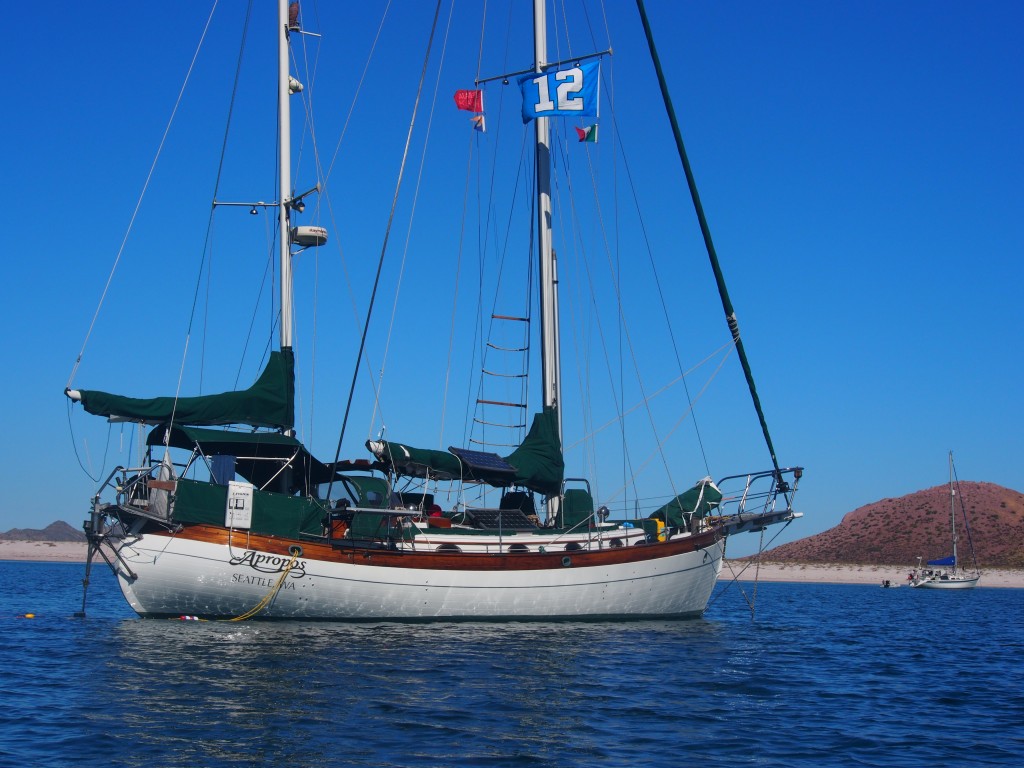
Punta San Evaristo—San Evaristo, about 2 hours north from Isla San Francisco, is a quiet little fishing village with about 20 families living there. A 70-mile road to La Paz is mostly dirt and ends here. We anchored and went ashore to buy some fish from fishermen who had just arrived in their panga with their catch of Trigger Fish. We also stopped at the Tienda for a few snacks, eggs, and produce. Back at the boat, Karen and Jacintha made cookies and bread, so the boat was smelling wonderful! We fried the Trigger Fish in garlic, pepper, and olive oil and dipped it in a wasabi sauce. The next day we went ashore and Jacintha met 2 little girls, ages 3 and 5, who live in the village. They communicated with few words but soon were playing catch with a nerf ball and singing songs from the movie Frozen in 2 different languages (the older sister wore a shirt with Olaf printed on it). When it was time for the girls to join their family to drive their fish catch to La Paz, Jacintha gave them the colored drawing of the 2 girls and their dog that she was working on, plus the crayons and ball. I thought about about the huge difference in the girls’ lives in terms of how and where they lived, their schools, and what they did for entertainment. Next we hiked to the salt evaporation pools a mile north of San Evaristo, passing a small escuela (school) and a couple of burros along the way. The pools were still full of water from when Hurricane Odile went through a few months ago. Later that day we up-anchored and motor-sailed 5 miles north to an anchorage on the north-west side on Isla San Jose.
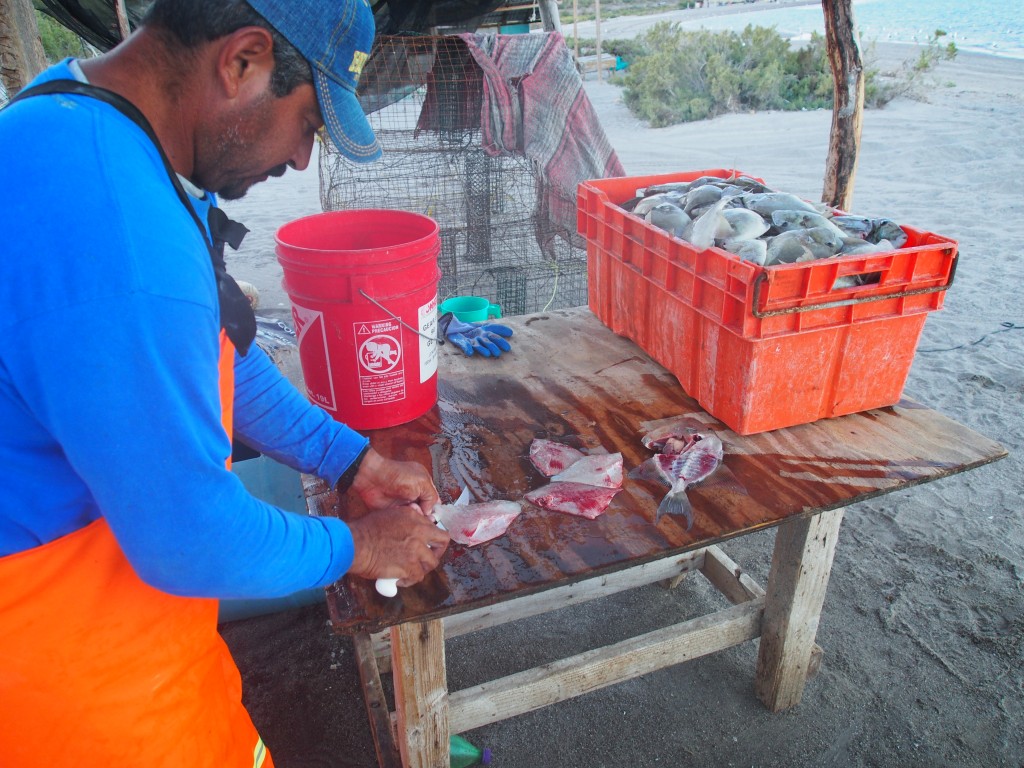
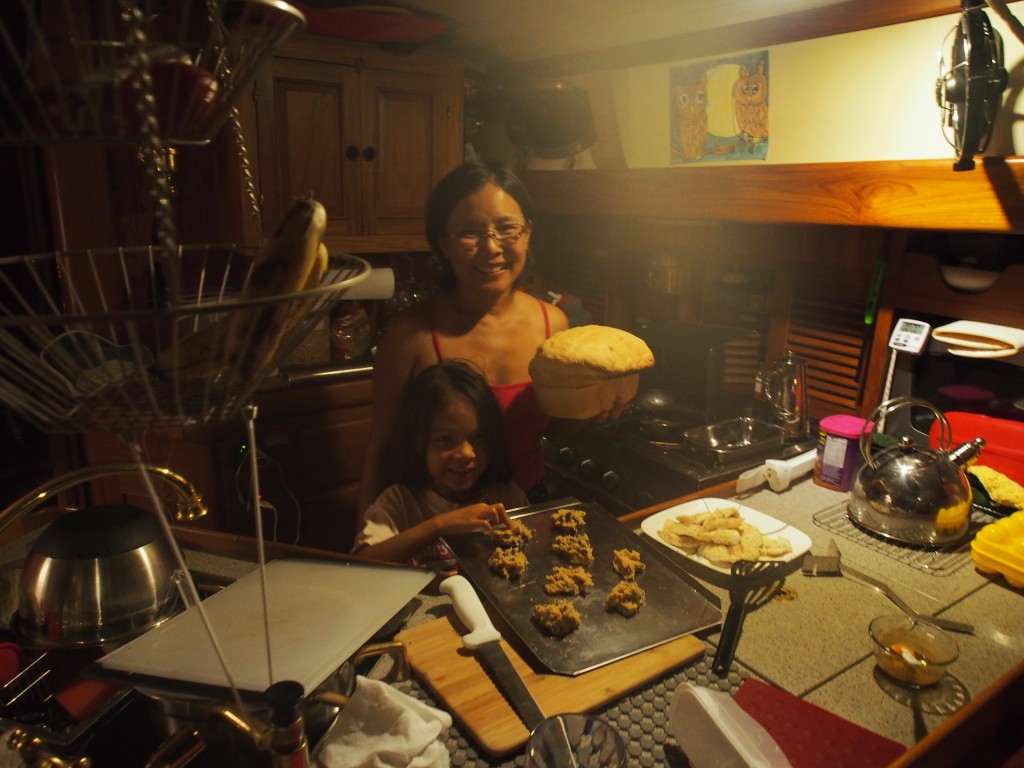

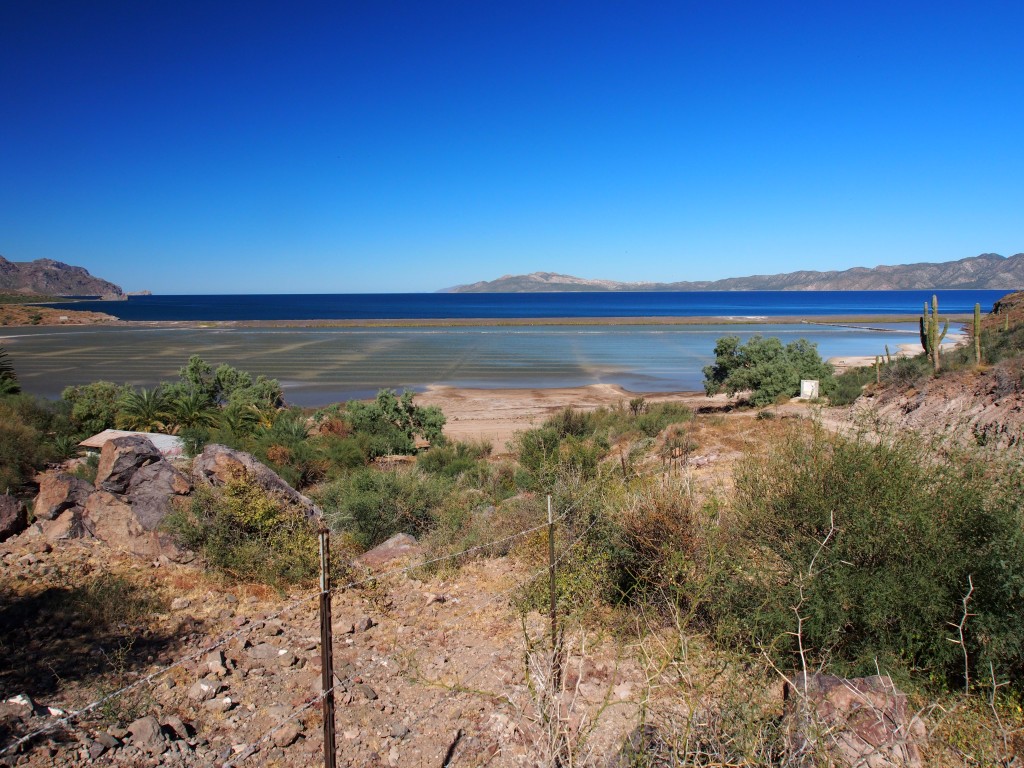

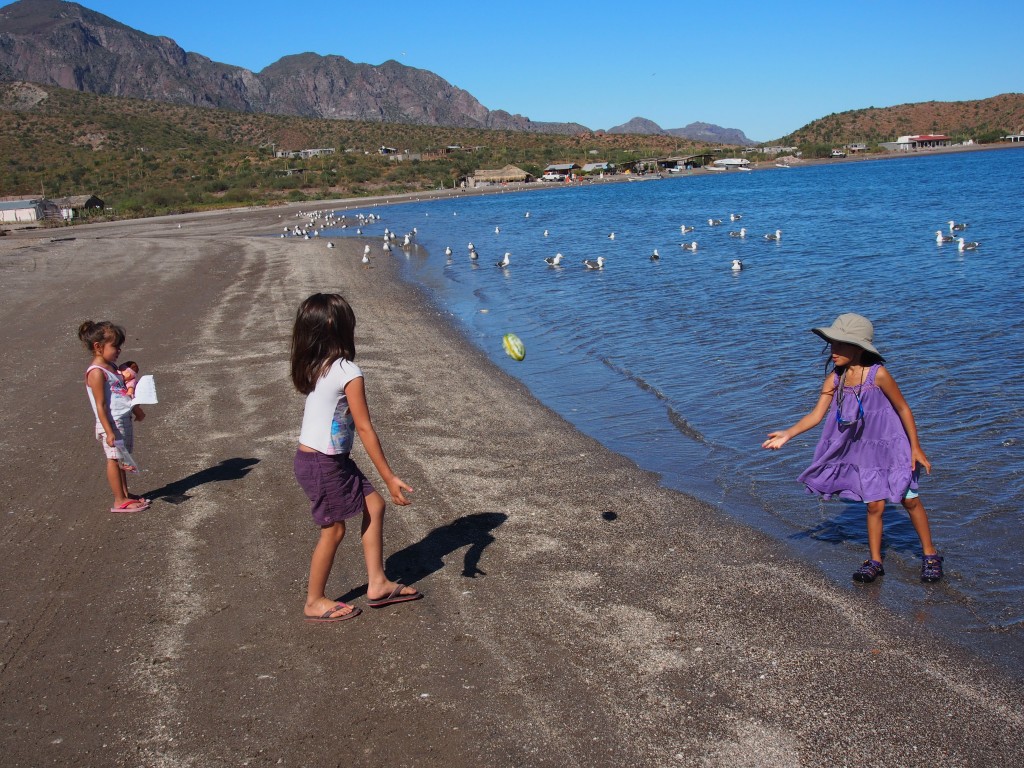
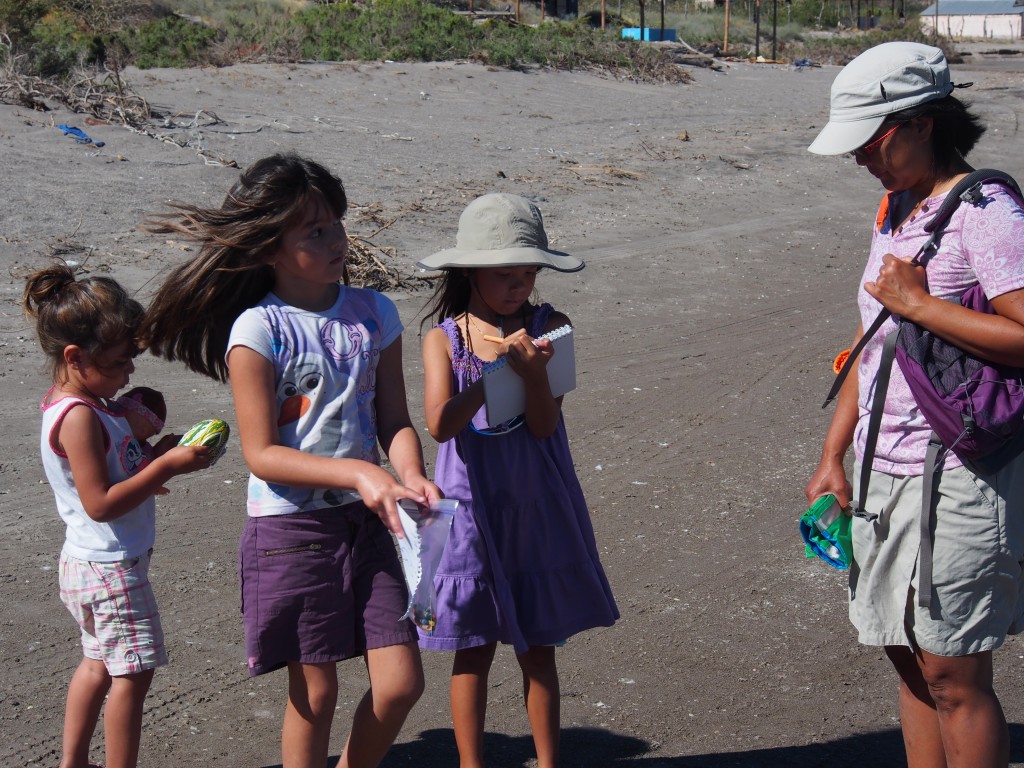
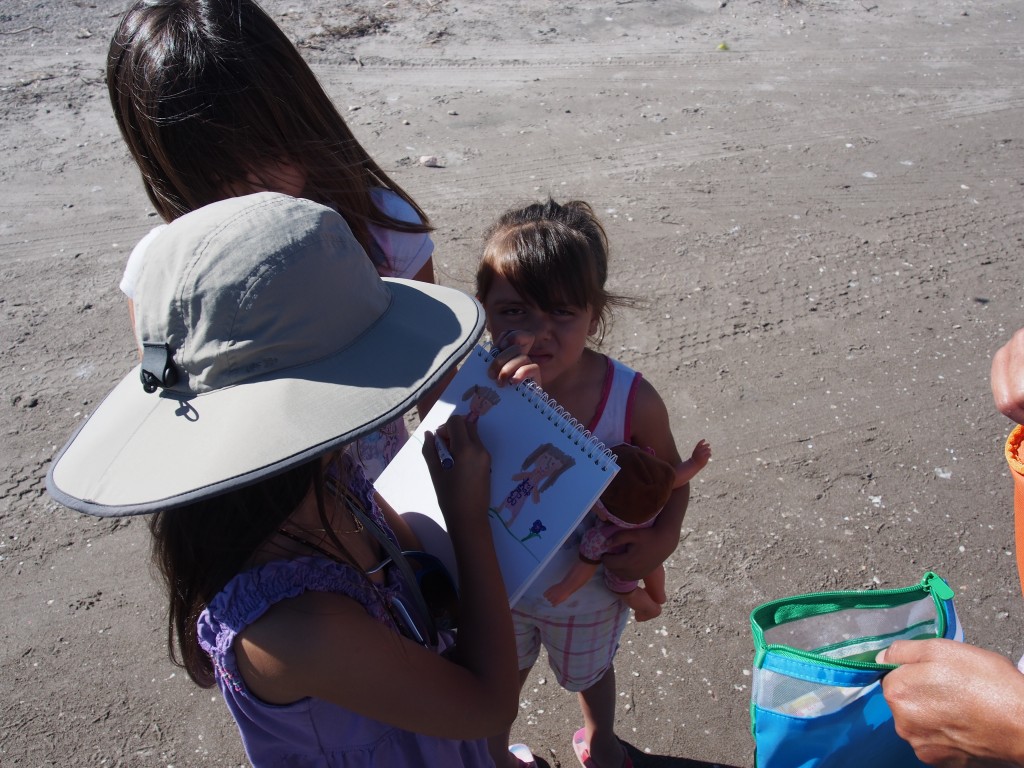
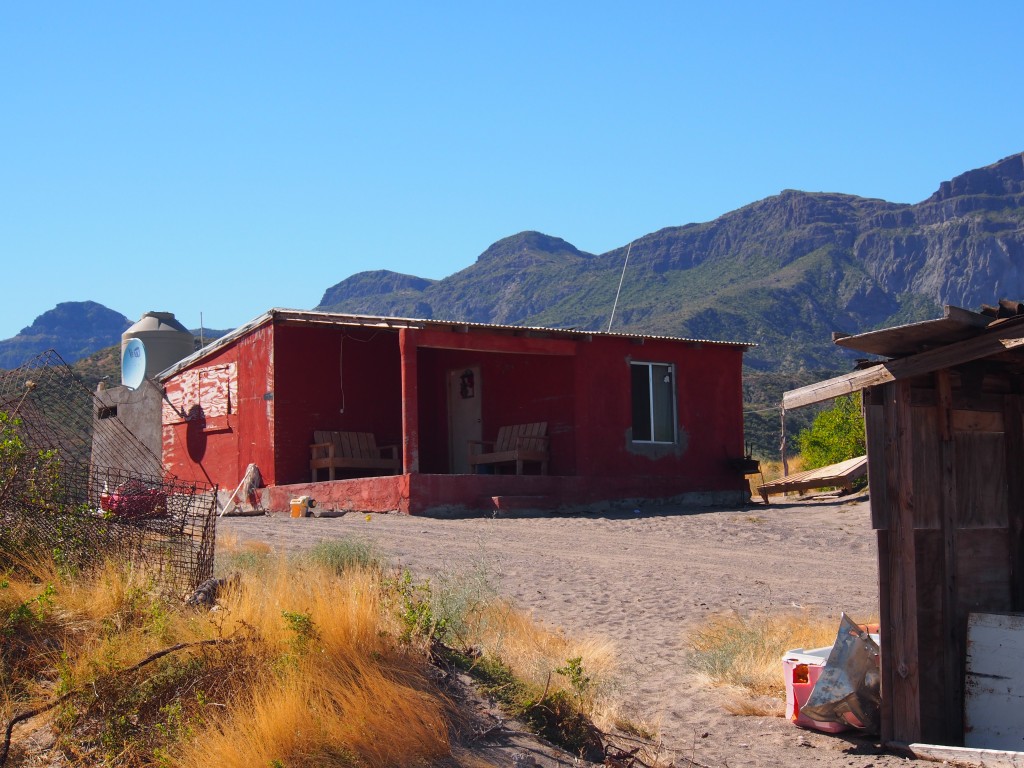
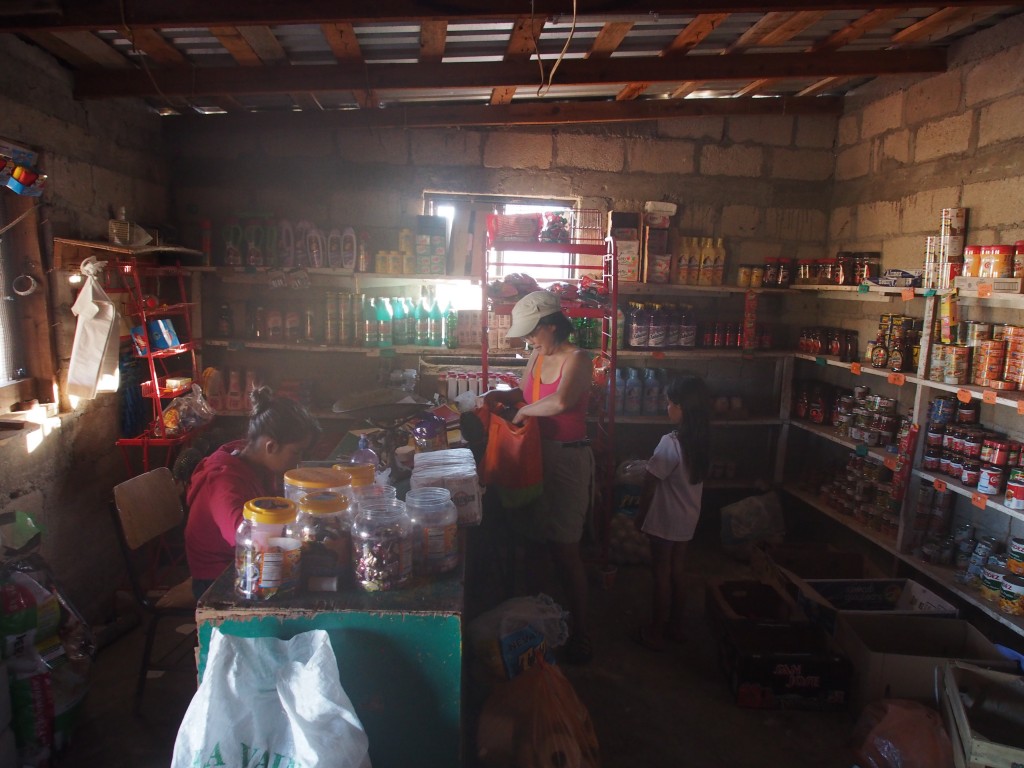
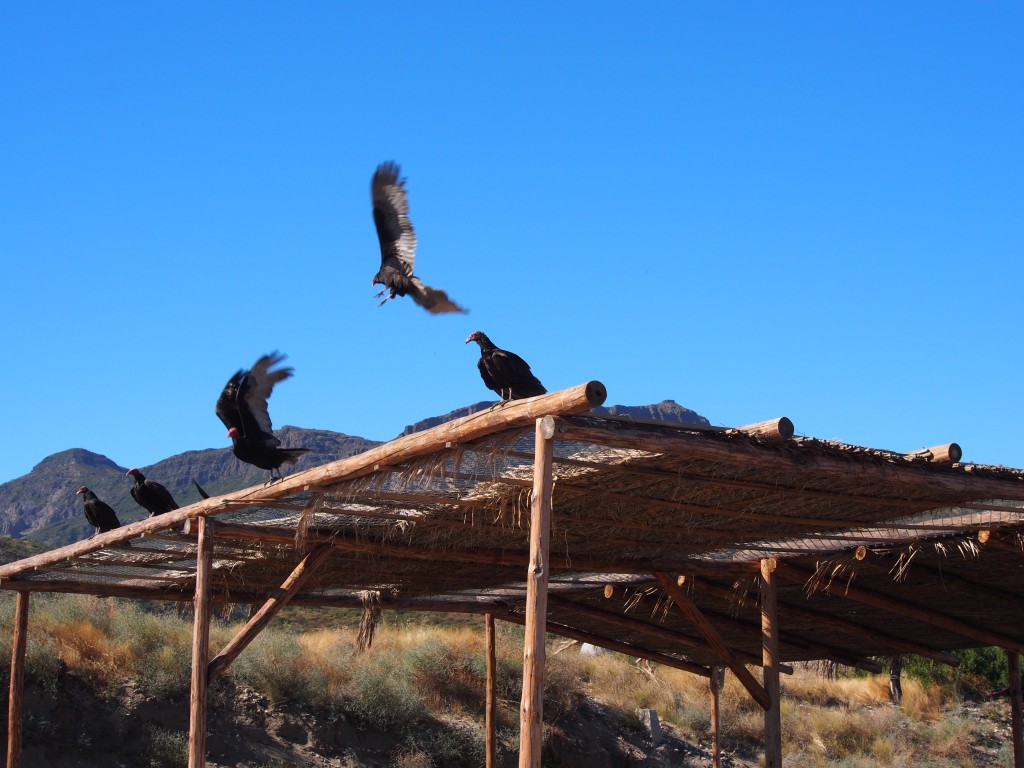
Isla San Jose—Another hour north from Punta San Evaristo is an anchorage on Isla San Jose called Mangle Solo. A highlight of this anchorage is the large carson cactus forest. These cacti can grow to 70’ tall and 4’ wide. Natives use the flesh of the cactus for its healing properties and the long straight ribs for fences and beams for housing. I did some snorkeling around the boat and removed some barnacles that had accumulated in the thru-hulls and bow thruster. We spent the night, then up-anchored after breakfast and motor-sailed to Isla Coyote.
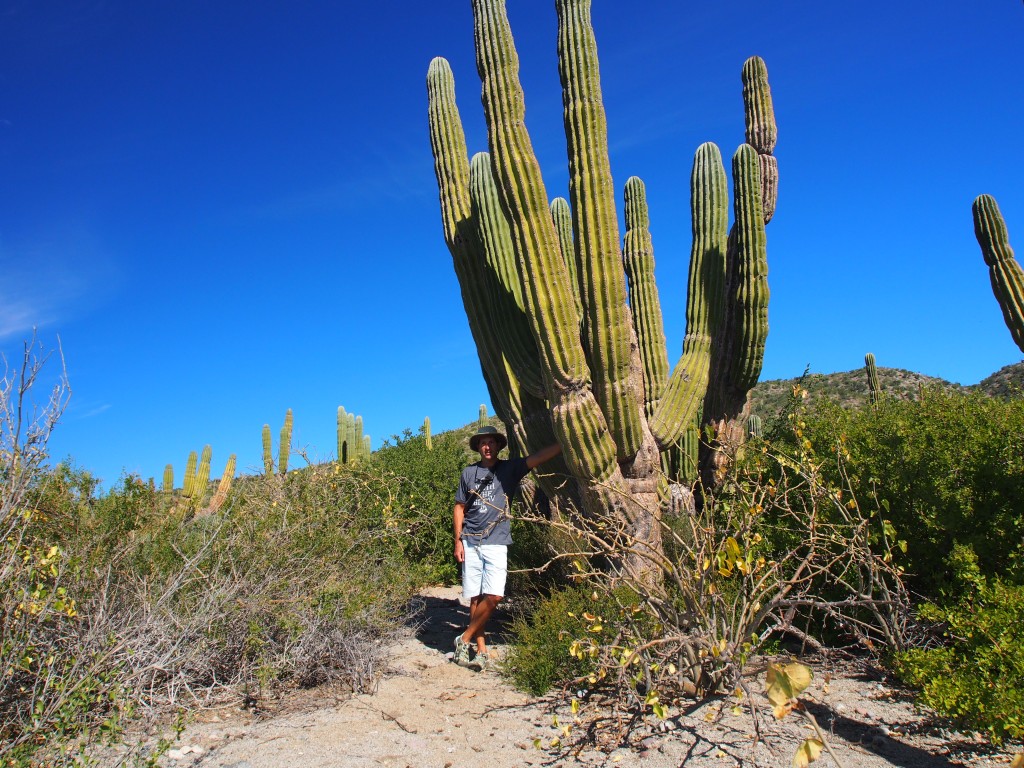
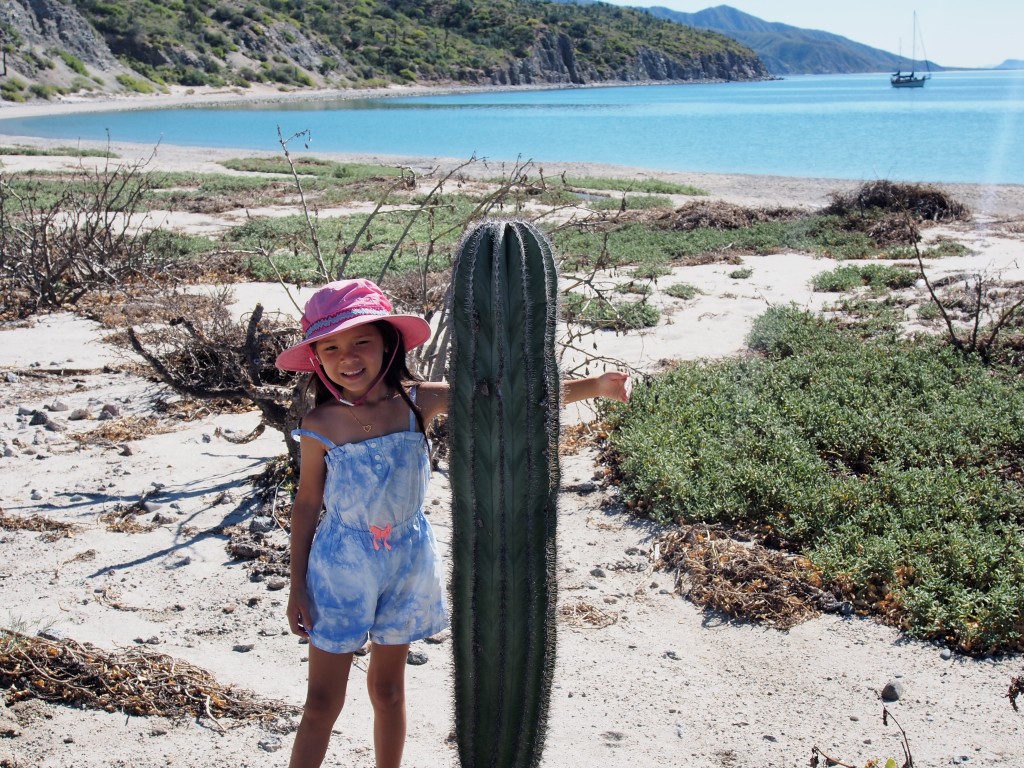
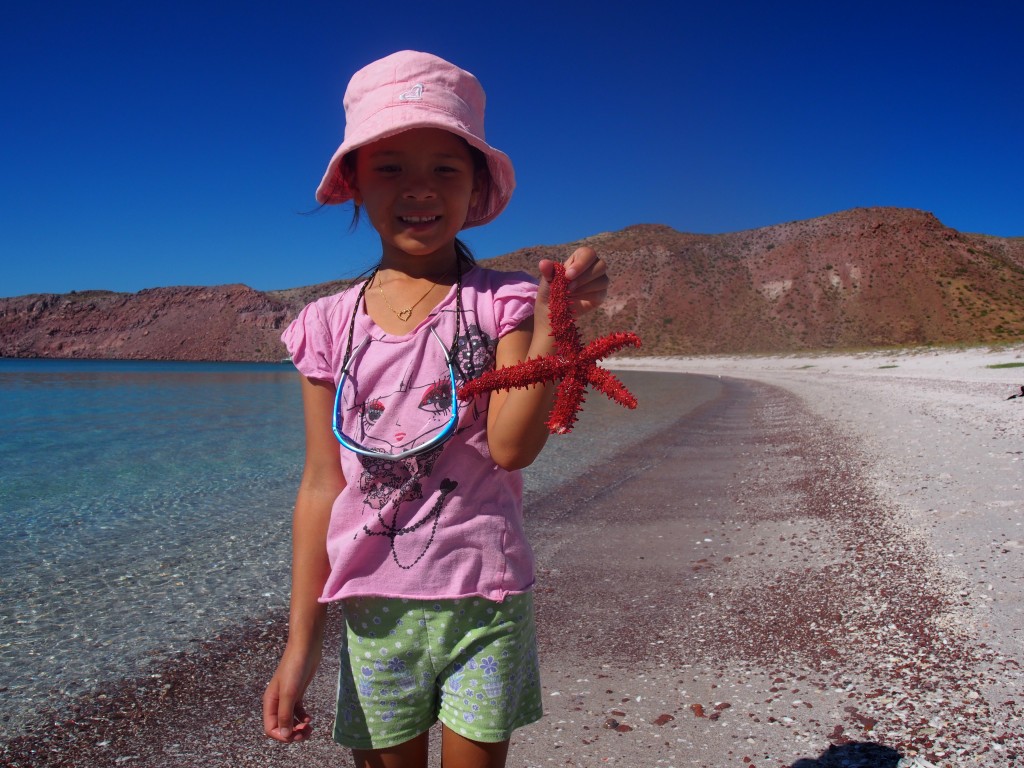
Isla Coyote—Half way between Isla San Jose and Isla San Francisco is a tiny rock island with a few houses. We anchored in 30’ of clear water and took the dinghy ashore. We were greeted by a friendly fisherman who gestured for us to go up the steep path where houses were built into the rock. At the very top was a small building that looked like a chapel. Jacintha picked out a shark-took necklace from a woman who was selling hand crafted jewelry from her porch. Her friendly husband came out and we attempted to have a conversation. We pulled out our spanish phrasebook and he got an atlas so we could show him where we are from and where we are going. The men on the island fish for a living so we bought another large Trigger Fish for 50 pesos ($4). Back at the boat, Karen found a Greek stye fish recipe using tomato, herbs, onions, goat cheese, and lemon and served it with a Greek salad and rice.
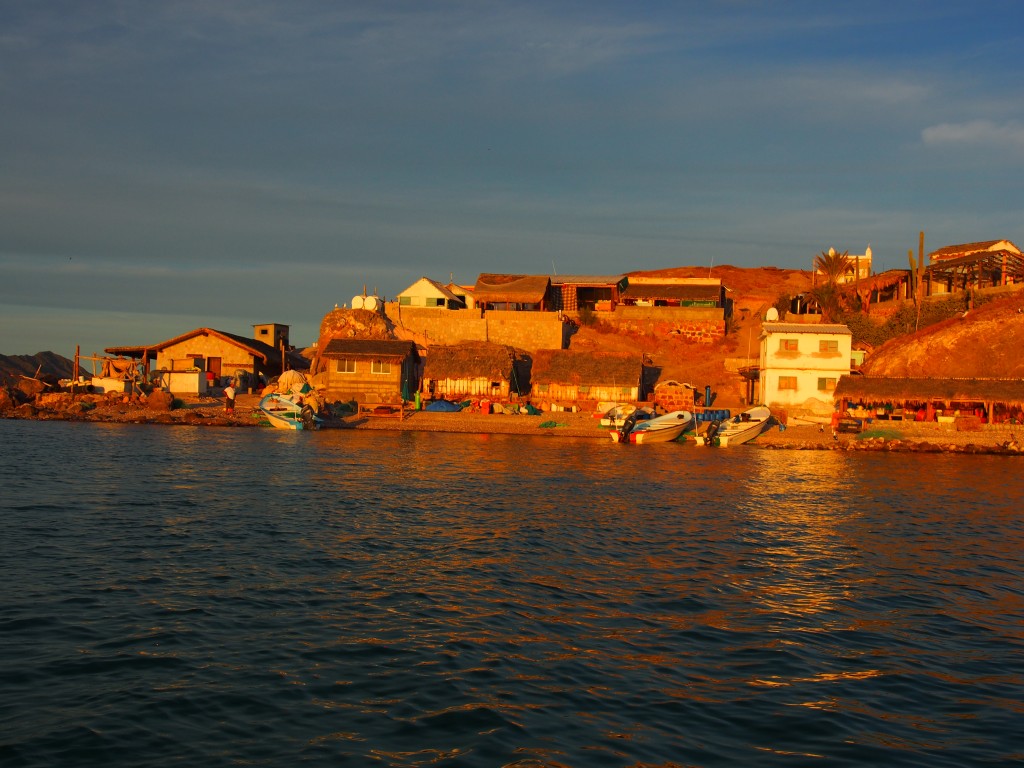
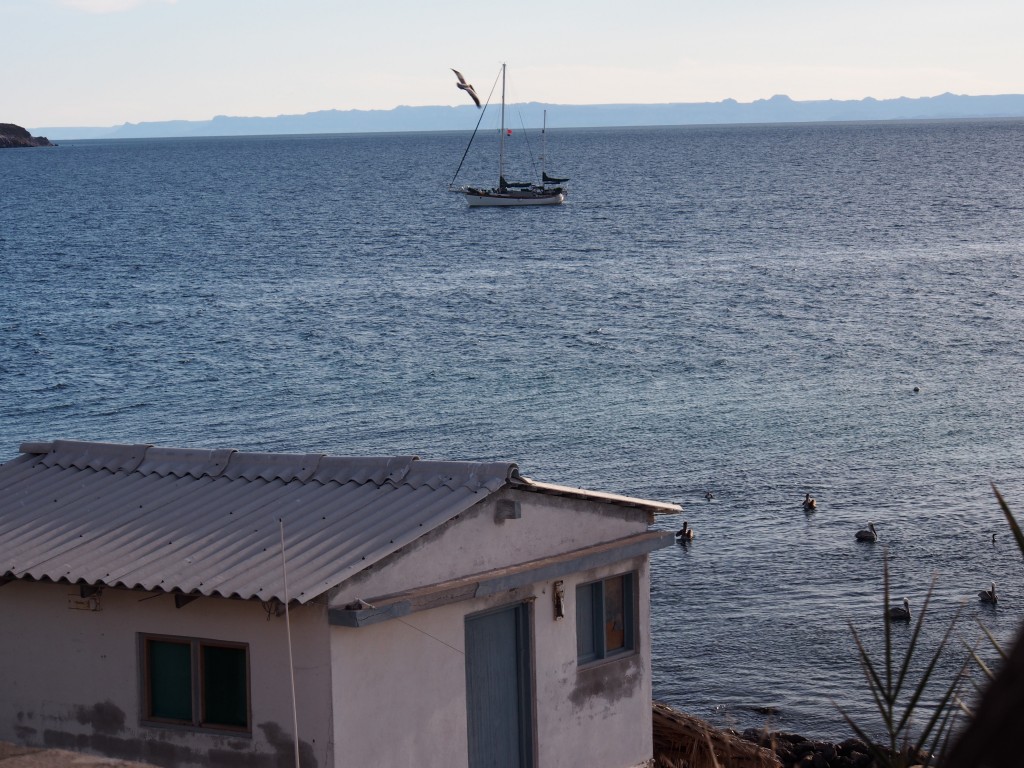
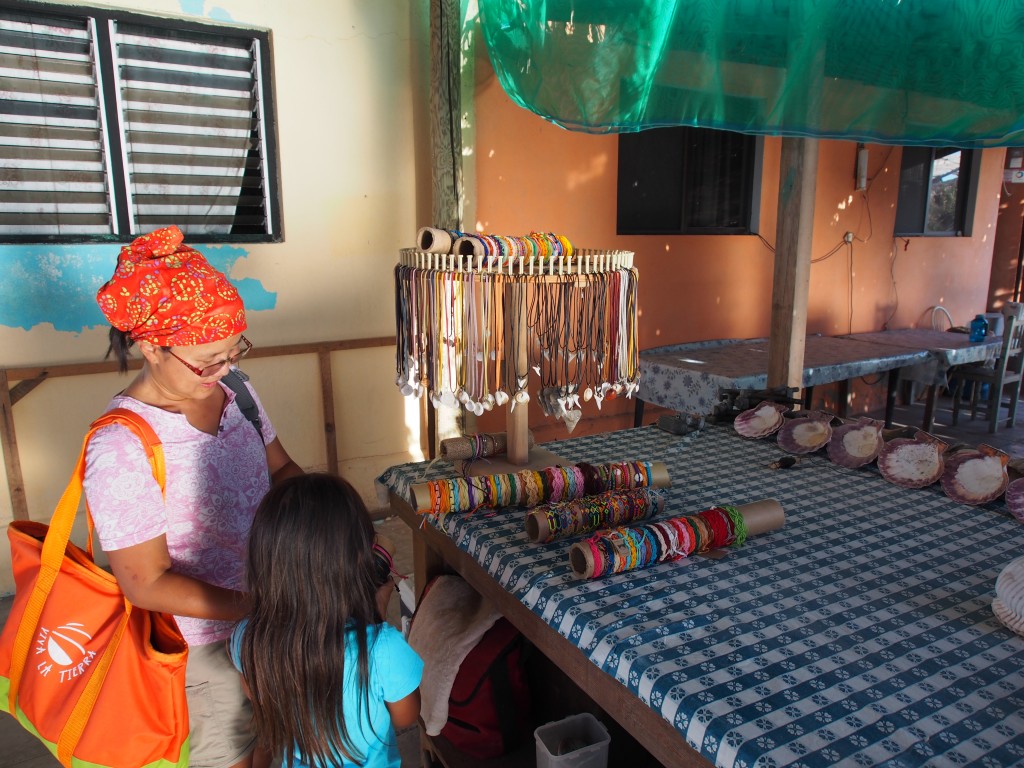
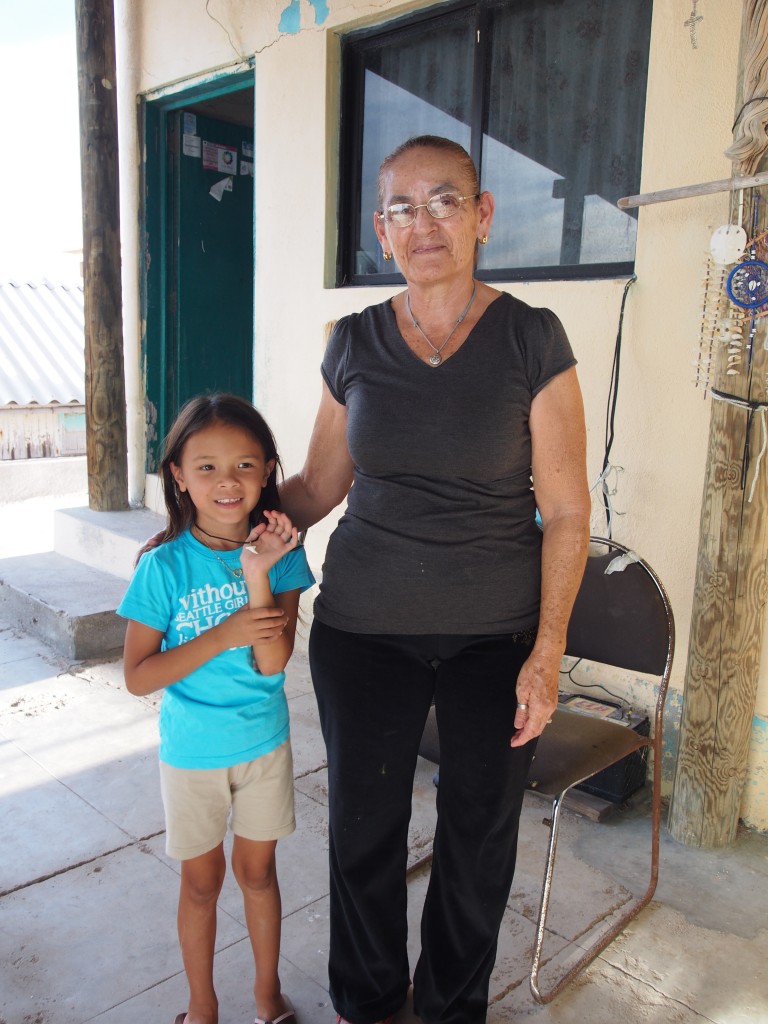
Back to La Paz—We were planning on a 2-day sail from Isla Coyote to La Paz, but woke up to a strong northerly and ended up sailing the entire 50 miles, getting in just before dark. Almost the entire sail was in 20 knot winds and steep, lumpy seas. The genoa was enough to keep up moving at 7 knots most of the way. As we neared La Paz and the wind decreased, we pulled up the mizzen sail and sailed all the way through the La Paz channel.
The past 10 days of cruising in the Sea of Cortez were very enjoyable. It felt great to be self-sufficient in a number of ways:
- Meals—There were no restaurants! We provisioned in La Paz before departing, and found just one small tienda along the way. We didn’t have any luck fishing (aside from a small puffer fish I caught while jigging at anchor), but were able to buy some great tasting Trigger Fish from local fishermen.
- Energy—We only used the Honda generator once when anchored in Ensenada de la Roza on Isla Espiritu Santo for 2-1/2 days. The rest of the time, the solar panels would do their job during the day, and the engine driven generator would make up for the evening’s lost Amp-Hours when we motored the next day.
- Water—The Spectra watermaker has been working great. Whenever we motor, we make water. We start by filling up a 5 gallon plastic container that we use for drinking. This lasts around 3 days and we use it for making coffee and tea and to fill up drinking bottles that we keep in the refrigerator. Then we switch the watermaker output to the water tanks in the bilge. This water is used for cleaning dishes, brushing teeth, filling solar shower bags, and doing laundry. The only salt water that comes into the boat is for the head. We’ve been running the watermaker every other day for 2 to 3 hours, which makes 32 to 48 gallons. So far the only maintenance has been to replace the paper filter once, and I brought a dozen along on the trip.
- Laundry—A lot of our clothes are quick-dry type (my years of running races got me a locker full of tech shirts!). We have 2 8-gallon buckets we use to launder our clothes—one for washing and one for rinsing. Plenty of lifelines and good clothespins (some old fashion wooden ones and some stainless steel ones where you go Oh shit! when one falls overboard). A laundry plunger is used for the wash cycle. We get by by washing just the lightweight, quick-dry things and leave the cotton shirts and towels for when we find laundry service. We use the leftover water to rinse the salt off the cap rails, gunwales, and coach top.
We also kept life pretty simple—no cell phones, no internet, no media (an occasional email via SSB was our only contact with friends/family). When we weren’t out exploring, we read a lot, played games, and did a few boat chores.
Jacintha’s Blog:
Make New Friends–Rrrrrrrrrrr! went the dinghy engine. Me, mommy, and daddy were going to San Everisto in our dinghy. We brought crayons, paper and a water football for kids we found at Everisto. Once we got there, we parked at the beach. Then a five and a two year old caught up with us. We tried to talk but too bad they spoke Spanish. Luckily we had a Spanish book. After a little bit of talking, we gave them the crayons and ball. The next thing I knew I was playing catch with the five year old girl. Then mommy and daddy left us to play. We found a trigger fish and a puffer fish. After that we did a little bit of coloring, then my new friends had to go to La Paz to sell fish. So I looked for my mom. When I found her I found a dog who caught rocks you throw in the water. The end.
Near-Darwin Acts
[pin 4320] We find ourselves sometimes doing stupid things and decided to poke fun at ourselves by including some in the blog. So far, they haven?t resulted in anything too bad and are only slightly funny when looking back. Near-Darwin Act #1?The other day after we departed from La Paz, I noticed the knot log was reading 0. The knot log is a mechanical paddle device located on the outside of the hull below the water line. It spins as the boat moves and gets converted to a digital signal that?s displayed on a Simrad gauge. Earlier on the trip when the log was reading 0, I dove under the boat and cleaned some barnacles off the paddle to fix it. After talking with another cruiser, I learned it can be done from inside the boat by removing the device, which is located in the bilge. So while we were underway, I decided to remove and clean it. After I removed a pin, I unscrewed a cap ring that I shouldn?t have, and pulled out the paddle device. A joker valve (one-way valve) protects water from coming in when the paddle is removed, but since I unscrewed the cap ring, the joker valve popped out. At that point I could see bright light and a 2-foot geyser of water was coming into the boat (Jacintha thought it to be quite funny). No problem I thought, I can cover the 2-inch diameter hole with my palm and put things back together. Unfortunately, the joker valve got washed away somewhere inside the bilge. I at least stopped the water from coming in, but couldn?t move around to look for the part, so I called Karen who was at the helm. After we found the part, inserting it back into the hole with a heavy stream of water shooting up was a challenge. The bilge pumps did their thing and we finally got everything put back together. Once the joker valve was back in place with the screw cap holding it, I was able to clean the paddle and when all was put back together, the knot log worked again. In hindsight, I should have practiced this last summer when the boat was hauled out, then I would have seen how all the parts work and would not have unscrewed the cap ring. But then I wouldn?t get Near-Darwin Award #1. Near-Darwin Act #2?We were at a boat store in La Paz looking for a gas can spout to replace the one that came with the can. The spout has a special spring-loaded mechanism that is activated when pouring the gas by pushing the spout against a tank or whatever it?s being poured into. So at the boat store I was trying to figure out how the mechanism worked by blowing air into it without pushing the spring-loaded mechanism, then by pushing it. Unfortunately for my lips, I let go of the mechanism while blowing into it and my lips were now caught in a trap-like device. Five days later and I?m still reminded of this near-Darwin act every time I drink a Margarita with a salted rim!
Bahia de las Muertos
Just 2 day-sails from Cabo, we found a little bit of paradise in Bahia de las Muertos. We anchored with around 10 other boats in warm, crystal clear water where you can watch your anchor drop to the sandy bottom 30’ below. This is a fairly remote area of the Baha peninsula and has just 1 restaurant and a small resort. The snorkeling was great, the food fantastic, and we were among friends from the Baja Ha Ha rally (“kid” boats as well as boats from Seattle), so we decided to spend some extra days since we were in no hurry to go anywhere. The white-sand beach with big dunes provided an afternoon of relaxation and fun for the kids.
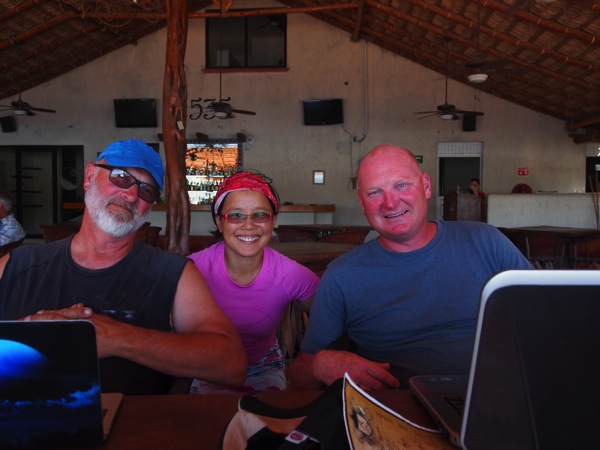


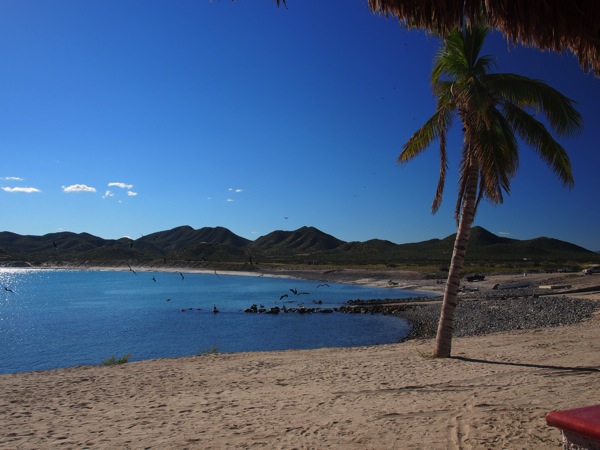
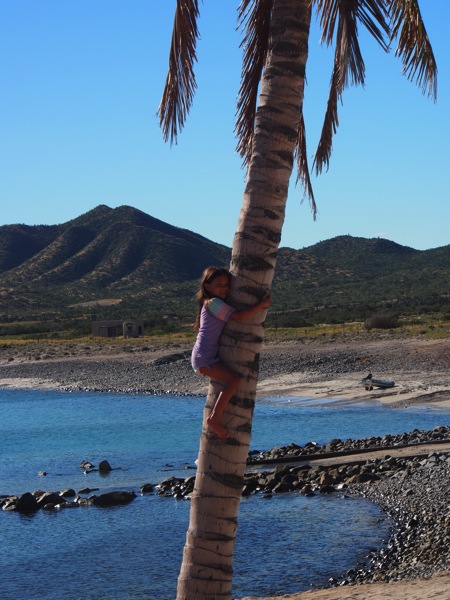


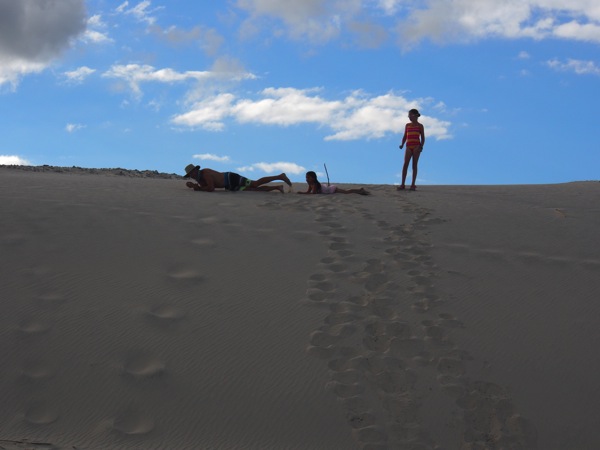
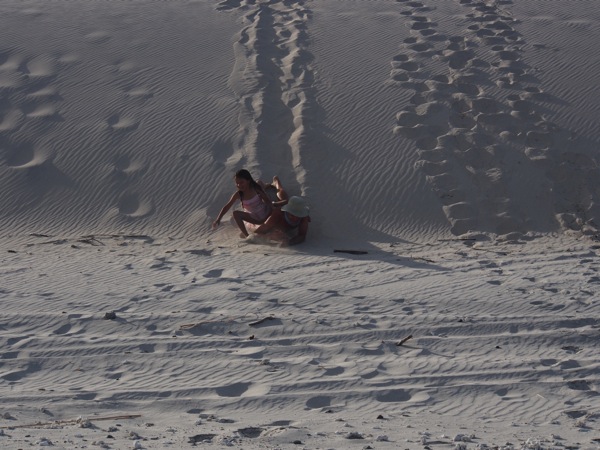
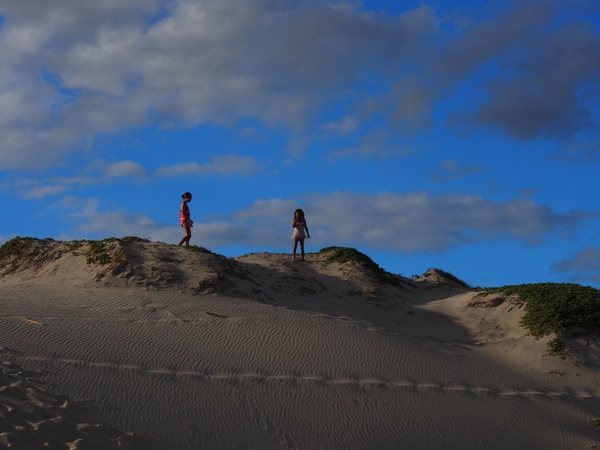

Fishing—So far we haven’t had too much luck fishing. Aside from an Albacore Tuna off Oregon, a Striped Bass off Catalina Island, a Skipjack Tuna in Mexico, and a Needle Fish that happened to land on deck, fishing has been a challenging experience. Determined to change our luck, I rigged up 2 more hand lines so that I towed 3 lines–2 with squid lures and 1 with a cedar plug, and then even brought out a rod and reel with another lure. We trolled with this setup from Cabo to Bahia Friars, a 45 mile sail. When we pulled into the small bay at night, it was very dark and was already packed full of boats. Our minds were occupied with figuring out where to anchor, a big challenge at night, and we forgot to bring in the fishing lines. As I was backing down on the anchor with 100’ chain out, one of the fishing hand lines got fouled in the propeller! Since we were pretty sure we would hold for the night, I waited for morning to dive down and cut the line away from the shaft. I used the Hooka diving gear so it was actually fun (plus the water was 80 degrees)!
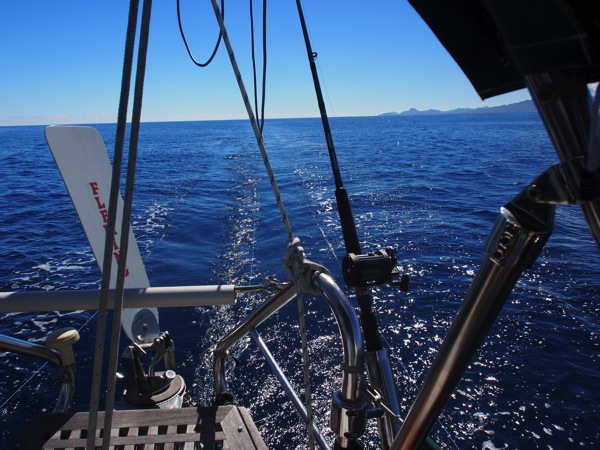

Photos from Baja Ha Ha rally (San Diego to Cabo)
The Baja Ha Ha is a 10 day rally from San Diego to Cabo San Lucas. There were about 140 boats that completed the 750 mile ‘course’ to the Cape. The rally is sponsored by Latitude 38 magazine and this was the 21st year. While out at sea, boats keep in contact through twice-a-day nets on VHF and SSB radio to report positions. VHF was also used to report fish catch, wind and sea state, or just to say hello to a nearby boat at 3am. There were 2 stops along the way–a remote village in Bahia des Tortugas (Turtle Bay), and a quiet bay in Bahia Santa Maria. A fun beach party potluck was held at Turtle Bay with lots of fresh fish caught along the way adobe cc master collection for mac pouvez trouver sur cette page. At Bahia Santa Maria, they brought in a small band that played rock and roll during the party. Some cruisers relaxed on the beach while others hiked in the rocky hills. The comraderie of the fleet was amazing and we got to know the crew from other boats, especially “kid” boats. We also kept in contact with other Seattle boats including Mabrouka, Andante, Friday, Abby Normal (the same boats that left with the Cojo Ho Ho with us from Anacortes).
Here are some pictures we took along the way….
